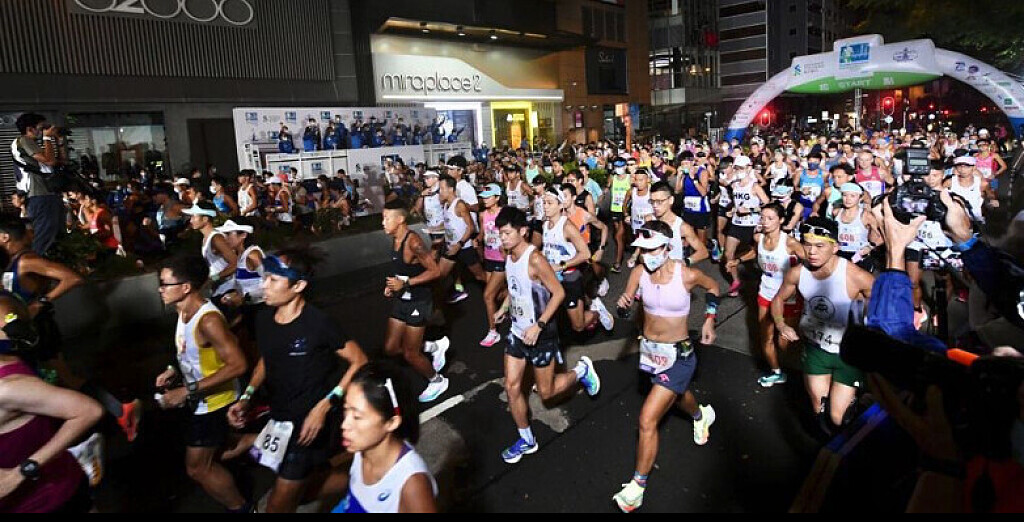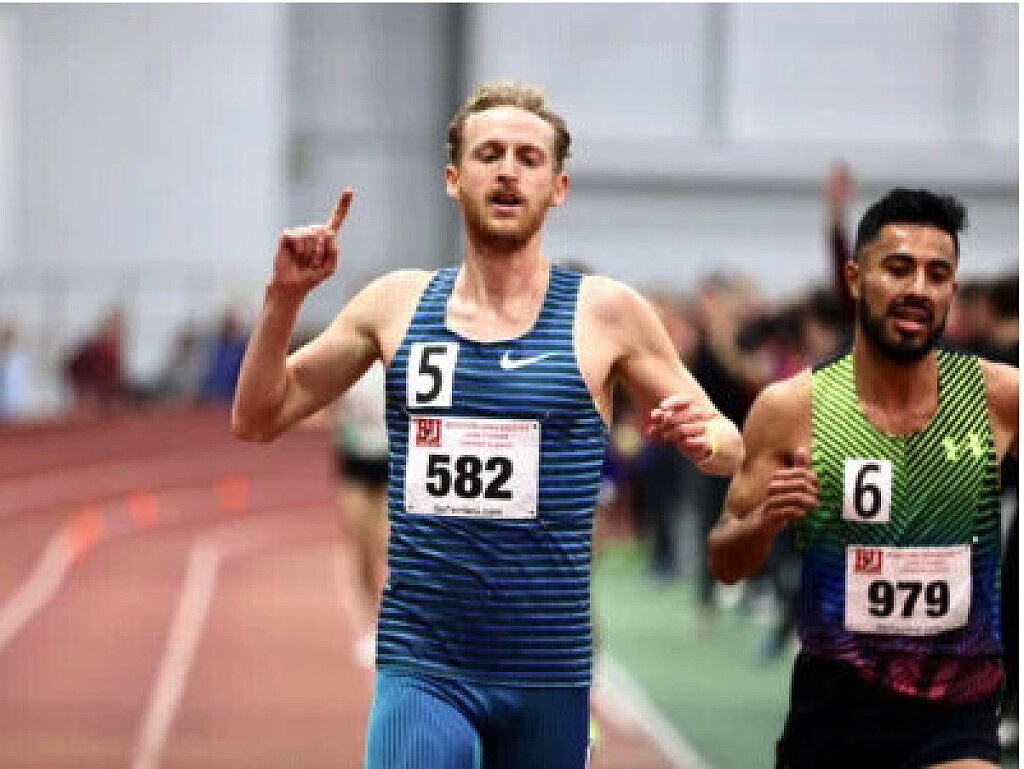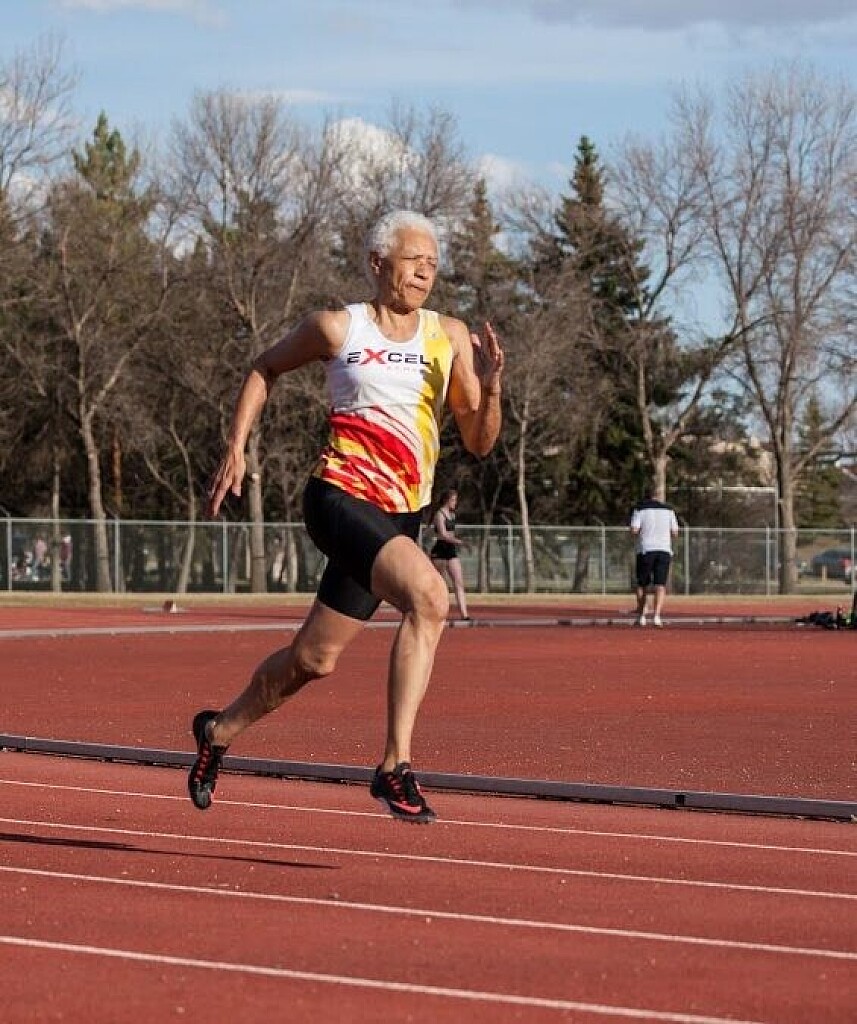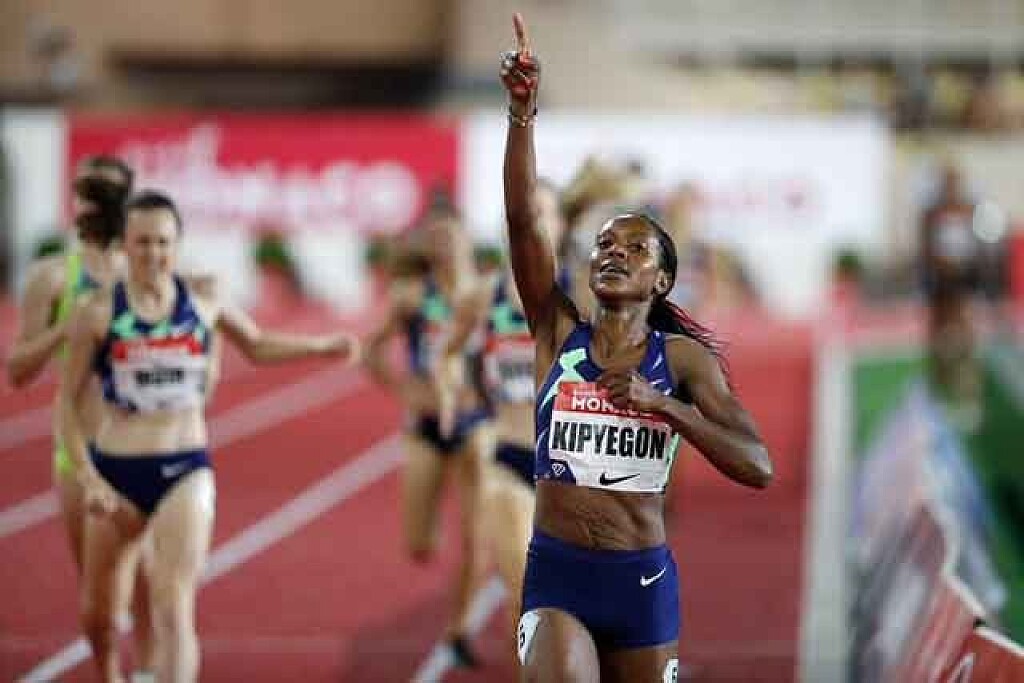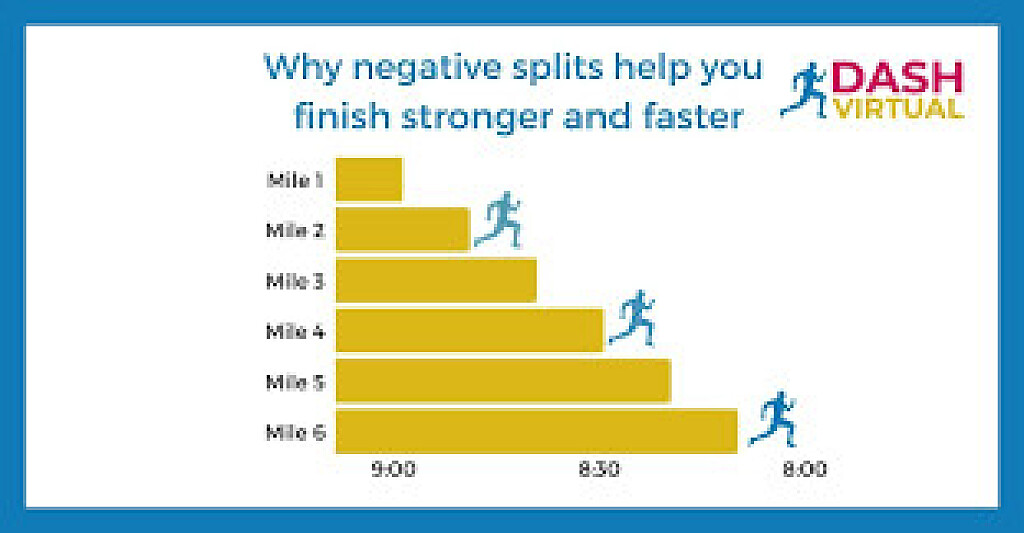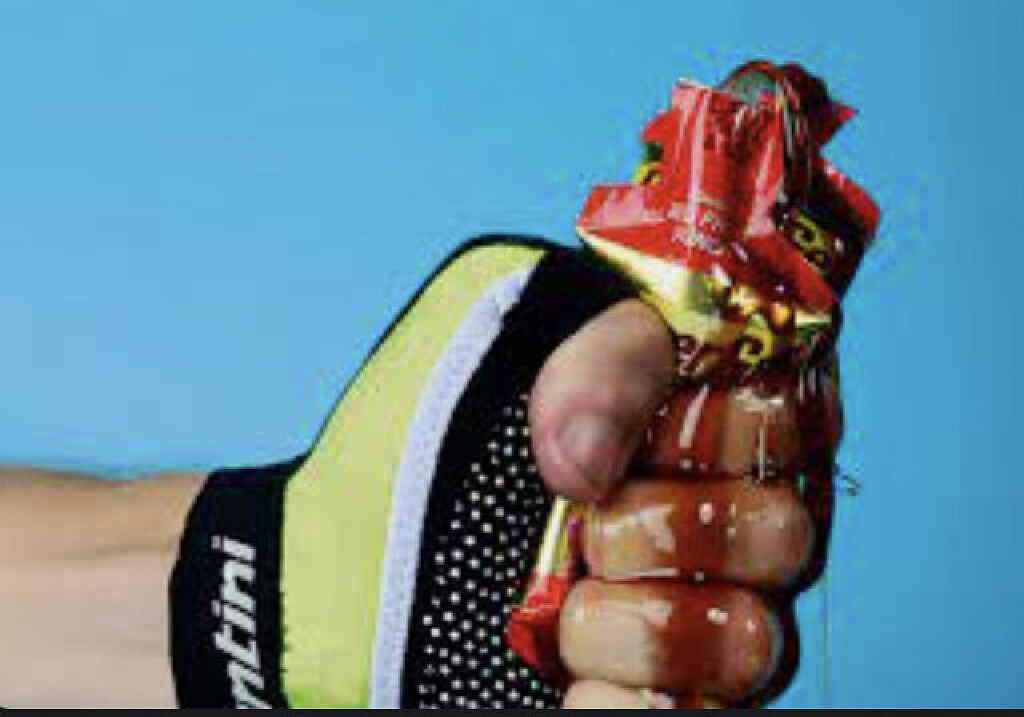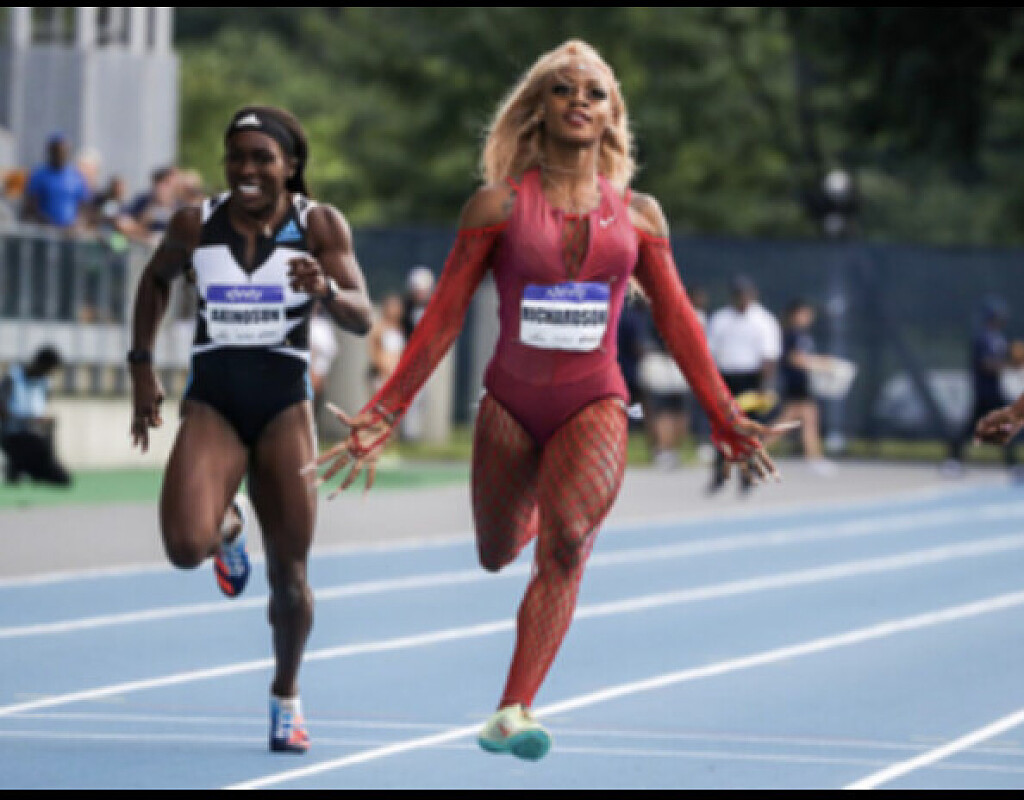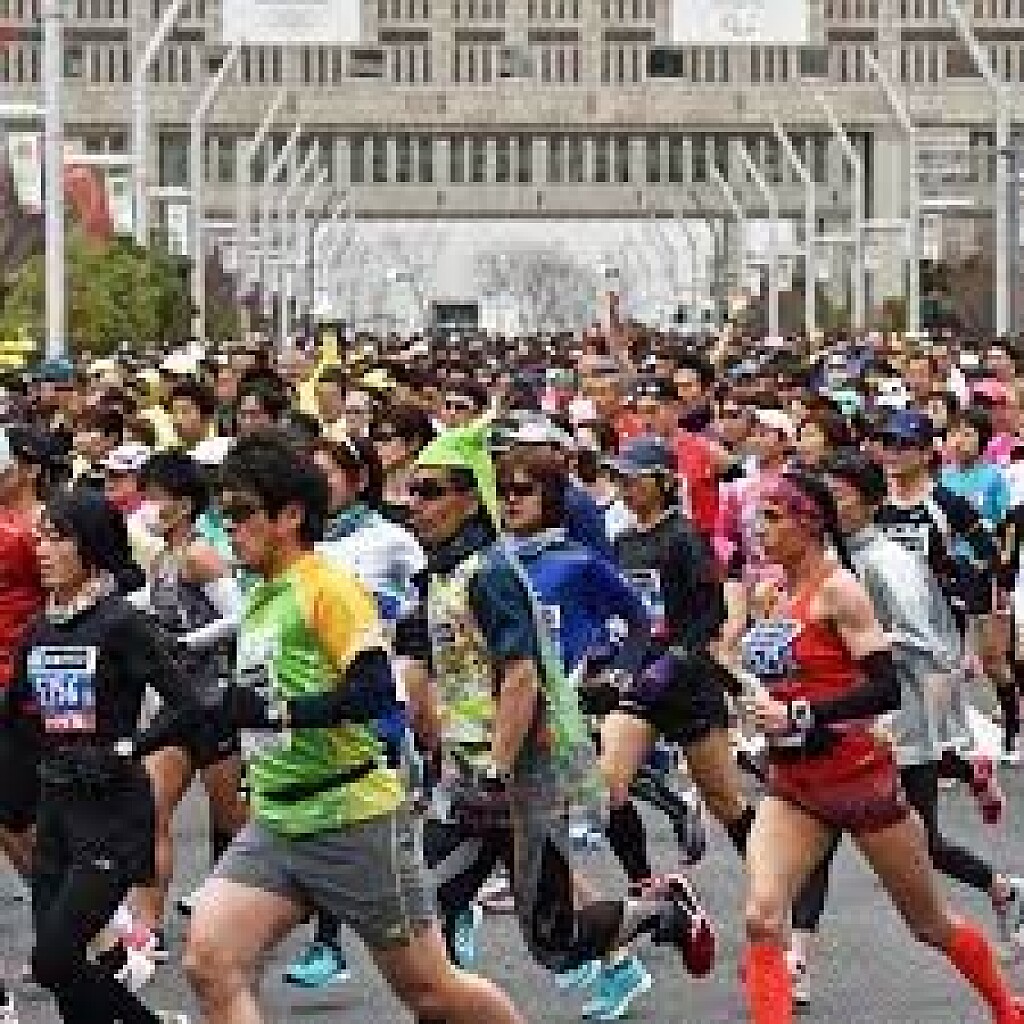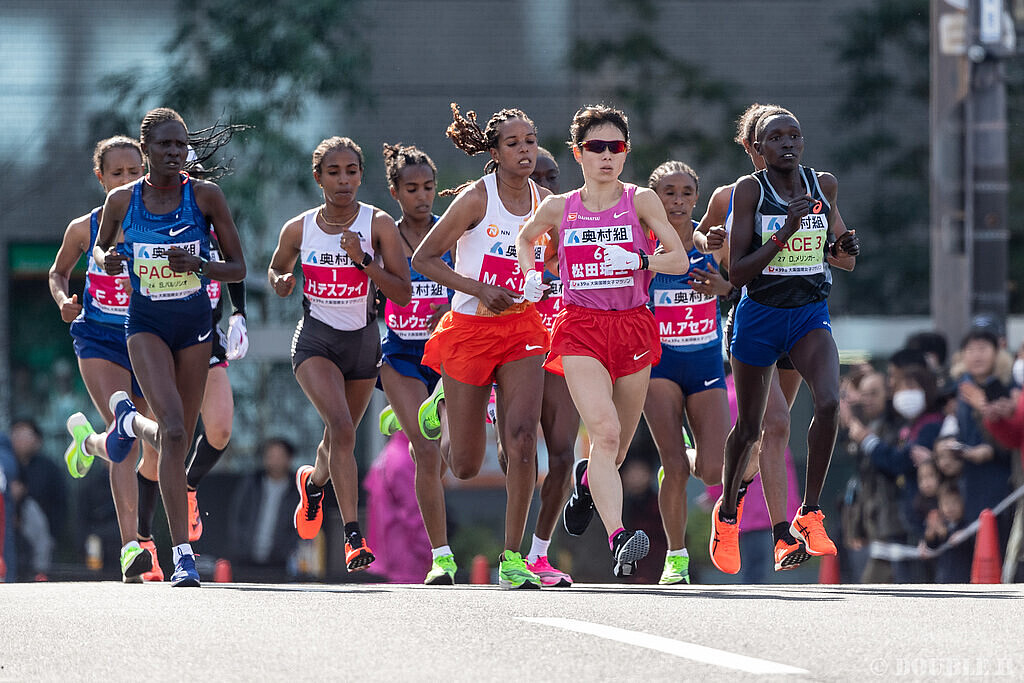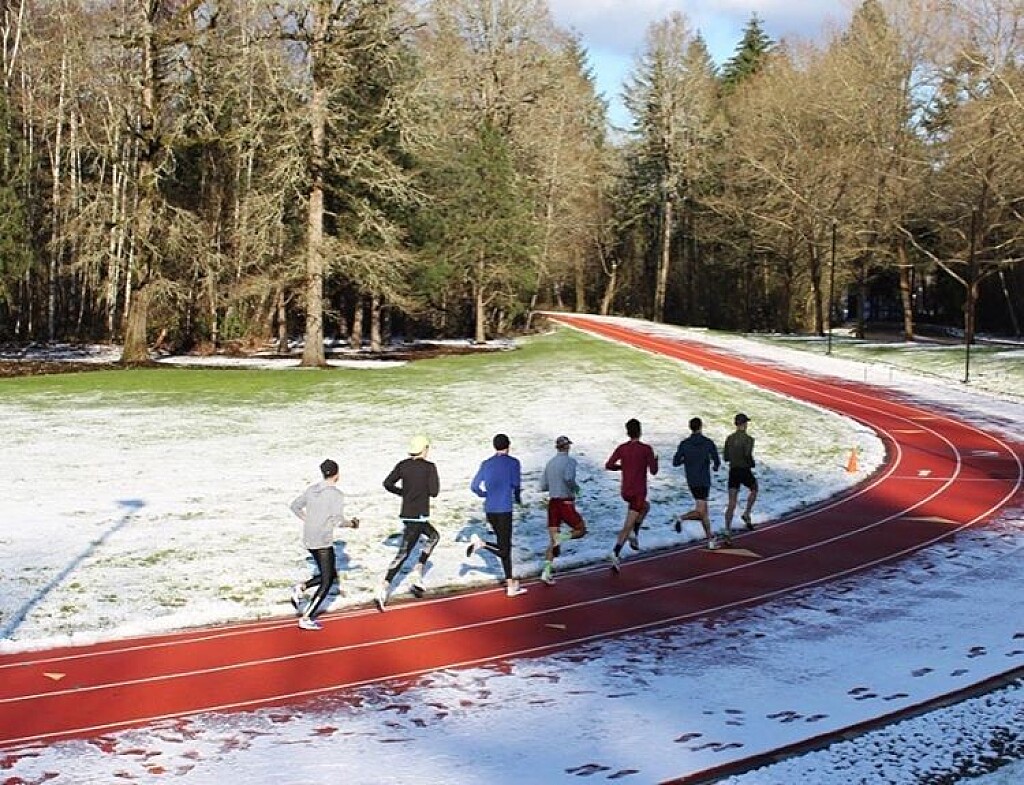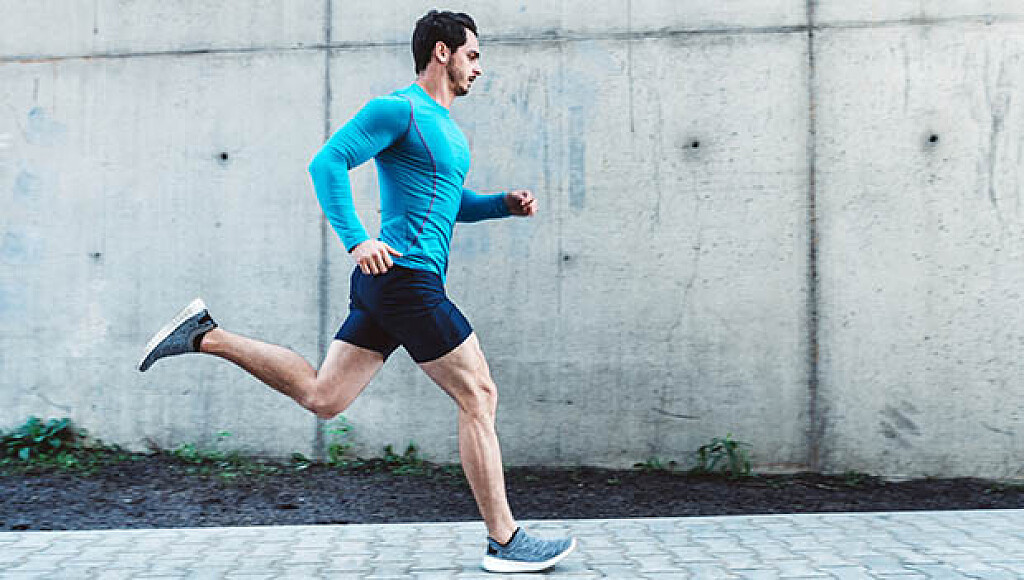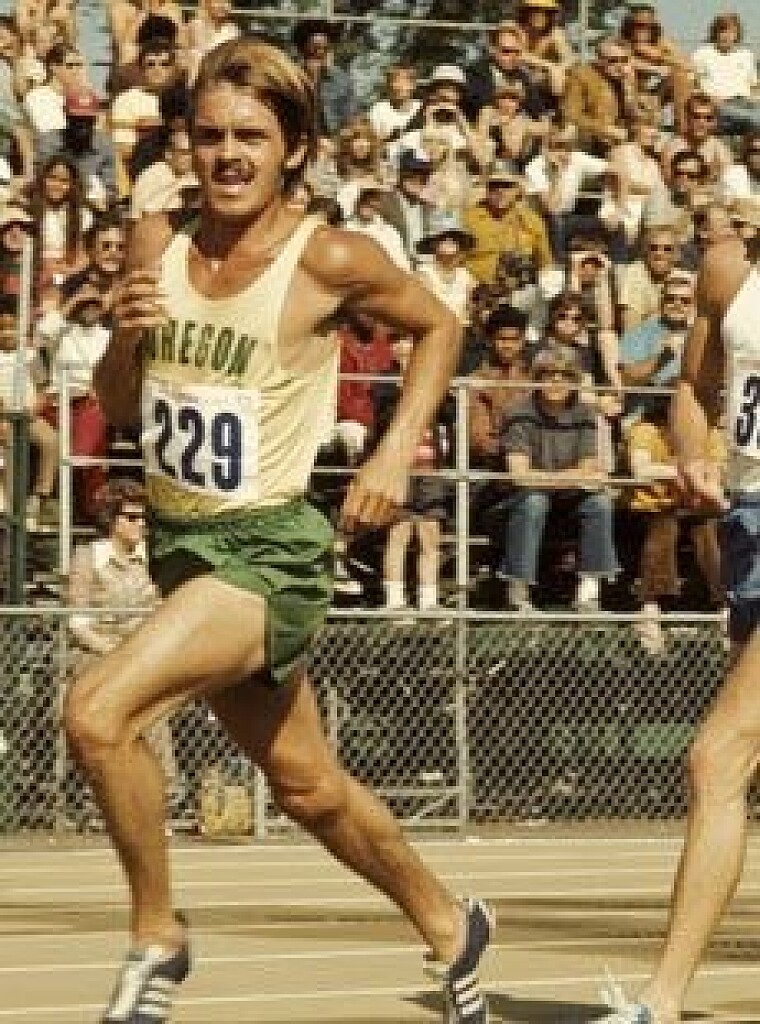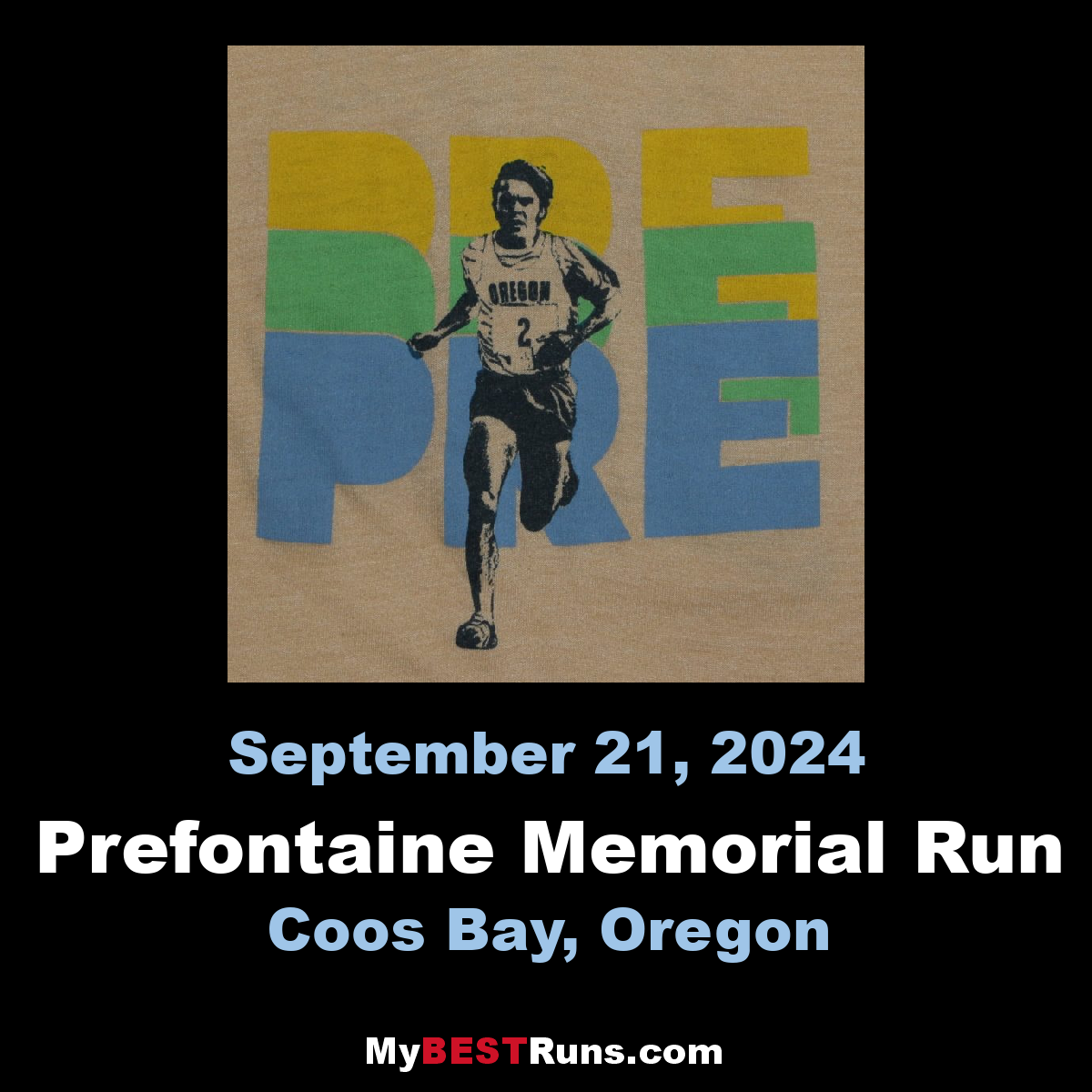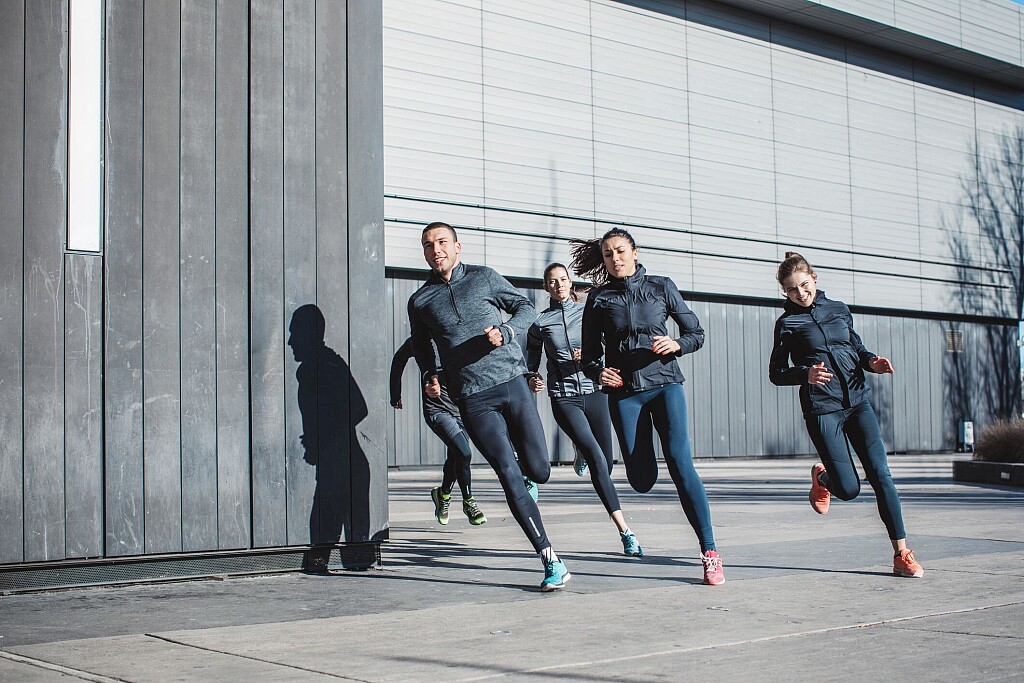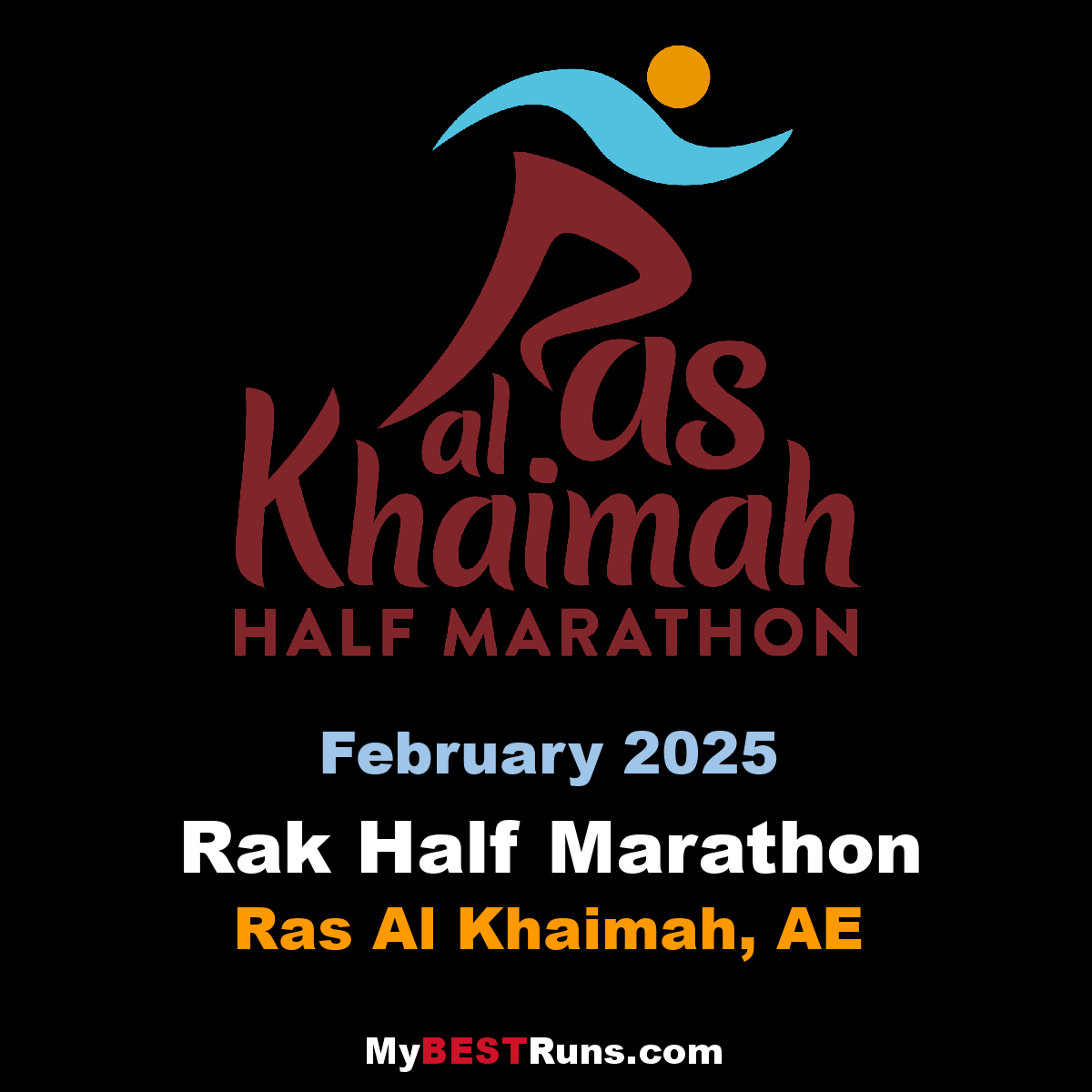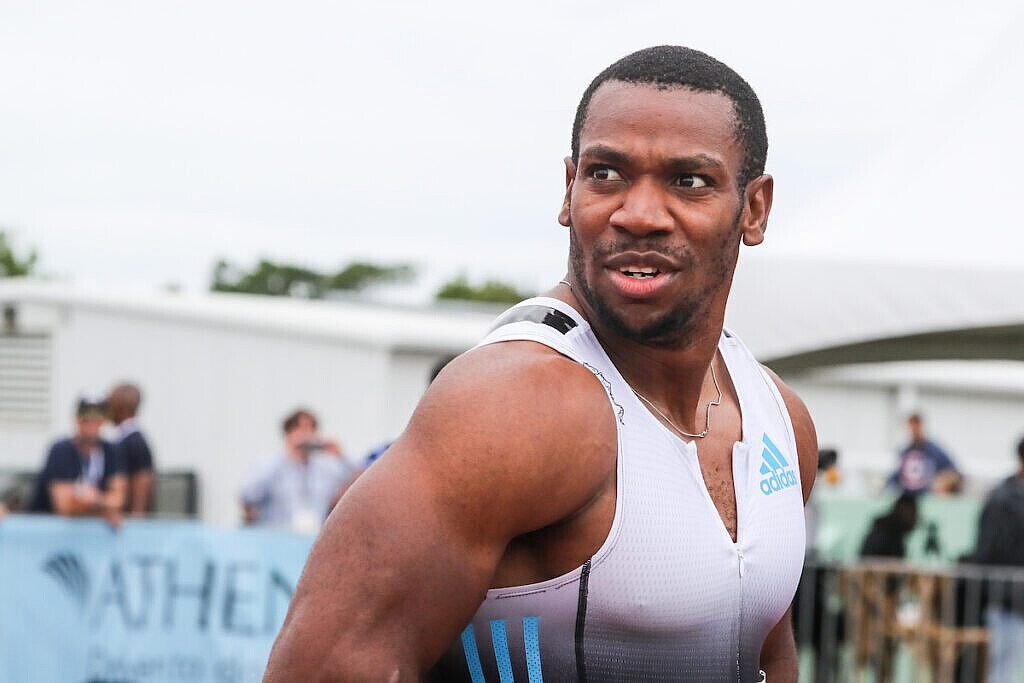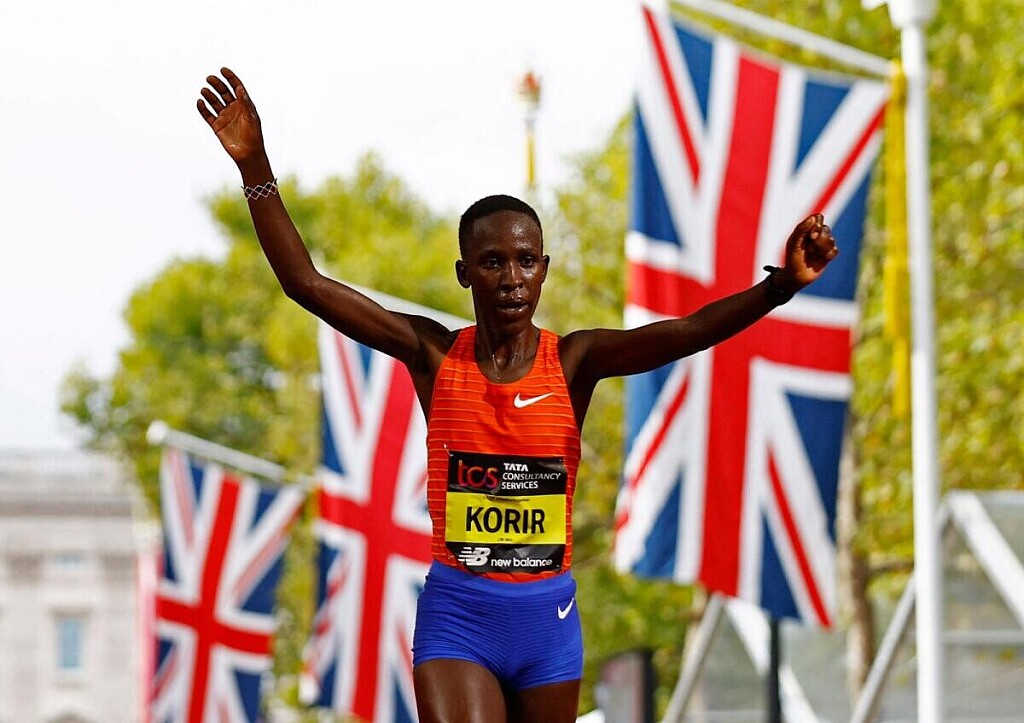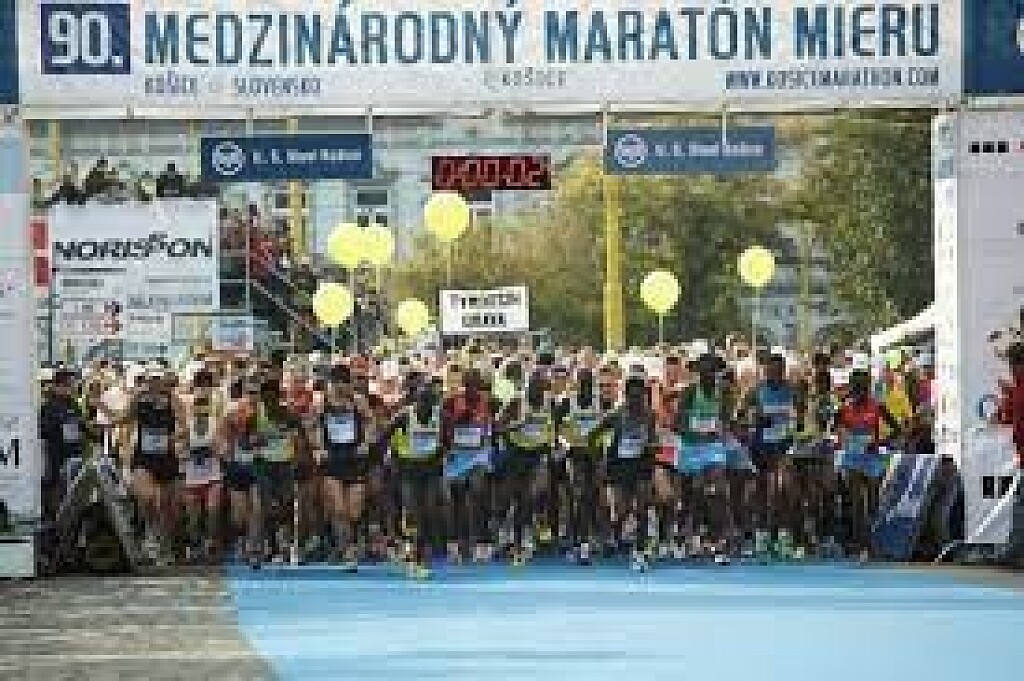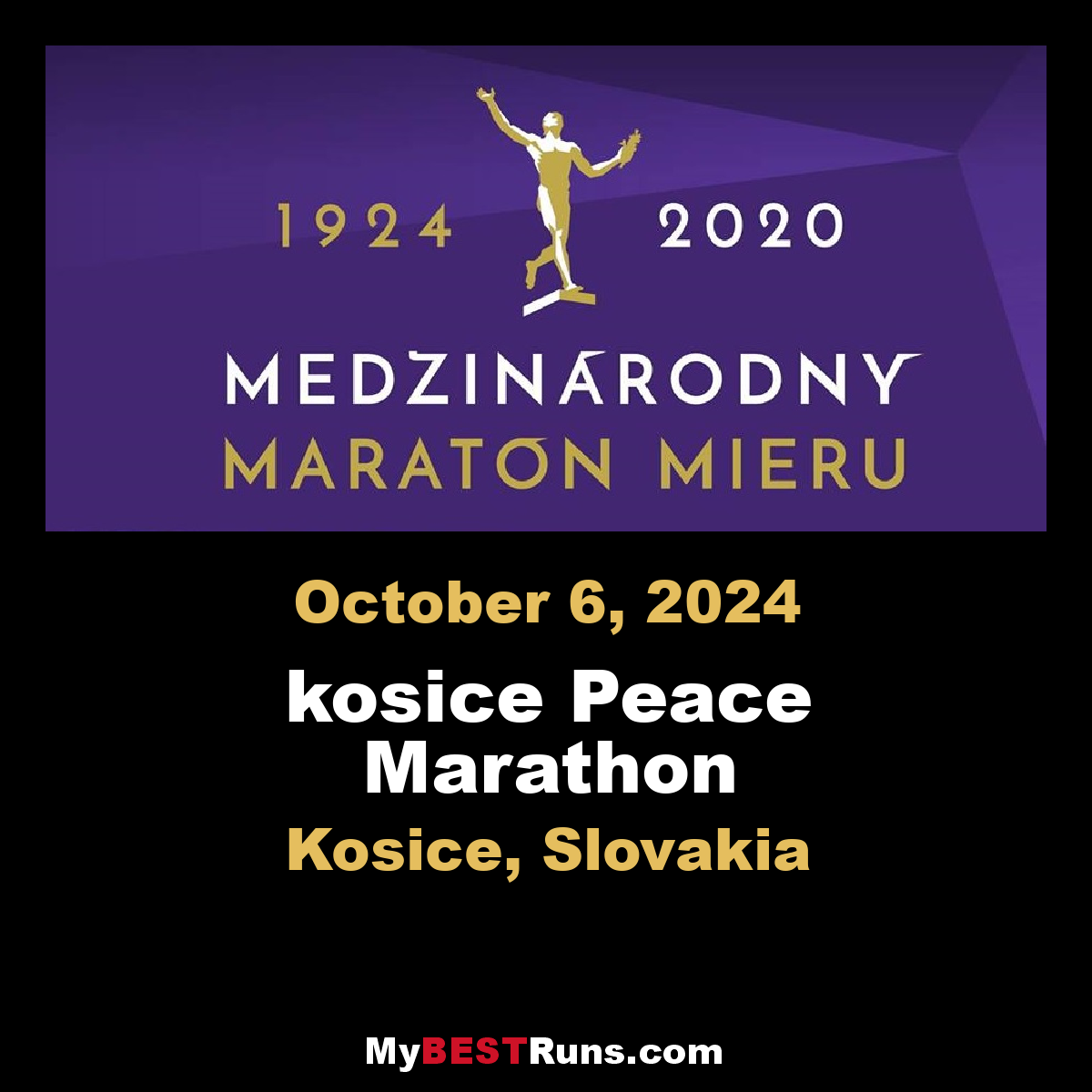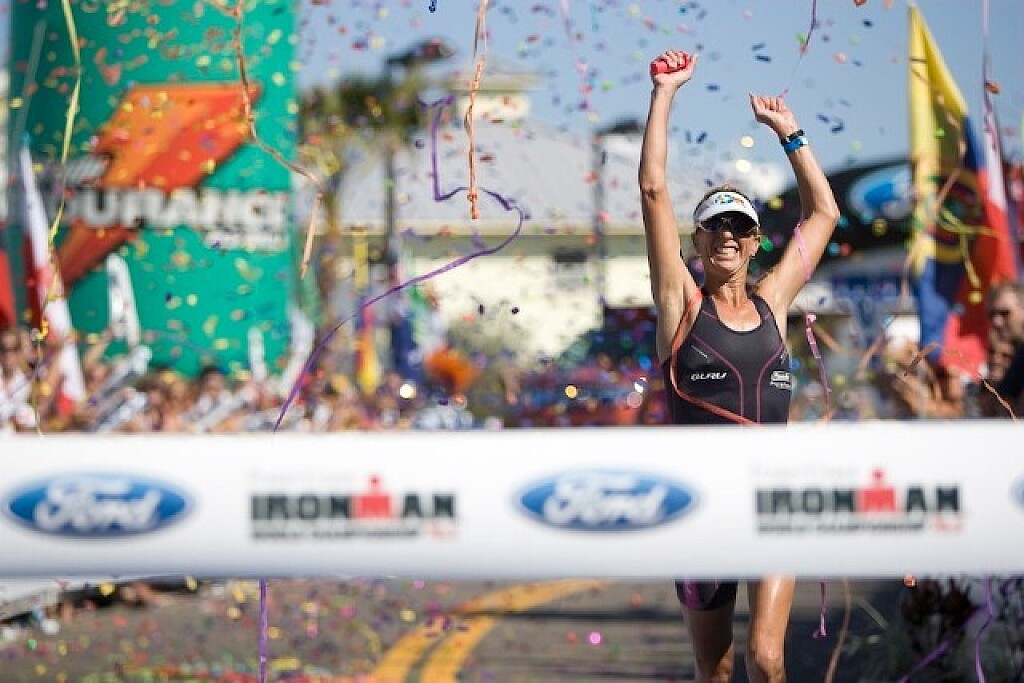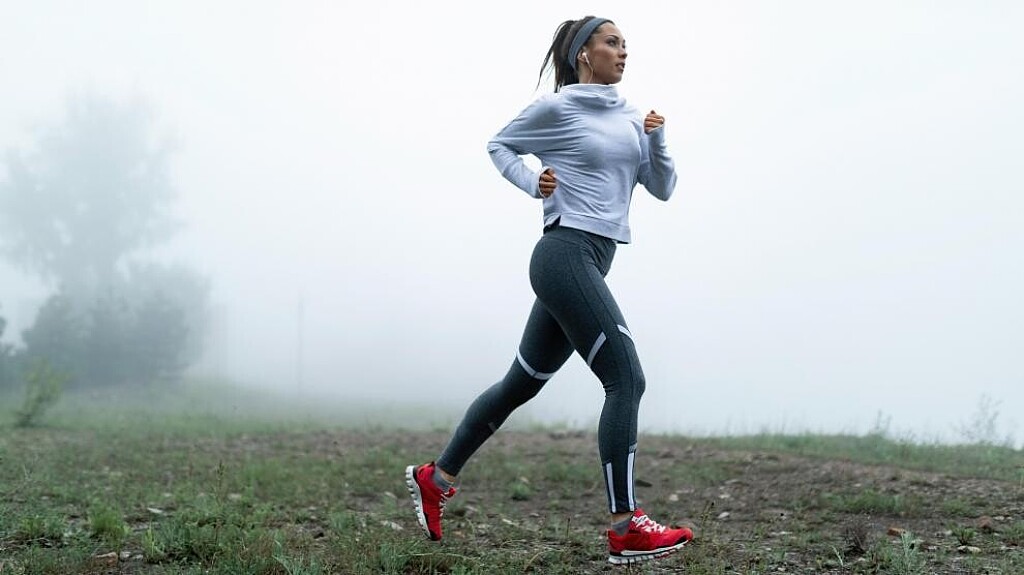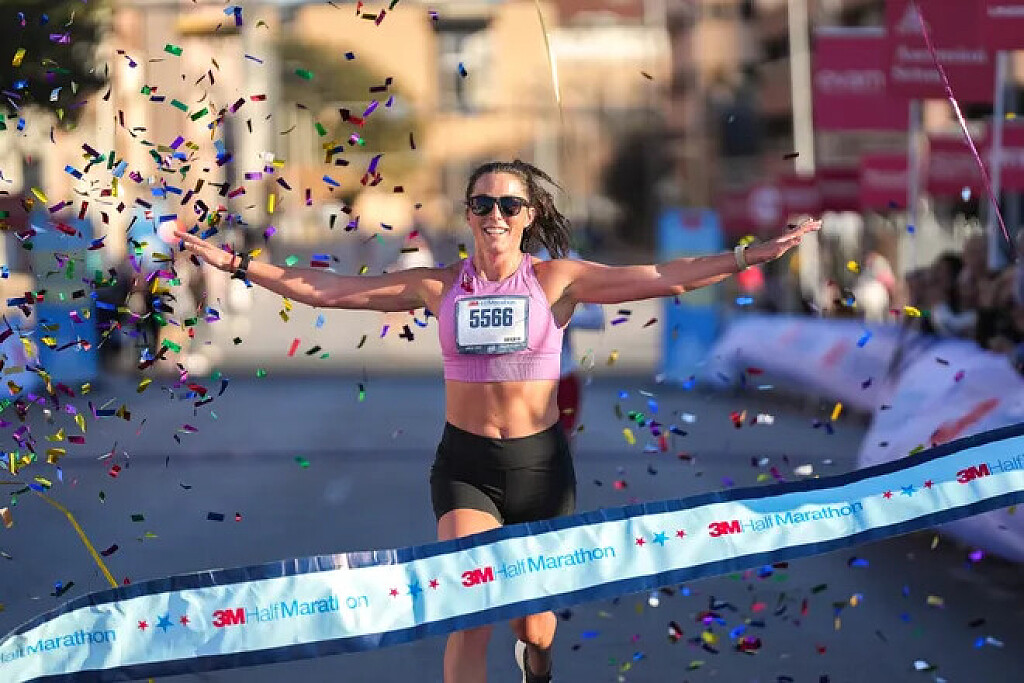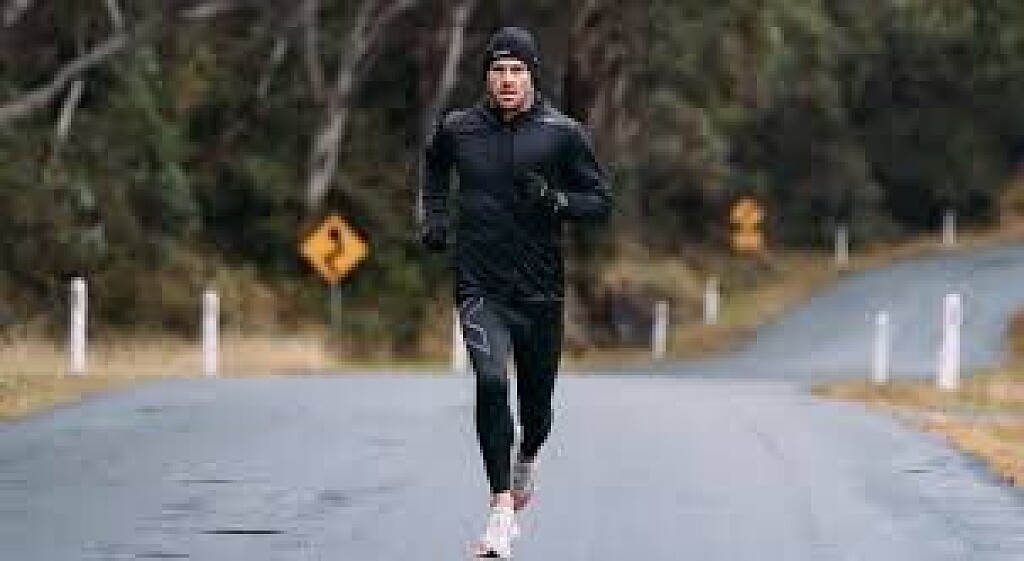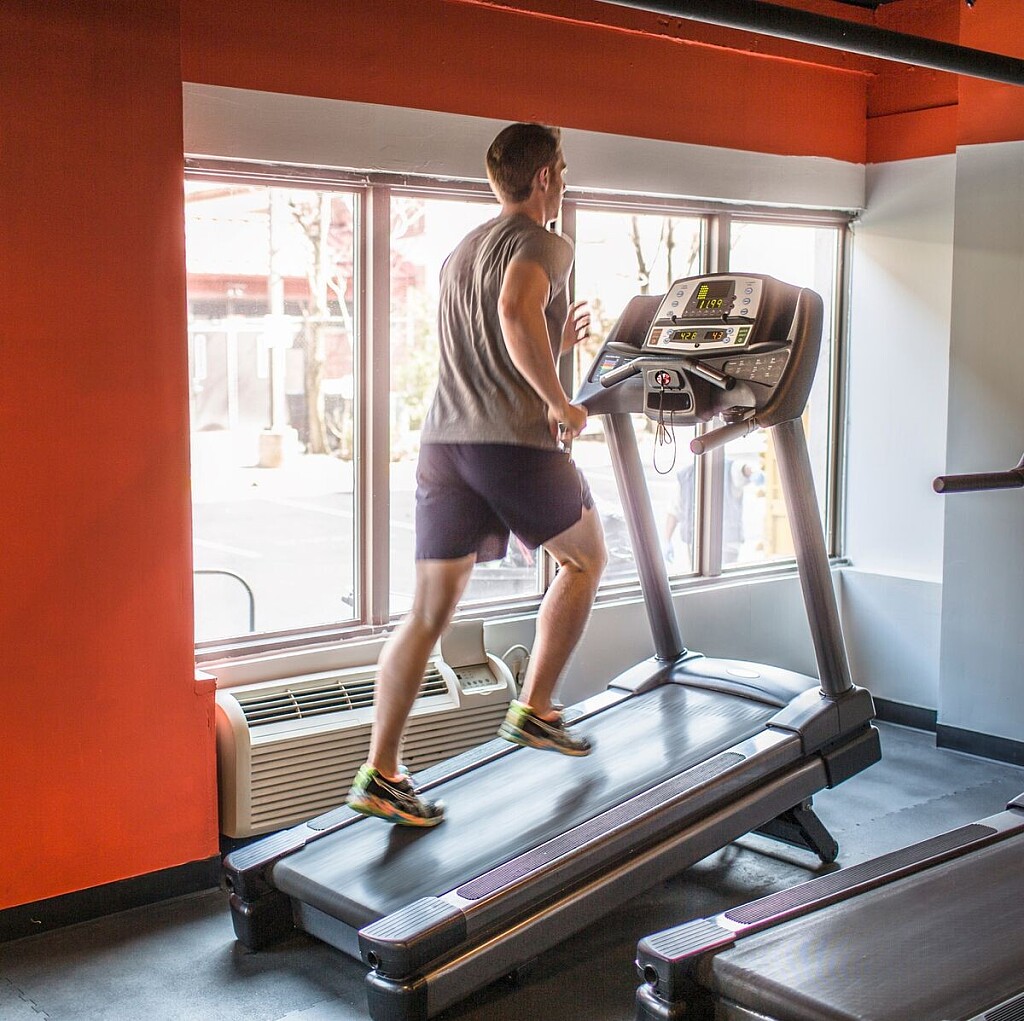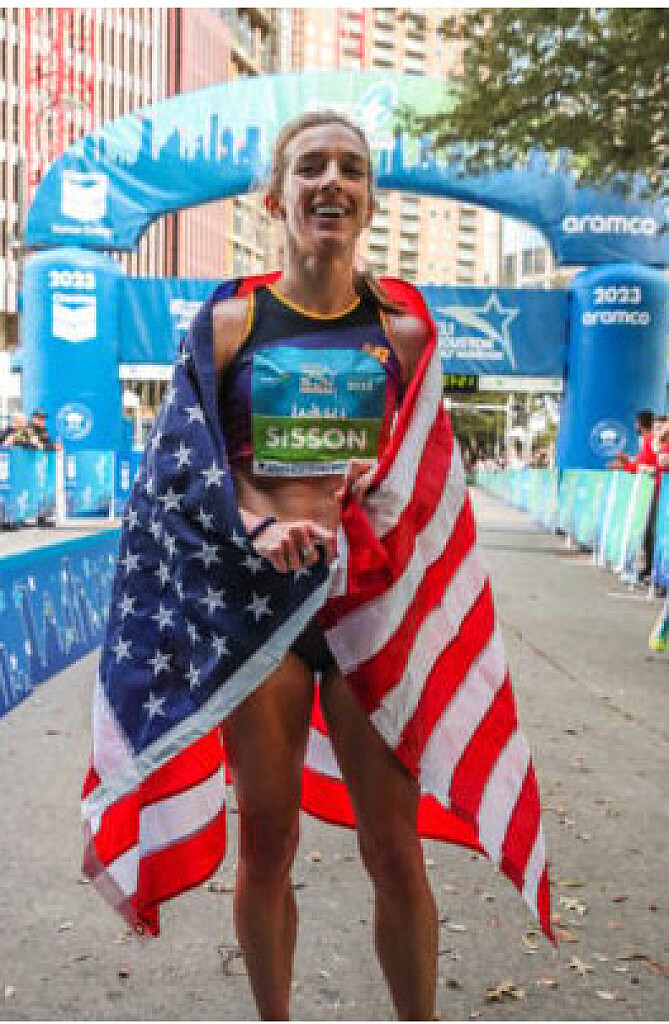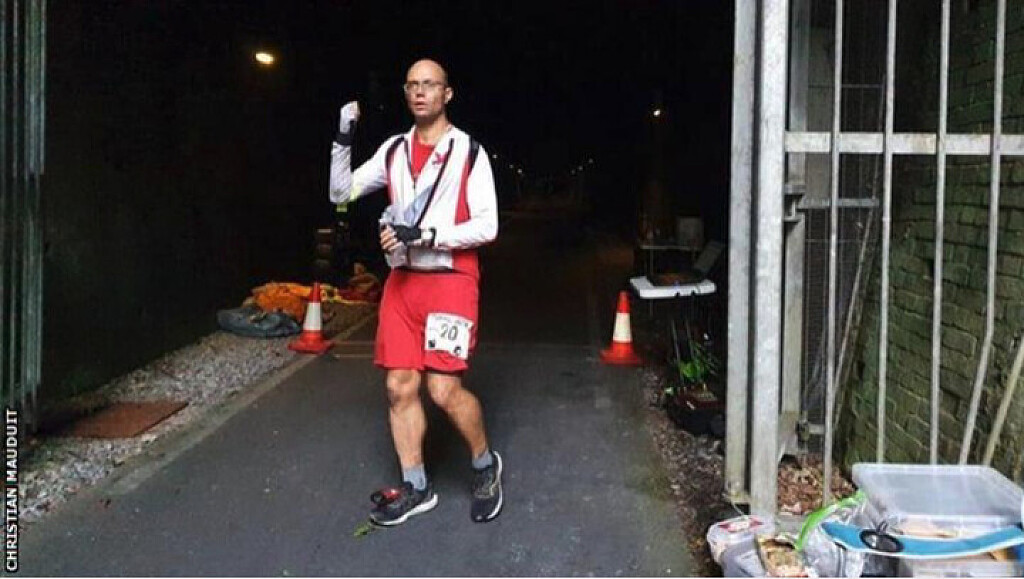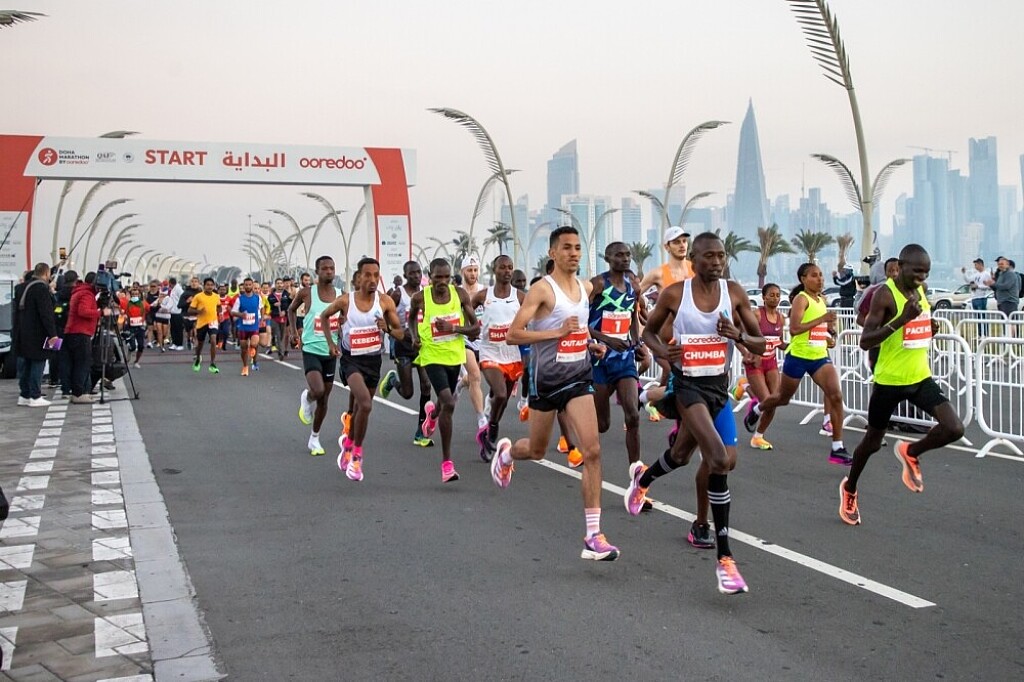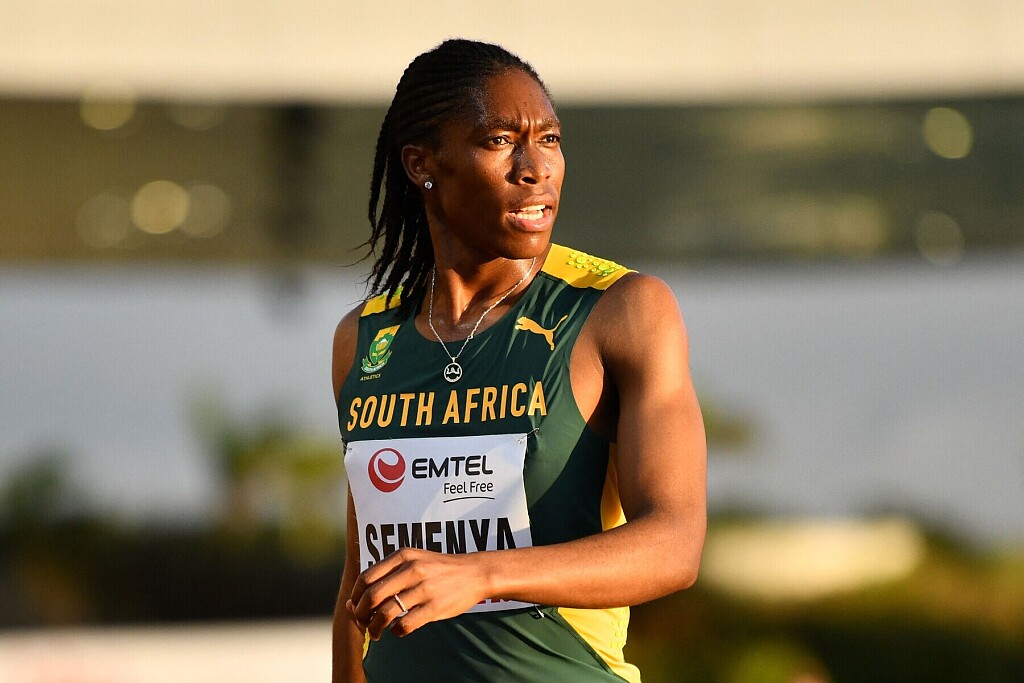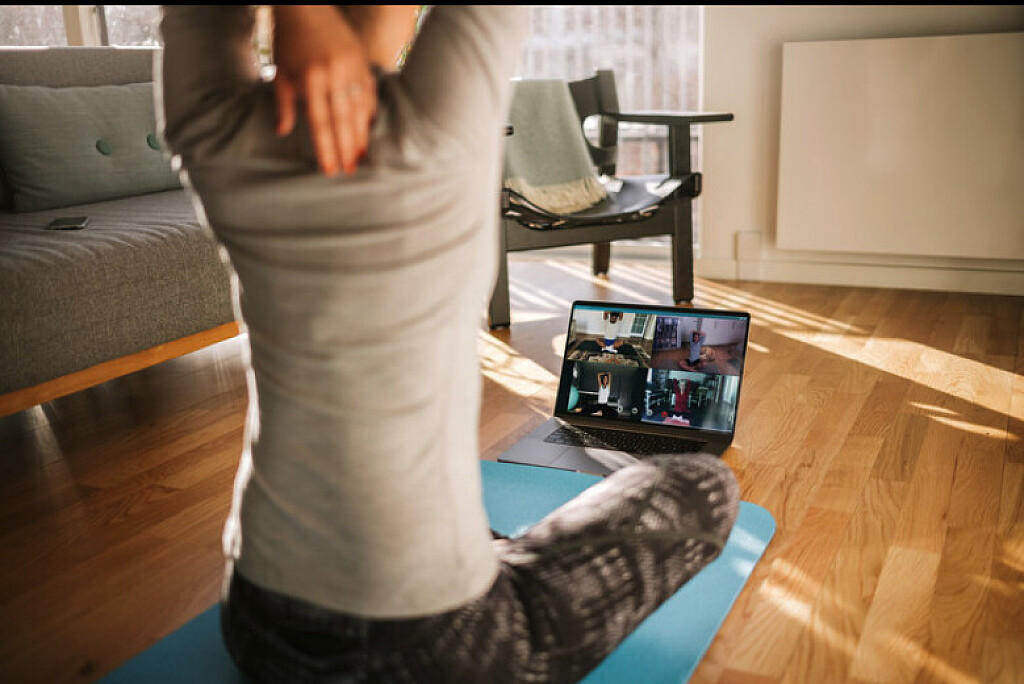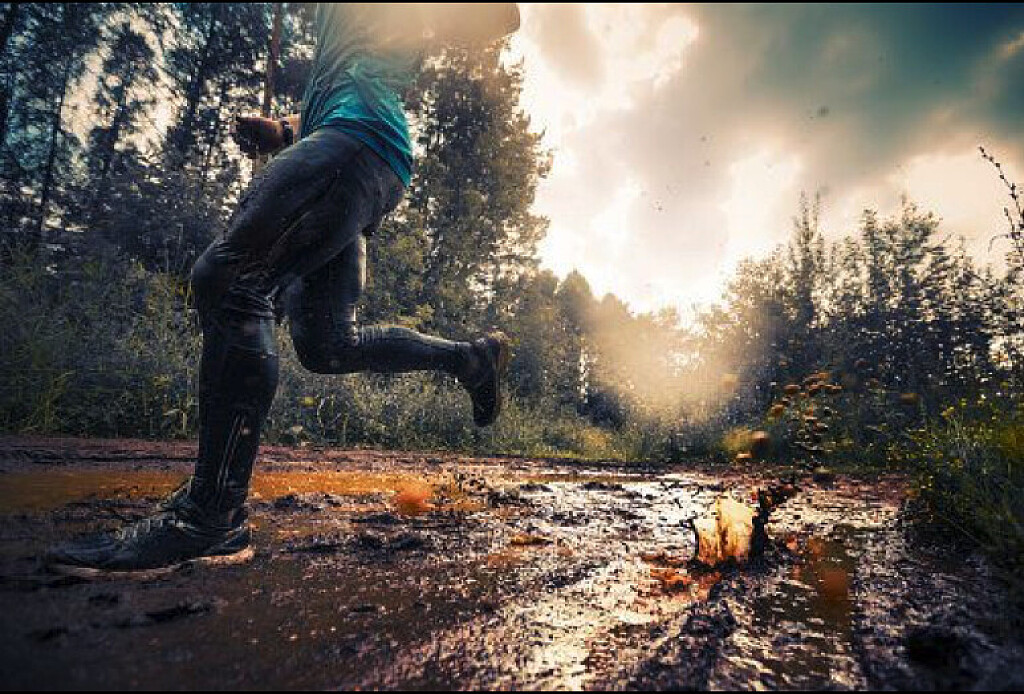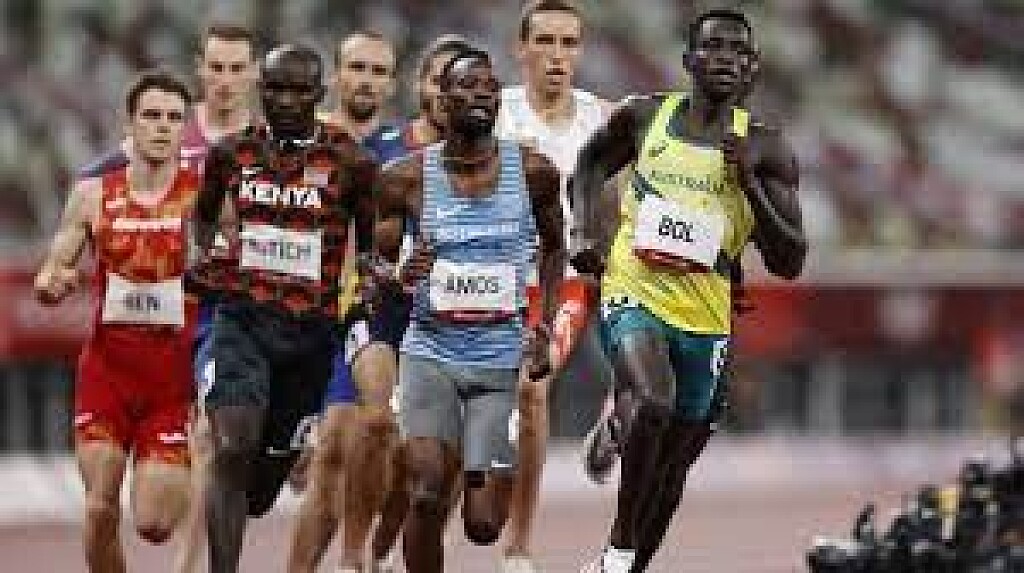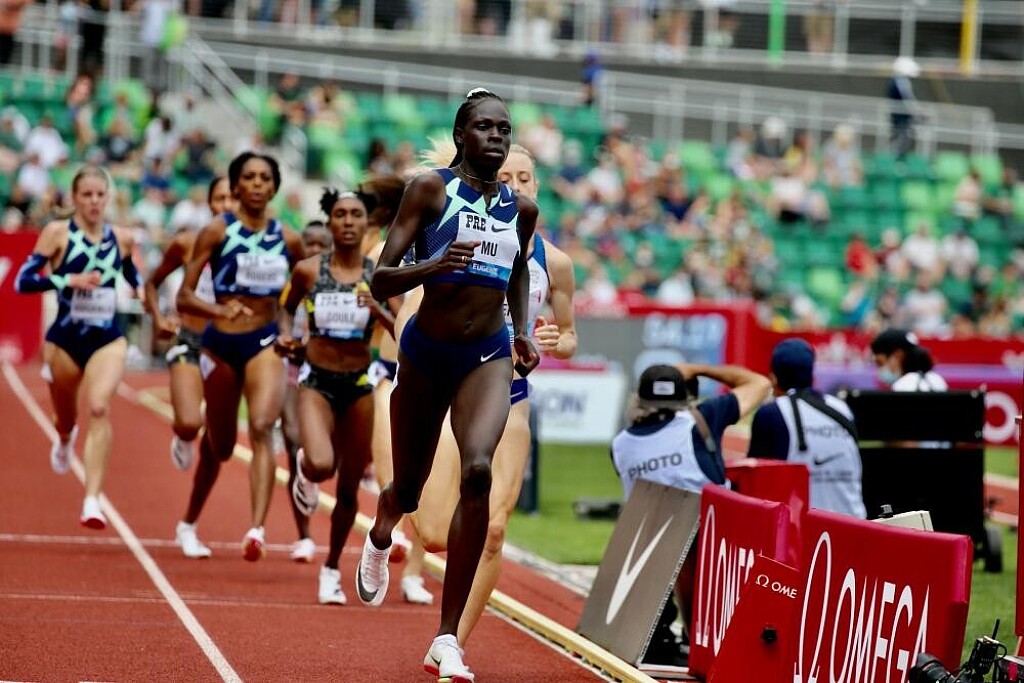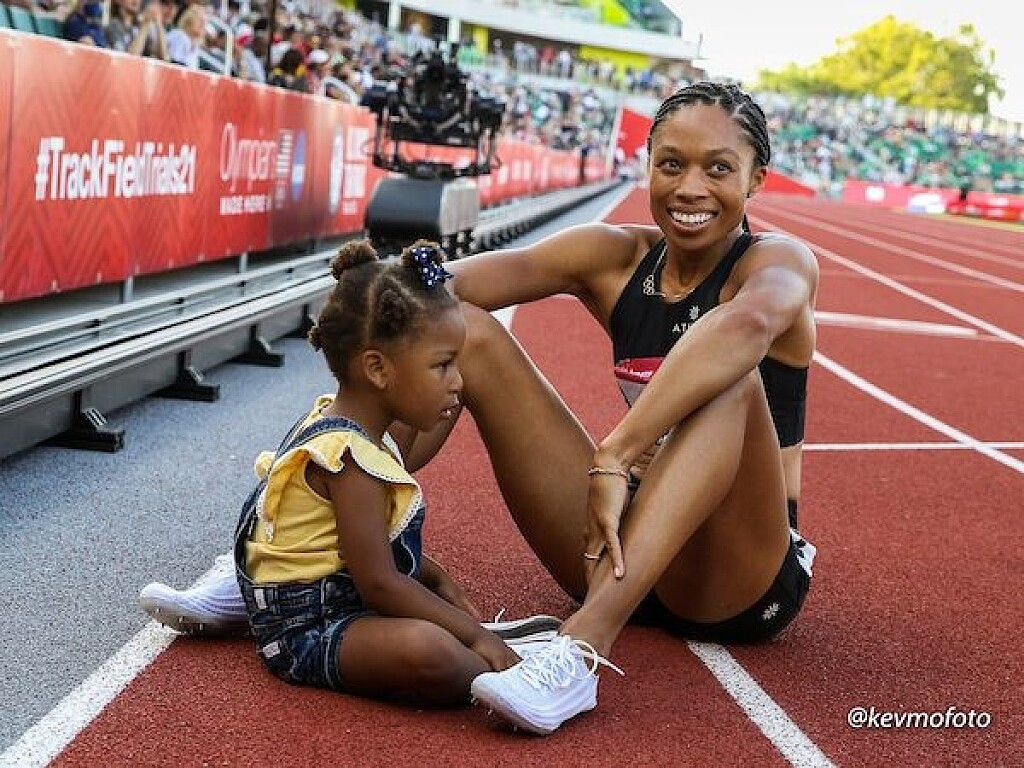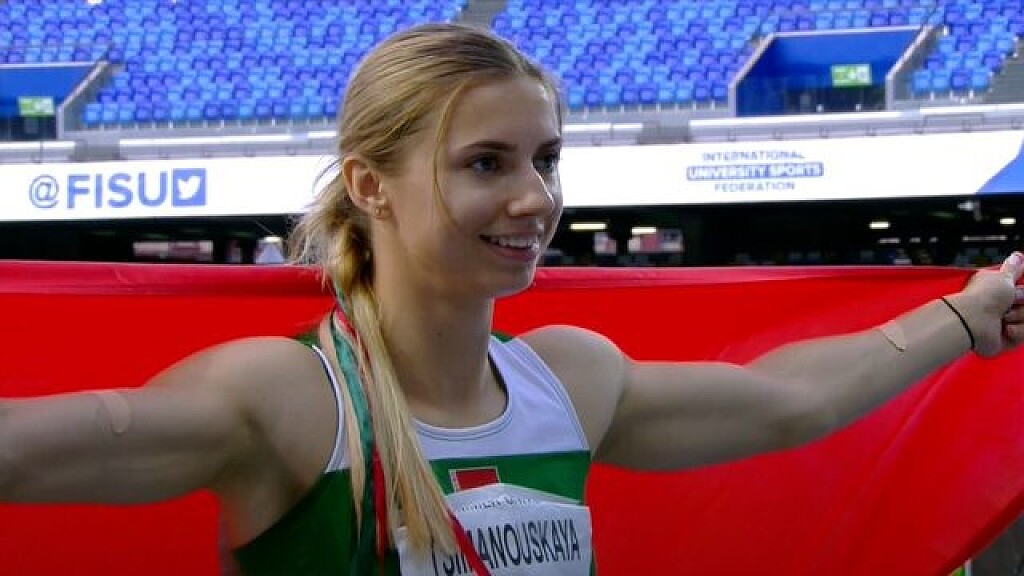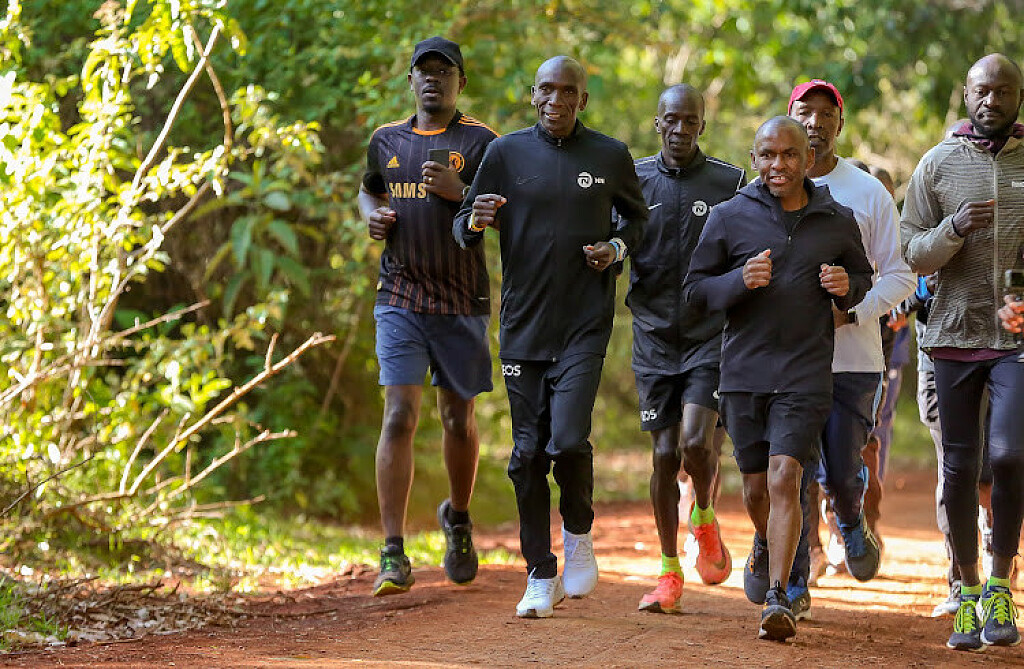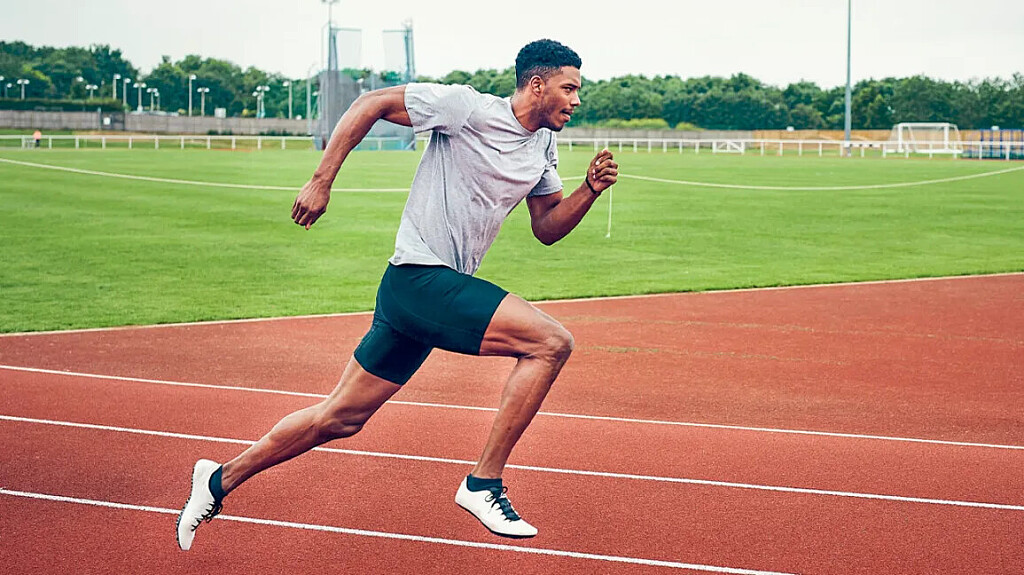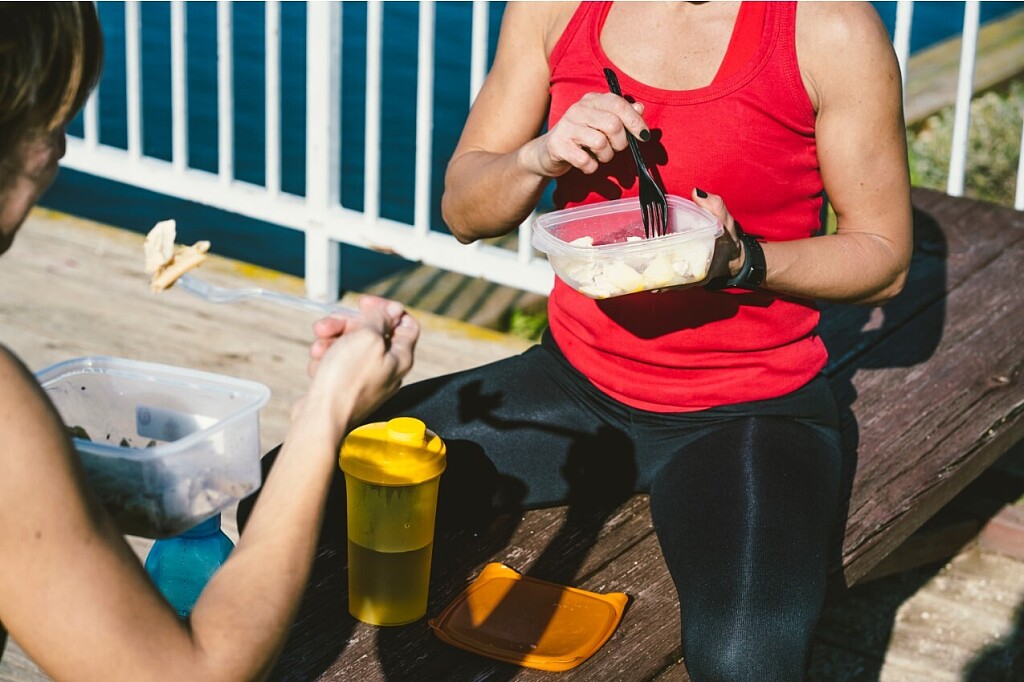Running News Daily
Running News Daily is edited by Bob Anderson in Mountain View, California USA and team in Thika Kenya, La Piedad Mexico, Bend Oregon, Chandler Arizona and Monforte da Beira Portugal. Send your news items to bob@mybestruns.com Advertising opportunities available. Over one million readers and growing. Train the Kenyan Way at KATA Running Retreat Kenya. (Kenyan Athletics Training Academy) in Thika Kenya. Opening in june 2024 KATA Running retreat Portugal. Learn more about Bob Anderson, MBR publisher and KATA director/owner, take a look at A Long Run the movie covering Bob's 50 race challenge.
Index to Daily Posts · Sign Up For Updates · Run The World Feed
You Can Earn $1,250 If You Break This Time at the Hong Kong Marathon
However, the prize-earning time standards make it easier for male runners to earn cash than female runners.
Turns out, you don’t have to be a professional athlete to earn money from running. The Hong Kong Marathon on February 12 is giving out 10,000 Hong Kong dollars (about $1,277 USD) to every male finisher under 3:00 and every female finisher under 3:30 who are permanent residents of Hong Kong.

“We estimate there may be around 300 to 350 runners that can reach the standard,” Simon Yeung Sai Mo, senior vice-chairman of the Hong Kong Association of Athletics Affiliates, told South China Morning Post. That means the Hong Kong Marathon is prepared to give out nearly $400,000 in prizes to non-professional athletes.
In a email to Runner’s World, the Hong Kong Marathon shared the following statement:“The increase in prize money is a ‘one-off’ special award this year to celebrate the 25th edition of the Standard Chartered Hong Kong Marathon. Participants in the Marathon Challenge Category, who are also permanent residents of Hong Kong, finishing marathon under 3 hours (sub 3) for men and under 3 hours 30 minutes for women (sub 3:30) will be awarded with the Special Incentive Award HKD10,000, which is 10 times the amount of the same awards in previous marathons.”
According to numbers crunched by South China Morning Post, 147 participants finished below 3:00 in the men’s race in 2018. In the women’s race that year, there were only 52 runners that finished below 3:30.
The women’s time standard is more challenging than the men’s. According to World Athletics scoring tables, a 3:00 marathon by a male runner is equivalent to a 3:50:18 marathon by a female runner. The Hong Kong Marathon prize-earning standard for women is 3:30, so female runners have a harder challenge by 20 minutes—that comes out to 46 seconds per mile.
In the statement to Runner’s World, the Hong Kong Marathon clarified the reasoning for the standards: “Based on previous records, the men to women [participation] ratio is approximately 8:2.”
On the professional side, the Hong Kong Marathon offers $30,000 to the individual winners in the men’s and women’s races. Professional men who finish faster than 2:10 and women who finisher faster than 2:28 earn an additional $10,000. The course record bonus is $12,000; the men’s record stands at 2:09:20, the women’s at 2:26:13.
The Hong Kong Marathon first occurred in 1997. It has been run every year since, with the exception of 2020 and 2022 due to the coronavirus pandemic. Therefore, this year’s race is the 25th edition.
(01/29/2023) Views: 18,721 ⚡AMPby Runner’s World
After Mosquito Fire and Heavy Rains, Western States Trail Requires Serious Work
California's largest fire of 2022 never quite grew to a tenth of the size of 2021's nearby Dixie fire, but that isn't to say it did not have an oversized impact.
Over 46 days spanning a portion of September and October, the Mosquito Fire burned more than 76,000 acres of forest from the town of Foresthill up to the edge of the Sierra Crest near Olympic Valley, costing state and federal fire agencies $181 million in firefighting salaries and resources. Beyond the monetary cost of the fire, far greater impacts were felt in the surrounding communities, including the loss of 78 structures and residual effects to livelihoods. The U.S. Forest Service (USFS) has focused a lot of its efforts on recreational infrastructure because of its economic importance in the area. The USFS has since performed an internal study to quantify the impacts of the wildfire, and related these findings to local stakeholders including residents and businesses.


Existing within the boundaries of the Mosquito Fire is the Western States Trail, specifically, the 12.4 miles between Last Chance and Michigan Bluff, often known as the "canyons" of the Western States 100 course-one of the most well-known sections of the course. This relatively short section of trail ascends 5,226 feet and descends 6,406 feet, cresting at Devil's Thumb, traversing over 36 switchbacks, and passing Deadwood Cemetery that hosts the remains of the miners and Chinese laborers who built this trail, once among a litany of trails developed by the Washoe people that lived on this land, in the late 1850s.
Thankfully, for those chasing a golden ticket entry or already accepted into this year's race, the staff at Western States has been communicating with the USFS since the beginning of the blaze and have been "working full-time on getting the trail open ever since," said Craig Thornley, Western States race director. Thornley says an agreement has been reached between the race and the USFS, to leverage private funds in order to repair the trail and open in time for the late June race. This is anything but the normal or anticipated result, Thornley said.
"Both races I direct, the Waldo 100K and Western States, were impacted by wildfire in 2022, and that was in a relatively light fire year," he says. "What most race directors appear to do is take the approach of waiting for land managers to tell them when the trail can be used again. In this case we were front and center, asking: 'what do we need to do to get this open?' If we hadn't, it could be several years until the race would be feasible."
This work had, up until the December holiday break, included a number of volunteer days aimed at adding water bars and other trail fortifications to reduce erosion impacts from typical winter rains. These volunteer days were made feasible, in large part, thanks to the quick action of the USFS Burned Area Emergency Response (BAER) teams, which typically address wildfire areas to fell hazard trees and create plans for restoration work.
Wildfire had impacted this trail in the past, most notably during the American Fire of 2013, lending the Western States team experience as to how to ensure the event would go forward. Also, the 2008 Western States 100 was canceled because of poor air quality, due to numerous wildfires in the area.
Based on the efforts made last fall, Thornley believed the trail would re-open in plenty of time for the race this June. But that confidence was shaken at the end of December, when a number of atmospheric rivers crossed the Pacific Ocean and dumped heavy precipitation in California.
On the evening of January 5, 2023, a forest order was issued by the Tahoe National Forest, noting extreme damage to the burned sections of both Western States Trail and Mosquito Ridge Road, a key artery to access aid stations in this stretch. Due to the damage, the USFS issued an access closure until December 31, 2023, which would threaten the possibility of this year's race happening. In most cases, this closure would last until the USFS accrued funding and fully repaired the trail and road, which typically takes two to four years, with orders being renewed each calendar year, depending on the forest region budget.
A New Approach
The Western States team is confident that the order will be reversed once trail maintenance is completed. However, due to USFS budgetary constraints, this trail maintenance will be funded by private donors through the Western States nonprofit structure, on the behalf of the government, a strong partnership and plan between event promoters and land managers.
While it is impressive that the Western States staff has been able to, in all likelihood, stave off race cancellation or delay, there is a larger question to ask: what do individuals, race promoters, and sponsoring brands do under the face of rising hazards in the present and future?
In California, the Santa Ana winds have driven wildfires followed by rain events for centuries, but climate modelers warn that the number and severity of wildfires of the past several years, as well as the frequency of high-severity extreme precipitation events, highlight a worsening climate trend.
No longer is climate change and public land management solely impacting individual communities for discrete periods of time. It is also placing a serious threat to the start line of arguably the most lauded trail running event in North America. The burning of one trail, which will likely require hundreds of thousands of dollars to restore and treat for public safety, is forcing the hand of major race promoters, and the entire outdoor industry, to consider where climate change fits in their yearly budgets.
While the question as to what Western States runners should expect this year is clearly front and center, most see the writing on the wall-the industry must adapt to and address climate change. Fortunately, Western States will almost assuredly happen this year, but only because of the immense work ethic, generous donor giving, and long-term community building of the event staff.
While Western States has the funding to avert disaster this year, both Canyons Endurance Runs by UTMB and the Tevis Cup equestrian event are held in April and July, respectively, on the same trails. There is no guarantee the trail will be open and usable as early as April, or in good condition for horses by July. At the time of publication, UTMB staff were in communication with Western States and land managers to find solutions for Canyons in 2023. However, no official statement has been issued at this time.
Of course, these three races alone are not the first to be impacted by both natural disasters and a limited federal budget for trail restoration. For example, in the last decade, Santa Barbara's Nine Trails has seen the same cascading disaster chain. Such complications have also been experienced along trail systems in Flagstaff, Arizona, Glenwood Springs, Colorado, and across the Pacific Northwest.
Thornley credits the decade-long relationship building with the USFS, California State Parks, and private landowners for their ability to quickly avert closure, noting the volunteer trail work days and private fundraising the event has done in collaboration with these land managers over the years. Western States has acted as an exemplar for other events to emulate in the coming decades, under a shifting climate system. However, one must ask whether other trail running event organizers have considered the time necessary to build these relationships with land managers, and to make plans accordingly before the next natural disaster strikes. The future of the sport depends on the urgent planning and trust-building of these various stakeholders.
(01/29/2023) Views: 565 ⚡AMPby Trail Runner Magazine
Here's Why It Feels Like Every Elite Runner Is Changing Sponsors Right Now
Tim Tollefson celebrated the new year shoveling a lot of snow, dreaming about a summer of possibility, and changing his shoes.
After six years with Hoka, Tollefson, 37, the well-known elite American ultrarunner from Mammoth Lakes, California, signed a new multi-year sponsorship deal with Craft. It might seem like a curious move this time of the year, but, in reality, most athlete sponsorship contracts in running are one-year partnerships that end on December 31. That typically gives brands the upper hand in these situations because they can have an easy out whenever an athlete doesn't have a great year of results, or they no longer fit with their marketing goals. It always comes down to the money, though sometimes it's in the athlete's best interests to start fresh, to leverage their recent results and social media platform to find a better deal with a brand that better fits their racing goals.
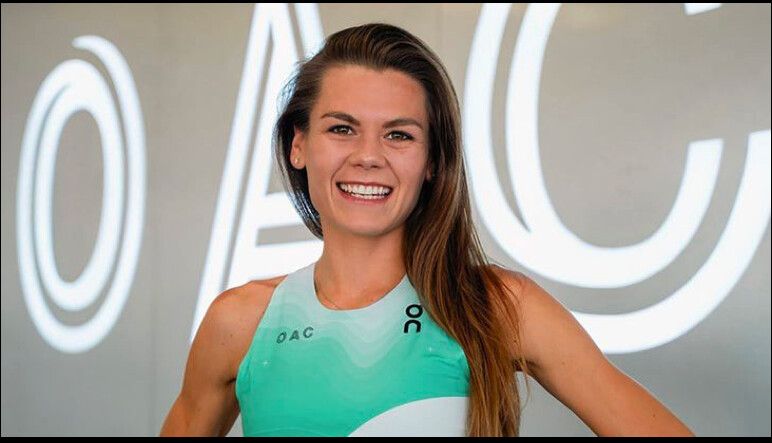

Because there are more brands partnering runners than ever before, and presumably more sponsorship money available, top-tier distance runners who are still at the top of their game-like Tim Tollefson, Allie McLaughlin, Josette Norris, Paige Stoner, David Ribich, Dani Moreno, Erin Clark, Natosha Rogers, Colin Bennie, Dillon Maggard, Camille Herron, and others-have been able to seek out new opportunities to continue their careers with the necessary support.
The terms of the newly signed deals haven't been disclosed, but there is a huge range in pay for professional distance runners-roughly $15,000 on the low end for a partially sponsored trail runner without significant international results, to $300,000 at the high end for a top-tier marathoner with Marathon Majors podium results. Certainly that means some live a life of luxury, while others are forced to work part-time jobs and pinch pennies to get by.
But there are also often signing bonuses, as well as premiums paid for earning appearance fees, major victories, global medals, podium finishes, breaking records, and other incentives, so running faster can be a fast track to a boost in income. However, most athletes are considered independent contractors, and many have to pay for their own healthcare, body work, and travel, depending on the details of their brand partnership.
"You start getting an idea of who's going to be available, for one reason or other, in the last few months of the year, and that's when brands and athletes start talking," said Mike McManus, Hoka's global sports marketing director. "As an athlete, you're as valuable as whatever money anyone wants to give you, but it's a process and all about negotiating. Sometimes you can match the money being offered; sometimes it just doesn't make sense for the partnership."
What Tollefson liked about Craft was similar to what he liked about Hoka six years ago-an upstart brand ready to make an impact in trail racing, its new line of trail shoes, and the trail community overall. Craft sees Tollefson as a runner with name recognition and several significant race wins in the past three years, not to mention a leader in the sport who started the Mammoth Trail Fest last year.
"This [new partnership with Craft] has reignited my deep passion for the sport and has reminded me of the things I want to accomplish," he said. "It's almost like a start-up situation led by passionate people who are excited to make an impact and want to support the people who are along for the journey. Curiosity drives me and I like a challenge. I know I am going to have some lifetime achievements ahead."
More Big Moves in Trail and Ultra
After an extraordinary year of racing on the trails, Allie McLaughlin changed from On to Hoka as her primary sponsor. The charismatic 32-year-old from Colorado Springs won the daunting Mount Marathon race in Alaska, placed among the top five in several Golden Trail Series races, and won both gold and bronze medals in the inaugural World Mountain and Trail Running World Championships in Thailand. She'll be representing the U.S. in this year's World Championships in Austria, in June, while also returning to the OCC 54K race, as part of the Ultra-Trail du Mont-Blanc (UTMB) festival in Chamonix, in August.
"It was really interesting to see how much trail means to them [Hoka], not only with their sponsorship of UTMB, but in general how they're helping push the sport forward," said McLaughlin, who had been with On since 2021. "There are a lot of reasons I like what Hoka is doing, but ultimately, the emphasis they're putting on the team and their athletes is really exciting."
Other trail and ultrarunners who have switched brands include Erin Clark, who finished 7th at last year's CCC, who left Hoka to sign with Nike, even though her partner, Adam Peterman, the 2022 Western States 100 champion and ultrarunning world champion, re-signed with Hoka.
Spanish trail runner Sara Alonso has changed from Salomon to ASICS, while Craft also signed Arlen Glick, a prolific 100-mile specialist from Ohio, and Mimmi Kotka, a Swedish runner with numerous podium finishes in Europe, to its team. Meanwhile, previously unsponsored American trail runners Tabor Hemming (Salomon) and Dan Curts (Brooks) are among those who have signed new deals.
Meanwhile, Dani Moreno, a world-class mountain runner from Mammoth Lakes, California, and Camille Herron, a record-setting ultrarunner from Warr Acres, Oklahoma, are both also leaving Hoka for yet-to-be-announced brands that offered better deals.
Bigger Transitions for Road and Track Runners
For track athletes and marathon runners, a change of shoe brands is often a more involved change, mostly because it often means changing training groups and coaches, too.
For example, Josette Norris, the fifth-place finisher in the 1,500m at the 2022 World Athletics Indoor Championships, not only switched from Reebok to On, but she left Reebok's Virginia-based Boston Track Club, and coach Chris Fox, and moved west to Boulder, Colorado, to join the On Athletics Club under Dathan Ritzenhein.
Similarly, David Ribich, one of the best American mile runners on the track last year, switched from the Seattle-based Brooks Beasts track club to the Nike-backed Union Athletics Club under Pete Julian.
Colin Bennie, the top American finisher in the Boston Marathon in 2021-previously with Reebok but unsponsored last year-signed with the Brooks Beasts but will be training on his own in San Francisco. Dillon Maggard, who was second at the U.S. cross country championships and ninth in 3,000m at the indoor world championships in 2022, is returning to Seattle to train with the Brooks Beasts, after being unsponsored last year. Natosha Rogers, who was a finalist in the 10,000m at last summer's World Athletics Championships in Eugene, Oregon, has changed from Brooks to Puma, but will continue to train on her own in Colorado. Middle-distance runner Cruz Culpepper, after short stints at the University of Washington and the University of Mississippi, gave up his remaining college eligibility to sign with Hoka and its NAZ Elite (NAZ) team.
Last summer, Paige Stoner left the Virginia-based Reebok group and Fox, her longtime coach, to train in Flagstaff, Arizona, partially because she didn't have other marathoners to train with on a regular basis in Charlottesville. She increased her volume last fall training with Sarah Pagano and Emily Durgin and won the U.S. championship at the California International Marathon in December with a course record of 2:26:02, her debut at the distance.
In January, Stoner parlayed that into a new deal with Hoka, as she also joined the Flagstaff-based Northern Arizona Elite and will be training with a group of strong marathoners-including Aliphine Tuliamuk, Alice Wright, Kellyn Taylor, and the recently unretired Stephanie Bruce-under the guidance of coaches Alan Culpepper, Ben Rosario, and Jenna Wreiden.
"I was especially drawn to NAZ because they have proven to be a powerhouse in the marathon, which will likely be my primary focus in the years to come," Stoner said. "I believe the team has all of the tools it takes to compete at the highest level in the sport, and I am eager to begin this new chapter."
Learning the Ropes
For track and road running, the path to success for elite-level, post-collegiate athletes typically includes earning a sponsorship right after the track season in June and joining a sponsored training group and coach. From there, it's all about improving times and placing high in U.S. championship races, with hopes of becoming fast enough to earn a spot in elite track meets in Europe or one of the World Marathon Majors.
But most road and track runners have agents to help smooth out those transitions, whereas most trail runners do not. Plus, trail running is considerably more unstructured, with a greater range of race distances and a lot more unknown variables. That means the challenge of figuring out what opportunities exist on the trails-what races to run, how to train on trails, what gear is needed, how to race considerably longer distances, and how to attract sponsors-often requires them to learn on the fly.
Those are all reasons professional trail runner Andy Wacker recently formed The Trail Team, a non-profit organization that will help guide young runners along the path becoming successful, potentially sponsored trail runners, while also playing a role in boosting the level of competitive trail running in the U.S.
The Trail Team put out a call for candidates to become one of six inaugural team members in 2023. Once selected this spring, those athletes will go through a training camp, receive a stipend, get continued mentorship from Wacker, McLaughlin, Adam Peterman, and Grayson Murphy, and prepare for a variety of U.S. races.
"I've reached out to a lot of young athletes and the main thing I found is they need a mentor," said Wacker, a Salomon-sponsored athlete. "They don't necessarily need a coach-a lot of them have a college coach that they might continue working with-but they need someone who is going to help them with all of their questions and translate everything to trail running.
"It's still really hard to be an individually sponsored athlete, and I think it's hard for a young athlete to get recognition and build their brand, so we're hoping to help with that," he added. "There are more participants and more excitement than ever in trail running, but there are also growing pains. So there are a lot of ways we think we can help so they don't have to figure it out on their own."
Like Wacker, Tollefson is one of those athletes who did have to figure it out on his own. He was a good runner in high school and college, but he never qualified for the state meet and never earned All-American honors. But, with a relentless work ethic, he's become one of the most successful American trail runners of the past decade, having placed second at the CCC 100K in Chamonix, in 2015, and twice placed third in the Ultra-Trail du Mont-Blanc 171K in 2016 and 2017.
Although his personal race plans aren't finalized yet, those deals are allowing him to step away from his career as a physical therapist and become fully immersed in running for the first time in his career.
"All of us athletes are multidimensional; we're more than just a pretty face rocking a bib," Tollefson said. "Everyone has a unique story. I think there are more brands interested in telling those stories, and Craft is definitely one of them. Some people have written me off, but I'm confident my best races are ahead of me. Craft believes in me, and I feel like I need that belief to get the best out of myself."
(01/29/2023) Views: 748 ⚡AMPby Trail Runner Magazine
The Best Goal-Setting Apps And Services for 2023
You're a week into 2023, and maybe your New Year's Resolution is going to plan-or maybe it's already slightly derailed. That's OK! There's still time to get the train back on track before the trail running season (finally) wakes up and starts moving a bit again. But you'll need help. Don't worry, we've got your back with a simple goal-setting app or online training log that'll help you knock out the little things that add up to big ones later on down the line. Let's dig in.
Find a challenge

While there aren't a ton of races to sign up for in January, that doesn't mean you can't find something to motivate you to train. Use a challenge-like our Multisport Mobility Bootcamp - to get you jump-started. Don't worry if you didn't start on Jan. 1, the expert workouts and plans from big-name coaches will help you set up training zones that'll give you momentum (and valuable info) into the spring. Not only will a benchmark challenge make you fitter and faster for running, it'll give you some invaluable zone/pace training info when you're done. If nothing else, you should absolutely start 2023 with some concrete training zones to help build your training.
Don't build off resolutions - build habits instead
Everyone knows about The Quit Date-just about two weeks into the year, some say around Jan. 12, some say Jan. 10. That's the day most people's New Year's Resolutions come to a crashing halt. The bad news is that experts say habits-these are the big, strong things that you want your little resolution-seed to grow into-take about 66 days. Building a habit isn't easy, but once you've got one, you'll be glad you did (unless it's a bad one, but that's not what we're talking about here). A habit is a behavior that basically becomes subconscious, like getting up with the sun or reaching for healthy snacks in the cupboard. The good news is that there's still hope for your little germinating resolution, and if you haven't set a resolution yet-or you don't believe in them-work on building a habit instead. We'll get to some tools that will help below, but for comprehensive expert habit advice, take a look at our healthy habit guide.
Call in outside support
Challenges are good tools to help take a resolution to a goal to a habit, but everyone needs a little help once the lights of the challenge fades, and you're still trying to bridge the gap between March and your first race. The best way to help keep the habit fire burning into some excellent training-and eventually big results come race season-is to use one of the many tools available. Training logs are a good place to start, and online training logs are better than ever. If your goals are simpler and/or you already have an online training plan, read on for our top picks for goal-setting apps to help push your potentially doomed resolution before it needs to be put on life support!
The Best Goal-Setting App For Absolute Customization And Organization
Strides
Free for basic (max of seven habit trackers, no iCloud syncing, or tags/filters), $30/year for Strides Plus; Stridesapp.com
If you're the type of athlete who likes to log everything about your workout and is super detailed in your training plans, this is the app for you. Though it's only available in iOS (sorry Android users), this is probably one of the most "powerful" goal-setting apps in terms of depth and scope. For literally dozens of both positive (drink water, meditate, say "thank you," etc.) and negative (play video games, limit caffeine, no soda, etc.) habits and goals, there are unlimited options on how often, how much, setting streaks, and creating organizational tags/filters. The free version is quite good, but if you want to do more than seven tracked habits (and organize them with tags), you'll need to upgrade. This is the one for keeping control, but not necessarily for quick use and a simple interface.
The Best Goal-Setting App For Those Who Like Simplicity
Horizons
Free for basic (max of three trackers, no multiple reminder for each habit), $7 for premium; Treebetty.com
While Strides is the do-everything-always goal-tracking app, Horizons takes a much simpler approach. The app starts with a vision board to help you to visualize the life you want in seconds, then the user is prompted to write out an action plan with the steps you'll need to take to get there. Finally, you'll be prompted to review your vision board daily and journal your progress toward your goal. The interface and setup is very user-friendly. If you're on iOS, and you're looking to simplify the process rather than organize/analyze everything, this is for you.
The Best Goal-Setting App For Those Who Strive Socially
Coach.me
Free for the tracker app, $25/wk and up for personal coaching; Coach.me
Though Coach.me's main goal is to get their users hooked up with a personal coach-who will help you with everything from productivity to finances to beating addiction-the tracker app (iOS, Android, or web) is decent and has a very cool set of community features that make you feel not-so-alone in this otherwise-isolated time. Once you select a habit to track, you instantly join a community of other users looking to either create or beat that same habit. You can ask the habit group questions, help others with answers, check out a leaderboard, and of course see coaches to hire who specialize in that field. While most of the other apps in this category are totally self-contained, this is the one for people who miss their running club and flock to every Zoom happy hour they can find. Consider this one of the best options for beating back some of the very unique challenges we're facing right now. Also, to be clear, this isn't the place to find a coach-there are much better places for that.
The Best Goal-Setting App ForNerds?
Habitica
Free for basic features, $5/mo. for fun little in-game perks; Habitica.com
Describing everything that happens in this goal-setting RPG is more than we can detail here, but if you like video games-gaining experience points, gaining (and losing) health points, customizing characters, collecting mythical digital objects, and (way) more-then this is the most fun and effective way for you to set your goals. Using a little 8-bit-looking character via an iOS/Android app or web, Habitica lets you set your tasks and habits and rewards (or punishes) you for completing them or not. There's a serious community factor at play in this world, as you can team up with other users to fight "battles," join "guilds," and create "parties"-all the while encouraging each other with your own real-world goals or pre-created challenges. The only downside to this very fun (and complex) platform is that it may consume more of your time than you might like.
The Best Goal-Setting App For Consistency Above All
Streaks
$5 (one-time purchase); Streaksapp.com
While setting a streak is usually the kind of goal that's served up best on January 1, there's something to be said for our current situation feeling like a "new year." What better way to re-motivate yourself in the absence of upcoming goals than to get a streak going? This super well-designed app for iOS or Mac lets you track up to 12 tasks/day with the hopes of not breaking your streak. The streaks can be preset or user-created events that are single (walk the dog, drink a smoothie, etc.), health tasks (swim/bike/run, sleep, etc.-it connects automatically to the Apple Health App), and timed tasks (read, practice an instrument, meditate, etc.). Streaks also don't have to happen every day-you can set them to be active for certain days of the week, a few times per month, and way more. Reminders and stats help keep things flowing, and the user experience is probably the best of the list.
The Best Goal-Setting App For Tri/Swim/Bike/Run
Pkrs.ai
$90/mo. after free 30-day trial; Pkrs.ai
Ok, so this one is a little different than the other more "general" goal-setting apps and platforms in this list, but it bears mention because it's one of the most complete and unique online soup-to-nuts training platforms out there. Using a combination of super sharp programming via their iOS and Android app, real human coaches and experts, and some almost-unsettling AI, Peakers effectively saturates you with run-, or bike-specific knowledge based on your specific goals. You put in your goal event you go through an intake process, and a plan emerges with concierge-level service from coaches, nutritionists, strength-training experts, and more. The app is easy to use, and the interaction between the living coaches, you, and the AI system is eerily seamless. Of course, it ain't cheap, but if you need an army of tech and experts to help get you through to the other side, this is the most all-hands-on-deck option.
(01/29/2023) Views: 1,127 ⚡AMPby Trail Runner Magazine
Woody Kincaid (12:51) and Yared Nuguse (7:28) Break American Records on Historic Night in Boston
The Boston University Track & Tennis Center has been hosting meets for 20 years. In that time, it has seen collegiate records, American records, and two world records.Inarguably, it was BU’s fastest night in the men’s 3,000- and 5,000-meter runs. At 5:30 p.m. ET, Yared Nuguse ran 7:28.24 to break Galen Rupp’s 10-year-old American record in the 3,000. Nuguse’s time was also faster than the 7:28.48 outdoor record Grant Fisher set last summer in Monaco.
Barely two hours later, Woody Kincaid used a brilliant 26.27 final lap to run down Joe Klecker and win the men’s 5,000 in 12:51.61, shaving more than two seconds off Fisher’s American indoor record of 12:53.73 set on this track in 2022.
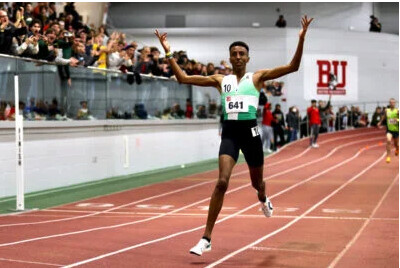
This time last year, no American had ever run 12:51, indoors or out. Now we have to debate whether it was even the best run by an American that day. Heady times for American distance running.
Nuguse and Kincaid weren’t the only men to run fast. Klecker’s 12:54.99 made him the 11th American under 13:00 and moved him to #4 on the combined US indoor/outdoor list. Sam Atkin, unsponsored a year ago, ran 7:31.97 to break Mo Farah’s British record (his time was faster than Farah’s 7:32.62 outdoor record, too). Northern Arizona’s Drew Bosley took almost two seconds off Nuguse’s collegiate record by running 7:36.42. And 19-year-old American Hobbs Kesslerran 7:39.00.
Any of those performances could have been a headline on another day. But tonight belonged to Nuguse and Kincaid, two record breakers entering new phases of their careers.
(01/29/2023) Views: 691 ⚡AMP
by Let’s Run
80-year-old sprinter Carol LaFayette-Boyd named World Masters Athlete of the Year
For the second time in her career, Carol LaFayette-Boyd of Regina has been named the World Masters Athletics (WMA) Female Athlete of the Year. In 2022, LaFayette-Boyd broke six world records in the W80+ age category (two indoor and four outdoor).
LaFayette-Boyd, 80, first won the award in 2018 after she set the W75+ world record in the 100m, 200m and high jump. To achieve this honor, she bested four other nominees from around the world.
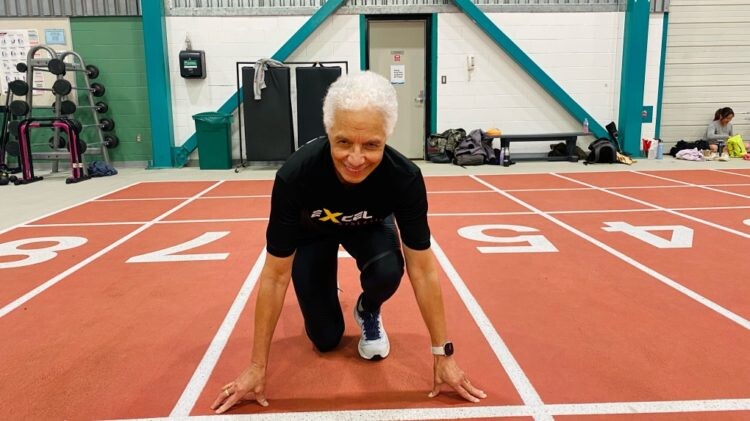
This year she broke outdoor W80+ world records in 100m, 200m, long jump and triple jump, plus recent indoor records in the long jump and 60m dash. She has 17 world age group records to her name.
To put her astonishing athleticism and talent in perspective, LaFayette-Boyd is running sub-35 seconds 200 meters–at age 80.
Although it’s her second time winning the award, LaFayette-Boyd stays humble about her accomplishments. “It is nice to be recognized, but I can think of others more worthy,” she says.
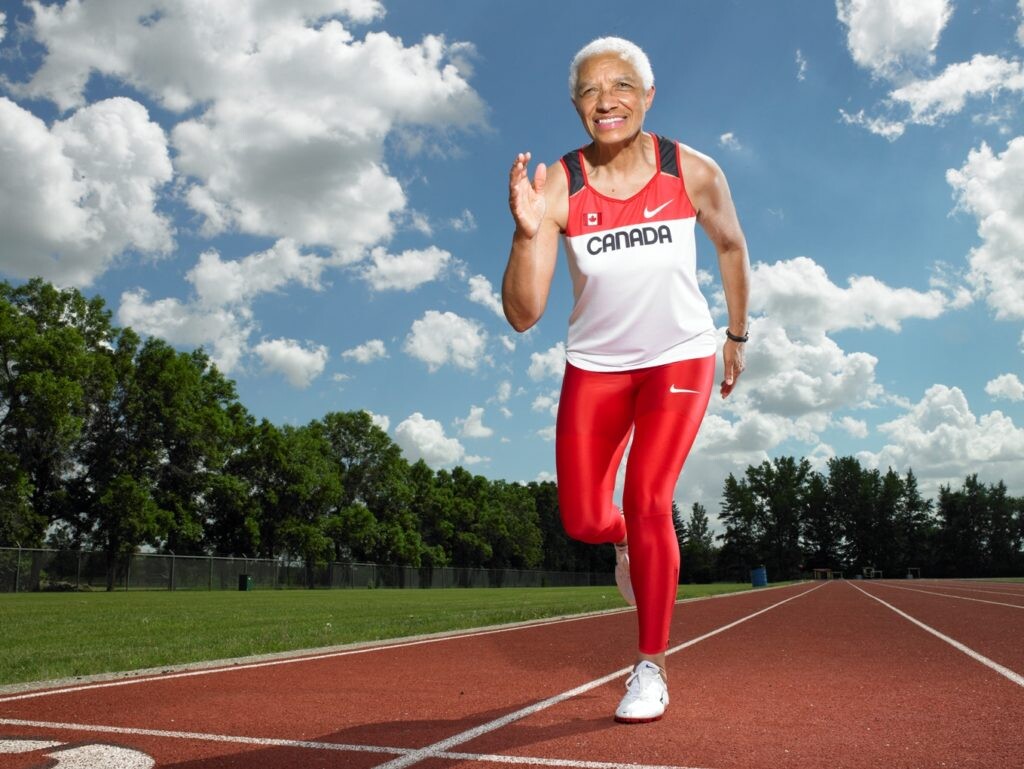
A retired social worker, LaFayette-Boyd did not start running until her late 40s and didn’t win her first competitive track event until she was 50. The great-grandmother of four has no plans to slow down or hang up her spikes; she plans to continue running for the rest of her life.
When asked about the key to her longevity, LaFayette-Boyd says her passion for staying healthy keeps her training at her best. “I train three times a week with Regina’s Excel Athletika Club, and apart from that, I routinely practice a daily stretching regime.”
She says she is inspired by the women who are competing in the W100+ age category. “I have lots of time to do that,” she says. “This year I would just like to stay healthy and to better my times in all events.”
She will compete for the first time in 2023 at the Regina Indoor Games on Feb. 3-4.
(01/28/2023) Views: 658 ⚡AMPby Marley Dickinson
Olympic champion Faith Kipyegon wants to follow in Kipchoge’s footsteps
At last weekend’s Kenyan Sports Awards (The SOYAs), the reigning world and Olympic 1,500m champion, Faith Kipyegon, was recognized alongside her idol and compatriot Eliud Kipchoge for Sports Personality of the Year. Kipyegon revealed that she wants to follow in the footsteps of the great Kipchoge, and eventually plans on moving up to the marathon.
Kipyegon said that the unparalleled success of Kenya’s marathon icon, Kipchoge, has ignited and nurtured her ambition. “As my career evolves, I will continue to look up to Eliud because he is the greatest marathon runner of all time,” Kipyegon said. “That is something I hope to accomplish in the future.”I aspire to grow as a person and an athlete like him, as well as to become the greatest marathon runner of all time,” she added.
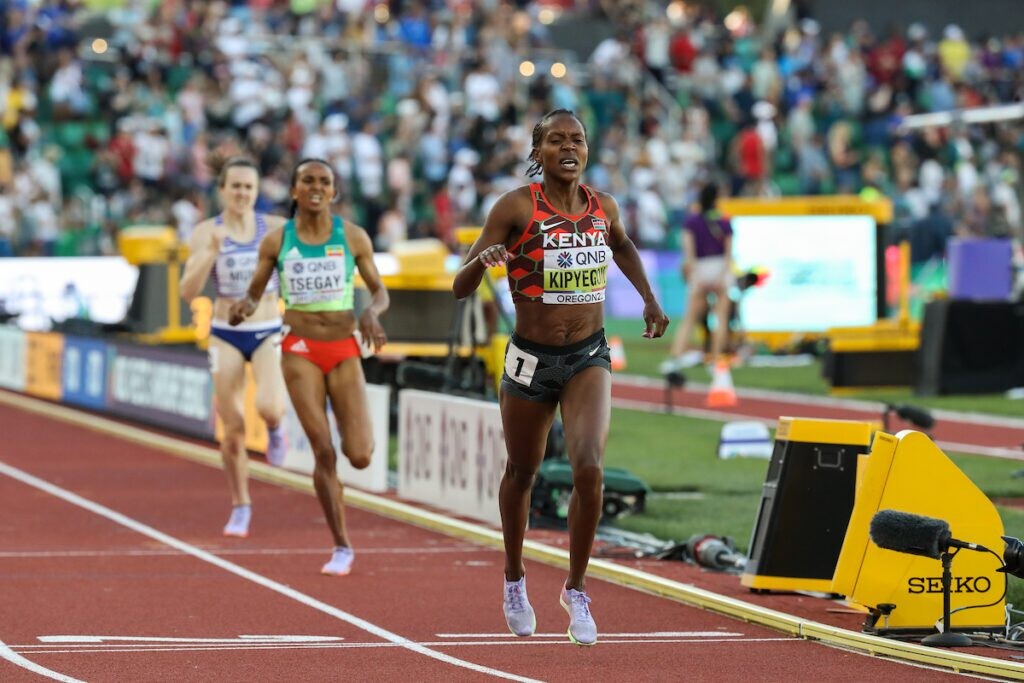
Kipyegon, 29, is only the second woman in history to win back-to-back Olympic gold medals in the women’s 1,500m, having triumphed in Rio 2016 and Tokyo 2020. The only other athlete to accomplish the feat is Tatyana Kazankina of the Soviet Union at the 1976 and 1980 Olympics.
Since 2015, Kipyegon has either won or finished second in every major championship, and is widely regarded as the greatest female middle-distance runner in history.
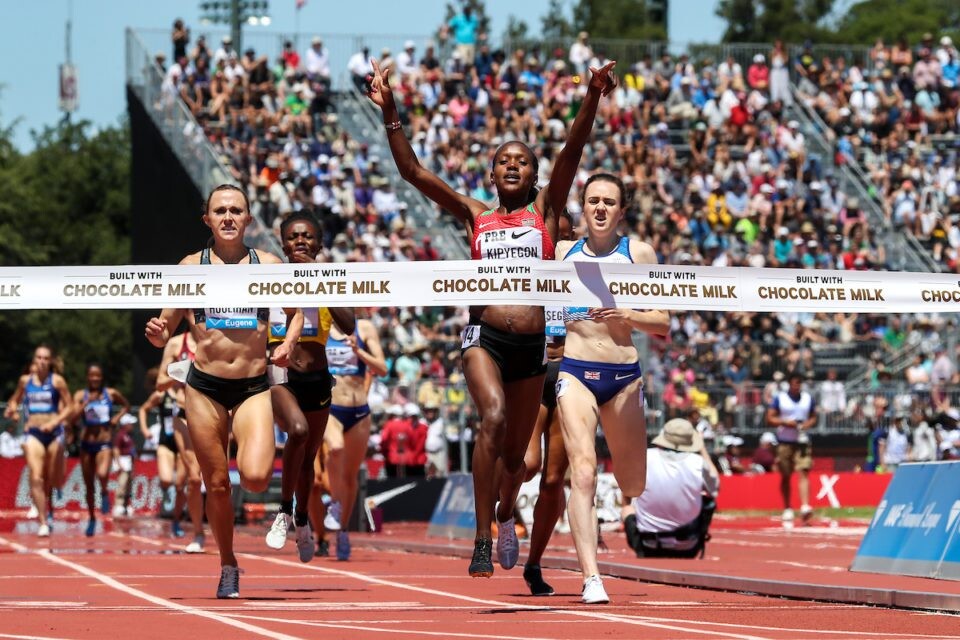
At the 2022 World Championships. Kipyegon put on a dominant display, winning the world title in a blazing time of 3:52.96. Kipyegon stressed that she isn’t done with the 1,500m quite yet: “My goal is to break the world record, and I hope to do so in style.”
Last year, she narrowly missed the world record of 3:50.07 held by Genzebe Dibaba of Ethiopia when she ran 3:50.37 at the Monaco Diamond League. Dibaba returned to distance running in 2022, placing second in her marathon debut at the Amsterdam Marathon in 2:18:05.
Kipyegon has yet to race on the road in her career as a senior, which dates back to 2011.
In 2018, she gave birth to her daughter, Alyn, and took 18 months off the sport before returning to win the 2019 Prefontaine Classic in her signature event. Months later, she placed second at the 2019 World Championships in Doha, breaking the Kenyan record of 3:54.22.
Although the 29-year-old has not revealed when she will be making her marathon debut, we can speculate that it will likely be after the Paris 2024 Olympics, where she will be vying to become the first middle-distance athlete to win three straight Olympic golds.
(01/28/2023) Views: 696 ⚡AMPby Marley Dickinson
Here's Why Negative Splits Are the Key to Racing Faster (and Happier)
I wasn't too impressed with my first marathon experience.
Don't get me wrong . . . I loved the 2008 New York City Marathon with its amazing crowd support, challenging course, and the thrill of running through New York's five boroughs.
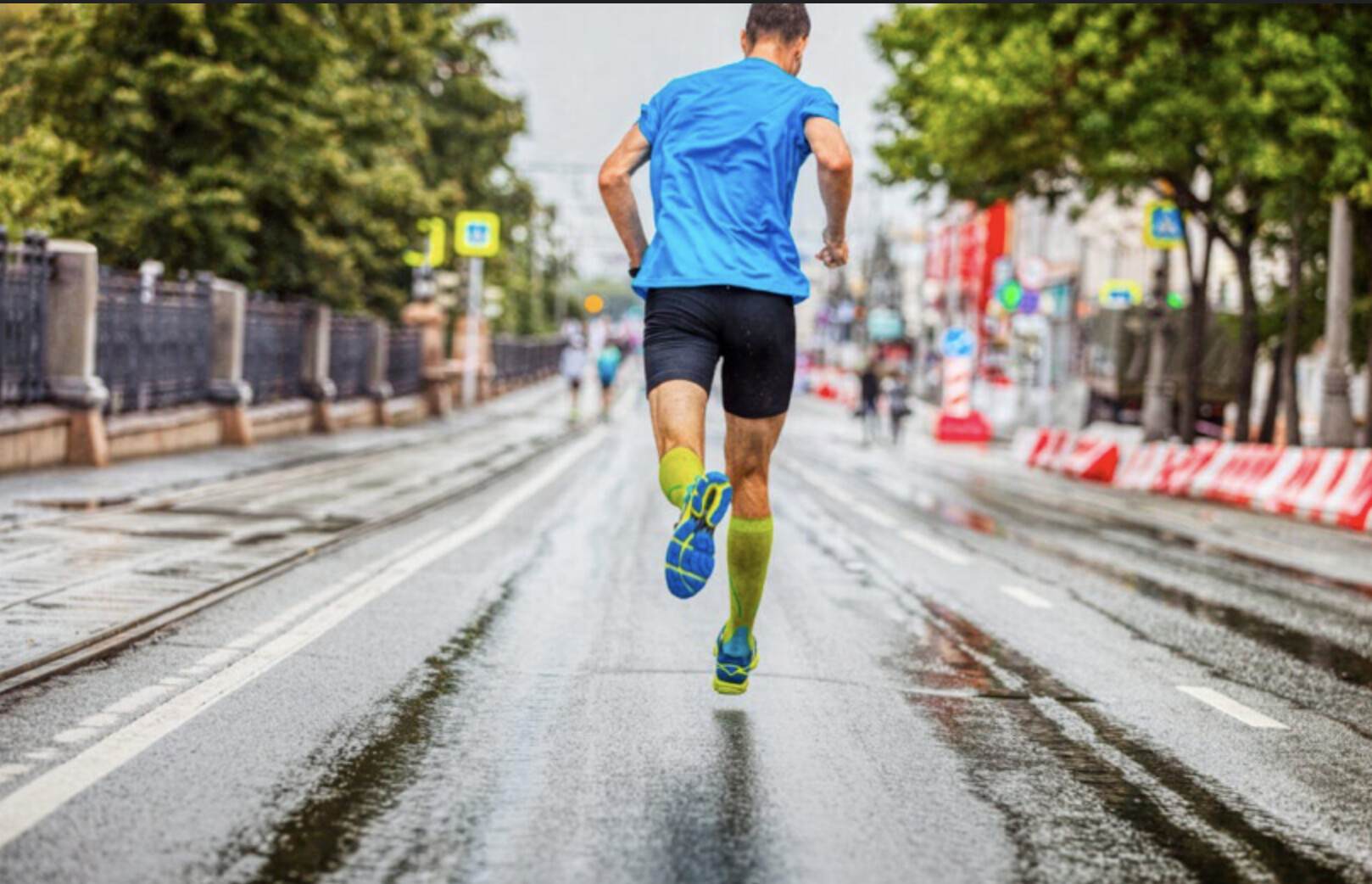
But like many marathoners, I hit the wall at mile 20. Each subsequent mile was slower than the last, and I felt worse than I ever had in any other race. While I was proud of my finish time, I didn't like how I finished the race.
After more than a decade of coaching marathoners, I've come to a realization that really transformed my relationship to training: how you run a race is just as important as the final result.
If you're able to finish in a way that makes you feel good-if you can finish strong-you're much more likely to consider the race a success and feel more fulfilled by your performance.
One pacing approach of finishing strong is commonly referred to as "negative splitting." Negative splits refer to finishing a race faster than you started. It usually means that the first half is slower than the second, requiring you to speed up during the final half of the race.
This strategy is usually preferred over other race pacing strategies (like positive splits, where you run the first half faster than the last half, or even splits where each half is as close as possible) for a variety of reasons.
First, it's physiologically easier. For races like the half-marathon or longer, it's easier to run faster once the body is fully warmed up. That typically happens only after the first few miles of racing, making a negative split easier to manage.
Second, negative splits leave you feeling more empowered and fulfilled when you finish a race strong. It just feels good! Athletes who negative split races feel more confident after speeding up during the second half of a race.
And finally, it's better for fast times. Most records at the national and world level have been run with negative splits, showing that it's the ideal pacing approach for the fastest times possible. Let's look at some of these performances to inspire our own negative split ambitions.
Negative Splits and Records
A clear trend emerges when you study most world and national records: they were run with negative splits! While not every world record has been run with a negative split, it's the most common approach. Here are a three famous examples:
In 2014, Dennis Kimetto ran the world marathon record in 2:02:57 by running the first half of the race in 61:45 and the second half in 61:12.
Years later, Eliud Kipchoge set another world record in the marathon in 2019 by running 2:01:39. His half-marathon splits were 61:06 and 60:33. He also ran his second half marathon about 10 seconds faster than his first when he broke two hours in the marathon in October 2019 during a time trial.
While most world records at distances over 800m are run with negative splits, this strategy starts to break down at the ultramarathon distances. Many ultra races often have unpredictable terrain, dramatic elevation changes, and higher altitudes. Combined with the sheer distance of ultras, finishing the race slower than you started is usually inevitable. Of course, usually doesn't mean always, though! Arizona ultrarunner Nick Coury, 35, set a 24-hour American Record with an impressive negative split, running 173 miles and clipping off 6-minute miles at the end. It did take this elite athlete more than a decade to refine, but it can be done.
How to Run Negative Splits
Now that we've established the benefits of negative split races, now that we know this approach can be easier and more empowering-not to mention the historic strategizing of negative splits at the highest levels of running-how do we do it ourselves?
If you're able to finish in a way that makes you feel good - if you can finish strong - you're much more likely to consider the race a success and feel more fulfilled by your performance.
Running a race with a negative split is no easy task. It requires much more effort in the second half to run faster because of cumulative fatigue. So how do we train for this feat?
The first step is to get comfortable running negative splits when the stakes are low. Practice finishing an easy distance run faster than you started. It can be helpful to run the first mile at a slower pace to help the warm-up process and the last mile at a more moderate effort. This makes that negative split easier to attain.
You can then practice running a structured workout with negative splits. This is more challenging, since you'll be running at faster efforts and will be pushing yourself in a similar way to a race. (Don't forget your encouraging self-talk.)
This approach works best when you're running a series of repetitions of the same distance (i.e., 6 x 800m) so you can work on each repetition getting slightly faster than the last.
In a race situation, accurate pacing becomes a top priority if the goal is to run negative splits. You must first understand what you're capable of, and what's realistic for you, so you don't start too fast. For example, if you want to negative split your next half marathon and you think you're in shape to run about two hours, it's helpful to run close to this pace for the first 10-11 miles. Running a pace that'll net you a 1:45 finish time is too fast!
Can Negative Splits Make You Happier?
In my coaching opinion, the answer is yes! While the destination (your race result) is important, so is the journey (how you ran the race). Racing negative splits ends the race on a positive note. You finish the race running fast, feeling powerful, and likely outkicking many of your competitors. It's a direct way of imprinting a positive memory on your brain at the very end of a race. That final feeling is lasting and a good reminder of all the effort you put into a race.
For runners who struggle with pre-race anxiety, it can be difficult to frame races as positive experiences that make you feel good. These athletes usually dwell on what can go wrong or how they'll perform. But having just one negative split race is an enormous confidence-booster and can be effective at reducing anxiety in future races.
Even if you don't end up negative splitting a race, we can have an "emotional negative split" by focusing on finishing the race strong. The last mile or half-mile is a great opportunity to pick up the pace, put out those airplane arms, and smile as you charge to the finish line. Positive split or not, you'll finish the race feeling powerful.
If you're a runner who wants to race fast, feel better about your performances, and make racing a more positive experience, try negative splits. They're tough-but so worth it.
(01/28/2023) Views: 13,561 ⚡AMPby Trail Runner Magazine
I Replaced Running Gels with Real Food and This Is What Happened
I'm obsessed with running gels.
"You're hooked," my fiance would say every time I came home from a trip to my local running store with a heap of energy gels. It's not goo, I would tell him. It's gel. I thought he was just gel-ous that I basically got to eat frosting on my long runs, sucking down flavors like salted caramel, birthday cake, campfire s'mores, sea salt chocolate My mouth is watering.
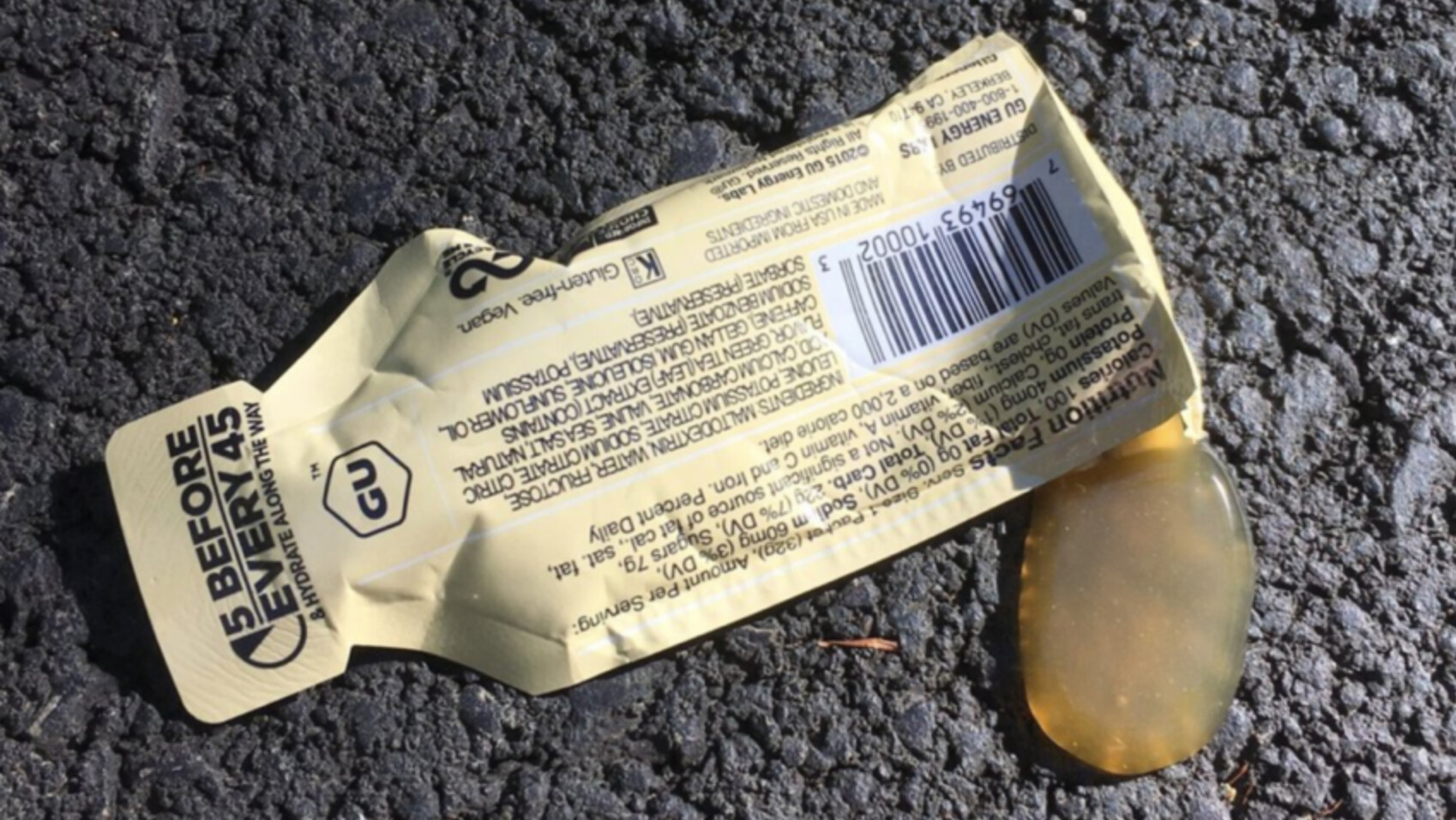
I discovered the magic of gels when I started running marathons two years ago. It was a great trade-off in my mind - you're running longer miles, so you get a reward about halfway. Fun! I distinctly remember running the Hamilton Glow Marathon in Hamilton, Ohio and shouting at my dad on the side of the course, "I GET TO EAT A GEL SOON!"
But, I'll be honest, my zealousness for energy gels was not the most financially healthy habit. Gels are $1.60 a piece at my local running store and I bought three or four a week to stick in my drawers, backpack, car and jackets. After a year of this, I estimate I spent around $300 on gels alone.
Even more concerning, I believed I wouldn't be able to run well without gels and never completed a long run without one. I went out of town one weekend and didn't bring any gels, so I refused to join my dad for a long run. At the time, I truly thought I wouldn't get through half the run without a gel.
That particular weekend out of town was eye-opening. I knew I wanted to stop leaning on gels but still needed a way to replenish lost electrolytes and glycogen. So I decided I was going to start substituting energy gels with whole, real foods to prove I didn't need them to be a good runner. It was time to face my fears and kick the crutch I'd been leaning on for over a year.
What to Look for in an Energy Gel Replacement
The editors at Women's Running provided a perfect resource for learning what I needed to do to fuel my long runs with natural foods.
Authors Caitlyn Pilington and Malissa Rodenburg write: "Fueling is important during long runs, but your choice of what to fuel with lends itself to flexibility. Ultimately, all of our bodies are different and therefore tolerate things differently. You'll no doubt see a majority of athletes fueling themselves with gels, blocks, sports drinks, or other commercial products. And there's honestly nothing wrong with that-sports products are engineered to be absorbed properly and help you perform."
There are all kinds of brands of energy gels, but I'll be touching on my favorite, GU. Each packet contains 100 calories, 125 mg sodium, 40mg potassium, 22g of carbs and 7g of sugar. So a gel replacement would need to cover those bases plus be compact, easily digestible and (hopefully) tasty.
Nutritionist Sarah Cuff focuses on holistic fueling, so she was eager to speak on the topic of replacing gels with whole foods. She says the three main factors to consider in a gel or whole food replacement are sodium, carbohydrates and sugars.
Sodium
If you're a 'super sweater' like me (I could fill a bathtub wringing out my running clothes) you'll want to pay close attention to this next bit.
"When we sweat, sodium is the electrolyte lost at the highest proportion," Cuff says. "So while most energy gels will include some potassium and magnesium and calcium, they are not necessarily required because we don't lose them in any high amount when we sweat. Sodium is most important."
She adds that the amount of sodium needed depends on a variety of factors like how much you generally sweat, the temperature and how much energy you're exerting. Cuff says a good rule of thumb is if you're drinking one liter of water an hour, you want to make sure you're intaking at at least 600 mg of sodium. Learning this, I realized the sodium in my favorite GU gel and the whole food replacements don't meet those standards, so I needed to supplement with sodium in my water.
"Some athletes who want to be as natural as possible might use coconut water and sprinkle sea salt in it - it's not super tasty, though some people like it," Cuff says. "I'd suggest getting a natural electrolyte drink such as Skratch Labs Hydration or Tailwind. Make sure they have at least 300 mg of sodium per serving."
Carbohydrates
"Another important number we want to be looking at is the carbohydrate number, because that's what primarily fuels our long runs," Cuff says. "We know from studies that we need 30-60g per hour on long runs and up to 90g on really long runs (marathons, ultra marathons) to adequately replace what we're burning. The question is, where can we get those carbs?"
GU gels contain a sort of 'super' carbohydrate called maltodextrin, which is easily broken down while exercising and therefore great for most athletes - though it can cause gastrointestinal issues in some. So my whole food gel replacements need to contain up to 90 grams of carbs and must be as easily broken down as maltodextrin.
Sugars
Sugars are required for the fueling process on long runs. Most gels use carbohydrates like maltodextrin to produce glucose and fructose. When you intake sugar, your body breaks it down into glucose and fructose which can be used for energy right away.
"Ideally, we're looking at what's easy for our digestive system to break down while we're running," Cuff says. "Sugar is digested pretty darn quickly. Now, straight table sugar would be difficult to stomach, but there are companies who have packaged maple syrup into small serving sizes. That's a very natural whole food alternative to gels."
My Energy Gel Replacements
Over the course of four weeks I packed five different snacks on my longer runs, ranging from 10-16 miles, and ranked which ones worked the best for me and which ran me into the ground. I also took Cuff's advice and tried Skratch Labs hydration drink mix, which contains 70 calories, 17g of carbs, 15g sugar and 710 mg sodium per serving.
White Bread with Honey
Calories: 132 | Carbs: 28g | Sugar: 7g | Sodium: 180mg
Probably the most boring sandwich I've ever made turned out to be my favorite energy source during this experimentation period. I took one piece of white bread, drizzled on a little bit of honey, folded it up and wrapped it in a sandwich bag. It fit neatly in my running pack around my waist and, even if it did get a little smushed, tasted glorious when I needed it. I had zero tummy troubles and felt as energized as when I took an espresso flavored gel.
Sweet Potato
Serving size: 4oz. | Calories: 112 | Carbs: 26g | Sugar 6g | Sodium: 73mg | Potassium: 448mg
I'm a fiend for sweet potatoes. They're excellent for running because of their phytochemical content which can reduce post-workout inflammation - and I'm usually all kinds of inflamed after a good tenner. I chose a small sweet potato, about the size of my palm, and cooked it long enough before my run so that it was cooled. I wrapped it in a paper towel and stuck it in my pack and, when the time came, I ate that sucker like it was a donut, skin and all. I didn't finish the whole thing, because half did the trick. I felt fueled and it digested well. The trade-off is the low sodium content, but because I supplemented with my water, it evens out.
Banana
Serving size: Medium banana | Calories: 110 | Carbs: 28g | Sugar 15g | Potassium: 450mg
Tried and true, I knew bananas would never fail me. This is often my pre-run snack because I can digest it easily and it has carbs and natural sugars that are broken down quickly. The downside is that it didn't fit in my running pack, so I had to put it in my jacket pocket, which was a little uncomfortable. Like the sweet potato, there's little sodium, but I had my supplemented water.
Cereal
Serving size: cup| Calories: 100 | Carbs: 20g | Sugar 1g | Sodium: 140mg | Potassium: 170mg |
For this energy gel replacement, I packed a cup of dry, plain Cheerios in a tiny baggie. While I'm a big fan of cereal, it's not exactly easy to pour into your mouth while running. I also didn't feel as fueled during the second half of my run, leading me to believe I might not have packed enough. The issue is, if I packed anymore, I'd be crunching cereal for a whole mile. Plus, it really dried out my mouth and made me thirsty.
Dates
Serving size: 2 dates | Calories: 133 | Carbs: 36g | Sugar 32g | Potassium: 334mg
I had high expectations for this snack. Dates are delicious, compact and full of natural sugars, so it makes sense why runners sometimes substitute them for energy gels. However, I didn't anticipate how the three medjool dates would glob onto each other into a golf ball sized glob. That wasn't the biggest issue though; my stomach did not do well with dates. I experienced camping, bloating and overall my digestive issues caused me to cut the run short. Further research led me to discover that my body must not have liked the high amount of fiber and sulfites in the dates. So this snack may work for some, but for me, it was a hard pass.
Will I Give Up Energy Gels?
This experiment resulted in more than great runs and weird stares (have you ever seen a runner chomping on a whole sweet potato?!), it also provided me with the answer that I was looking for: I don't need energy gels to be a good runner. They're not a magical potion that gives me a boost as good as the speckled mushroom in Mario Kart.
But, energy gels are a useful, efficient tool to quickly recover lost glycogen and keep you going on long runs. I certainly have no desire to give them up, but I know now that I can substitute a gel for whole foods, if I so please. In the weeks after my trial, I purchased one gel. Given my track record, I'd say that's pretty goo-d.
(01/28/2023) Views: 512 ⚡AMPby Trail Runner Magazine
U.S. track star Sha'Carri Richardson removed from American Airlines flight
A fellow passenger is heard sarcastically thanking Richardson, blaming her for missing his connecting flight, and arguments commence between Richardson, the airline staff, and fellow passengers, although much of it is unclear.
Someone approaches Richardson and informs her that she’s being asked to leave the plane. When she asks why, the person responds, “The captain wants you off the plane.” “Does the captain know the situation that happened before removing me?” Richardson says.

Richardson asks to speak to the captain and asks if the flight attendant she argued with will be removed from the plane as well. Clapping is heard on the video as Richardson starts to get off the plane.
Richardson gained fame when she qualified for the Olympics in Tokyo in 2021 and then was subsequently suspended for one month after testing positive for THC, the chemical in cannabis, according to the ADA.

In a statement, an American Airlines spokesperson said, “We re-accommodated the customer on a later flight and a member of our team has reached out to learn more.” A representative for Richardson also shared a statement withNBC News, saying Richardson “has nothing to add at this time.”
Dallas native and U.S. track star Sha’Carri Richardson, 22, was removed from an American Airlines flight on Saturday after an argument with a flight attendant, NBC News reported.
Richardson posted a series of videos on social media on Saturday, saying the flight attendant asked her to end a phone call and that she did so, but didn’t like the tone he used with her. It is unclear where Richardson was headed, but she shares in her post that the trip was a vacation.
“I definitely would have listened to instructions but the way he was talking to me was very unprofessional and then his hands were all in my face,” Richardson says in the video.
(01/28/2023) Views: 883 ⚡AMPby Running Magazine
New study suggests running helps your gaming
Have you ever wondered why your gaming keeps getting in the way of your running? Could it be because running makes you good at it? Asics, the Japanese sporting brand, invited 77 competitive gamers from around the world who specialize in games that rely on their cognitive function, such as chess, poker and e-sports, to begin a physical training program–and they found some surprising results.
The study was carried out over a four-month period, as of the 77 study subjects followed a training program designed by international runner-turned-coach Andrew Kastor (husband of Olympic medallist Deena Kastor), which included 150 minutes per week of medium-impact strength and run-based training.
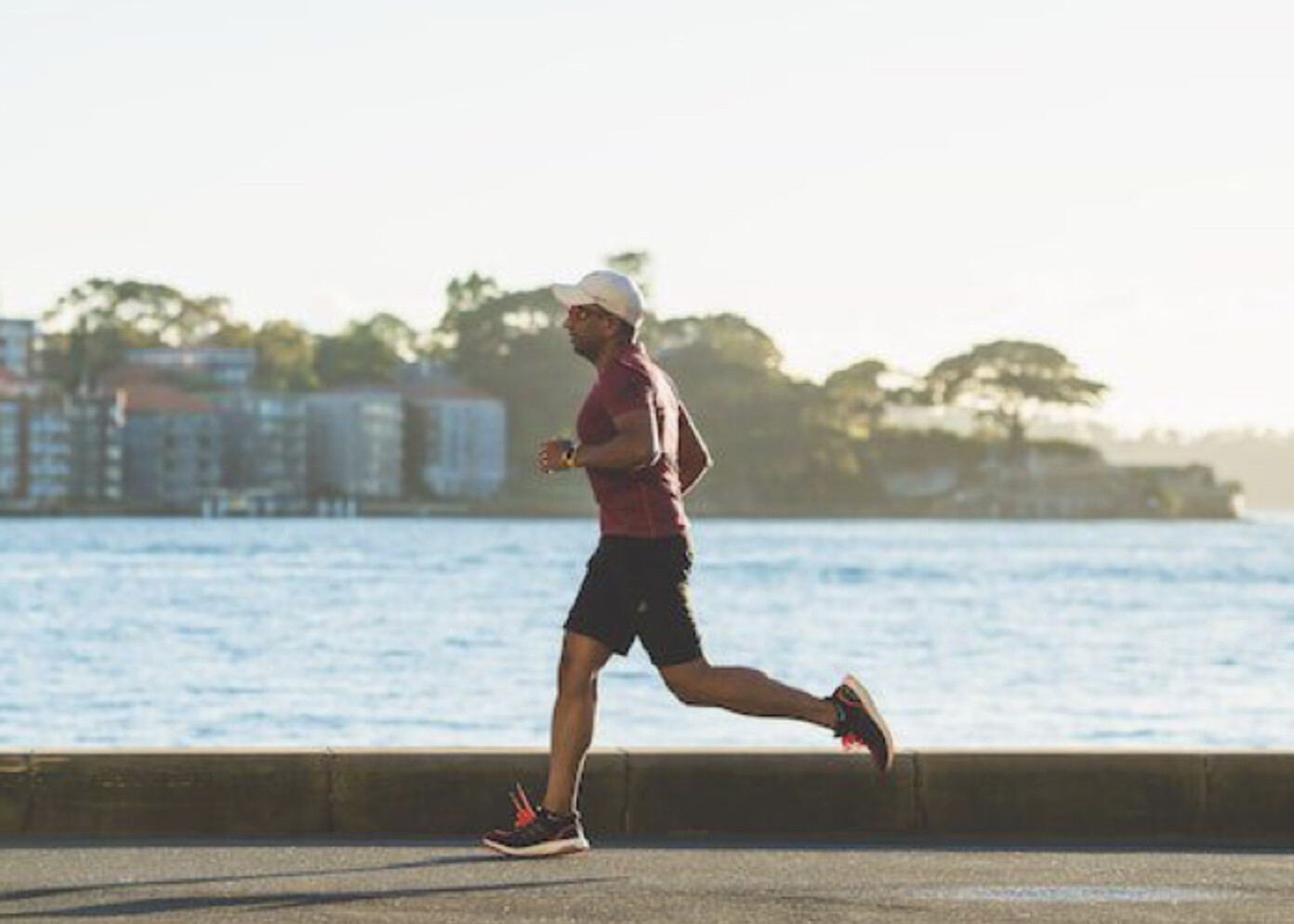
Renowned mind and movement researcher Brendon Stubbs of King’s College in London led the experiment, measuring the mental improvement of participants based on their performance on brain games, cognitive tests and well-being questionnaires over the course of the study.
Stubbs found that after found months, the previously inactive gamers increased their cognitive function, well-being and gaming performance. “The results show significant improvements in their cognitive functioning, including concentration levels and problem-solving abilities,” Stubbs reported.
Participants’ international gaming ratings improved by 75 per cent
Mental gamers’ cognitive function was boosted by an average of 10 per cent, with problem-solving skills improved by nine per cent, short-term memory increased by 12 per cent, and processing speed and alertness improved by 10 per cent.
Confidence levels increased by 44 per cent.
Focus improved 33 per cent and anxiety levels plummeted by 43 per cent
Players’ mental well-being was significantly better, with average mental state scores improving by 31 per cent
We all know that running is good for our mental and physical health, but the impact on acquiring information has been less well explored. The goal of the study was to examine the effects running has on people who depend on their cognitive abilities (like competitive gamers).
“Running stimulates cell growth in the brain and rapidly increases blood flow to the hippocampus and prefrontal cortex, mechanisms that enable us to better retain memories, process information, and problem solve quickly,” said Stubbs. “If running can significantly increase the mental performance of professional mind gamers, imagine what it could do for the rest of us.”
Inspired by the experiment, a camera crew followed four of the 77 competitive gamers as they exercised regularly to improve their (gaming) rankings.
The documentary, called Mind Games: The Experiment, documents the journeys of four gamers who specialize in chess, mahjong, poker and e-sports while competing in professional tournaments around the world. The documentary is currently available on Amazon Prime Video.
(01/28/2023) Views: 726 ⚡AMPby Running magazine
2023 Elite field announced for Tokyo Marathon
It’ll be hard to top the 2022 Tokyo Marathon. After all, Eliud Kipchoge and Brigid Kosgei each set the course records for the men’s (2:02:40) and women’s (2:16:02) races, respectively. The course records will stand, but neither Kipchoge or Kosgei are back to defend their titles.
So which fresh faces will stand atop the Tokyo Marathon podium? The fields are littered with World Marathon Major success stories—some ready to snag another title, others looking for their very first. Expect competitive, exhilarating races on both sides.
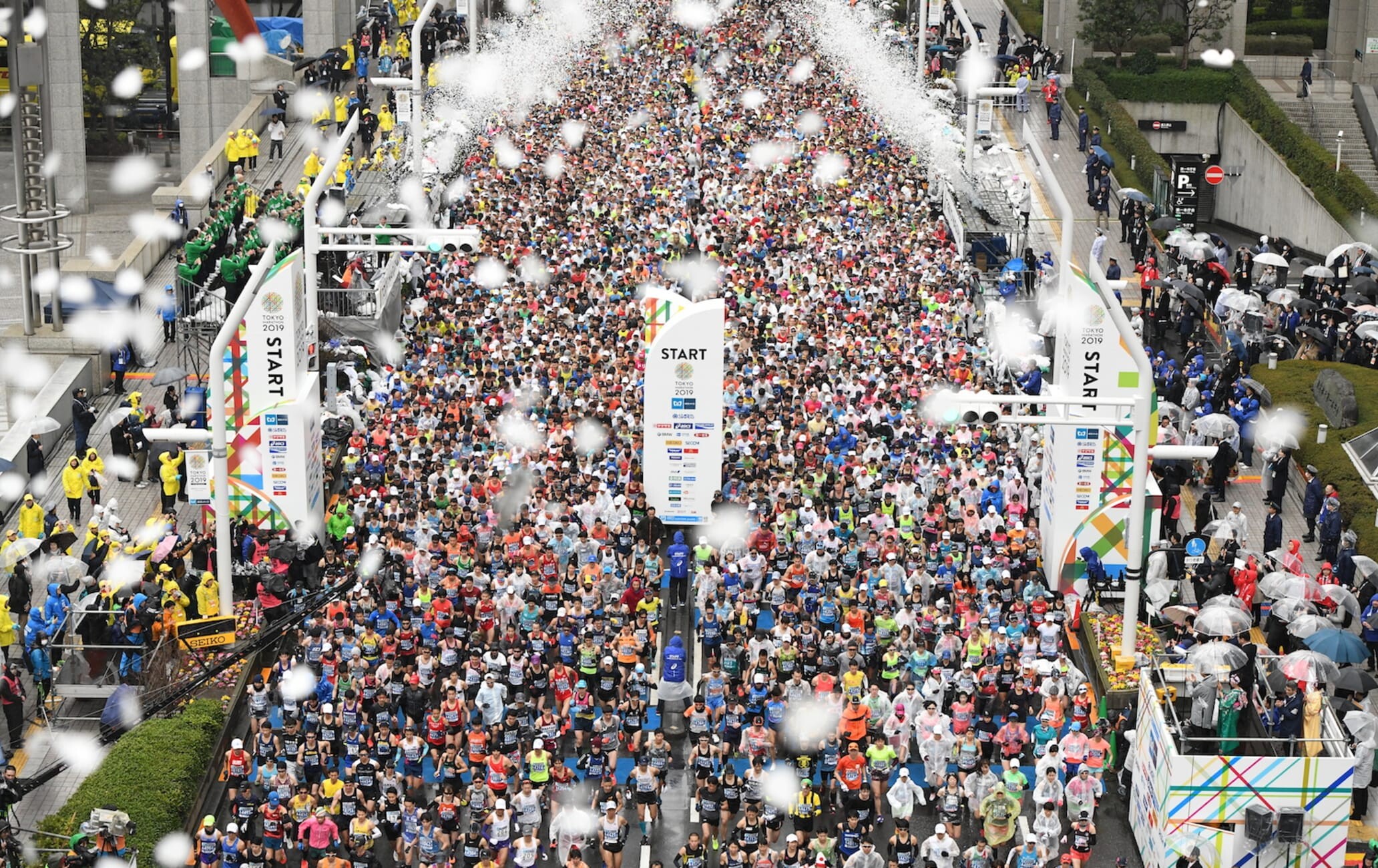
The Tokyo Marathon website has a comprehensive list of the men’s and women’s elite fields, but here’s who we’re looking out for.
Non-Major Marathon Champs Shoot for First Major Men’s Title
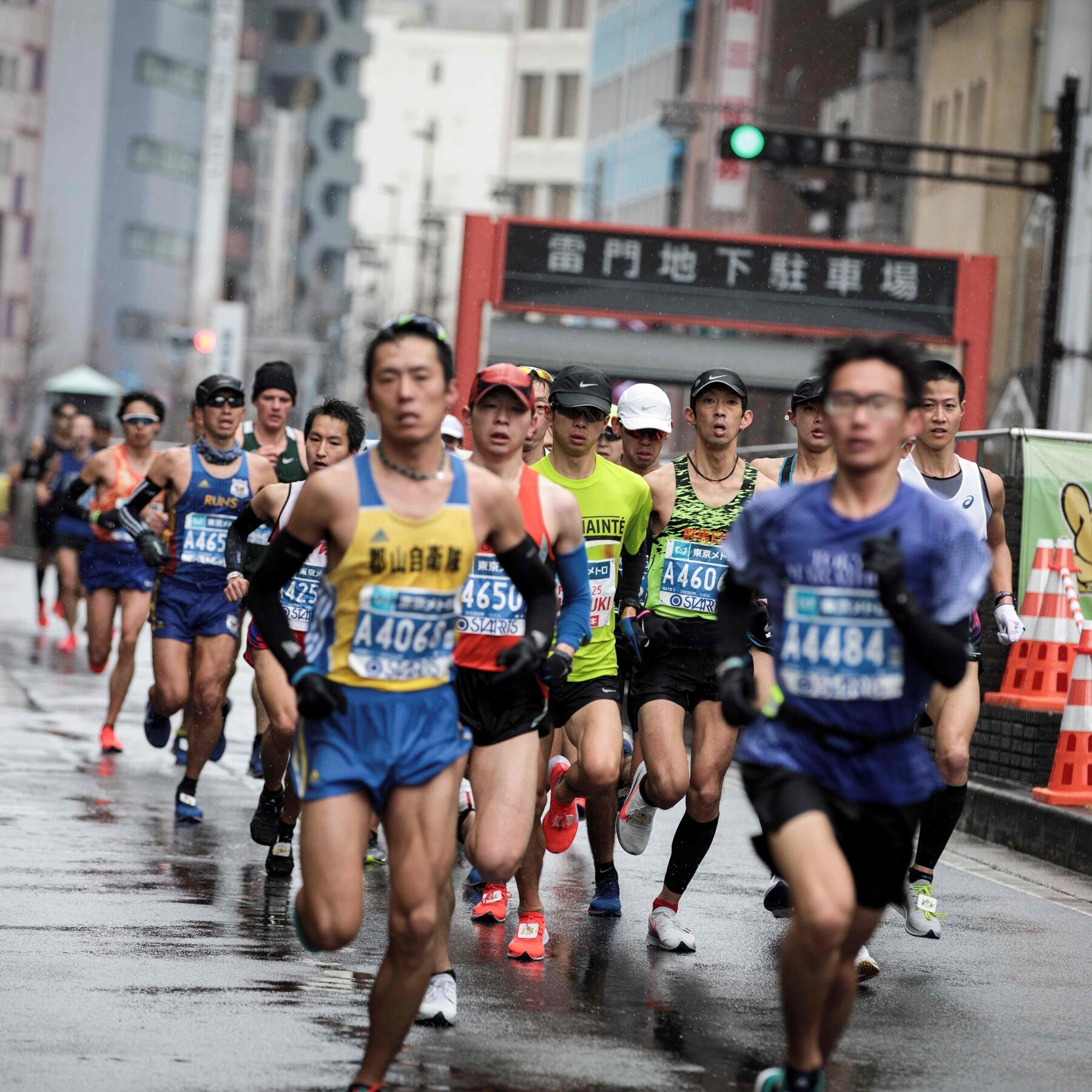
The men’s athletes are no strangers to winning. Sisay Lemma of Ethiopia leads the field in accolades with his 2021 London Marathon victory. He also has the fastest personal best in the field—2:03:36.
Behind him are a handful of men who have recently won big marathons—just not majors. CyBrian Kotut of Kenya won the 2022 Hamburg Marathon in 2:04:47. Deso Gelmisa of Ethiopia finished first at the 2022 Paris Marathon in 2:05:07. Titus Kipruto of Kenya won the 2022 Milano Marathon in 2:05:05. Each of them will be gunning for a major marathon win—as will 2022 New York City Marathon runner-up Mohamed El Aaraby.
There’s no shortage of home-grown talent either. Owning the Japanese record of 2:04:56, Japan’s Kengo Suzuki leads a group of seven other countrymates—all of whom want to make the podium.
All Eyes on the Six Women With Sub-2:19 Personal Bests
A talented group of women could challenge the top-10 all-time list. Six of the competitors have run faster than 2:19, but only one of them has cracked 2:18—Ashete Bekere of Ethiopia. She’ll have her hands full, as 2022 Berlin Marathon runner-up and third-placer—Rosemary Wanjiru of Kenya and Tigist Abayechew of Ethiopia, respectively—will want to nab a title.
The Japanese contingent, led by Mao Ichiyama and her 2:20:29 personal best, hope to put someone on the podium. However, they’ll likely have to run faster than 2:20 to do it, and just Ichiyama and Mizuki Matsuda have overcome the 2:21 barrier.
Lindsay Flanagan is the sole American elite in both races. She’s coming off a successful 2022 season that included a personal best of 2:24:35 and an 11th place finish at the New York City Marathon.
(01/27/2023) Views: 661 ⚡AMPby Chris Hatler
Tokyo Marathon
The Tokyo Marathon is an annual marathon sporting event in Tokyo, the capital of Japan. It is an IAAF Gold Label marathon and one of the six World Marathon Majors. Sponsored by Tokyo Metro, the Tokyo Marathon is an annual event in Tokyo, the capital of Japan. It is an IAAF Gold Label marathon and one of the six World...
more...Osaka Women’s Marathon set to crown new champion
A new name will be added to the Osaka Women’s Marathon list of winners on Sunday (29) as none of the past champions will be in attendance at the World Athletics Platinum Label road race.
Japanese women have dominated the race in recent years, winning six of the past seven editions. But the presence of Maurine Chepkemoi, Haven Hailu and Meseret Gola means there’s a high probability of an overseas visitor winning this year’s race.
Chepkemoi and Hailu have raced before, at the 2021 Amsterdam Marathon, where both women set their lifetime bests. Kenya’s Chepkemoi finished just one second ahead of Hailu on that occasion, 2:20:18 to 2:20:19, so the Ethiopian will he highly motivated for revenge.
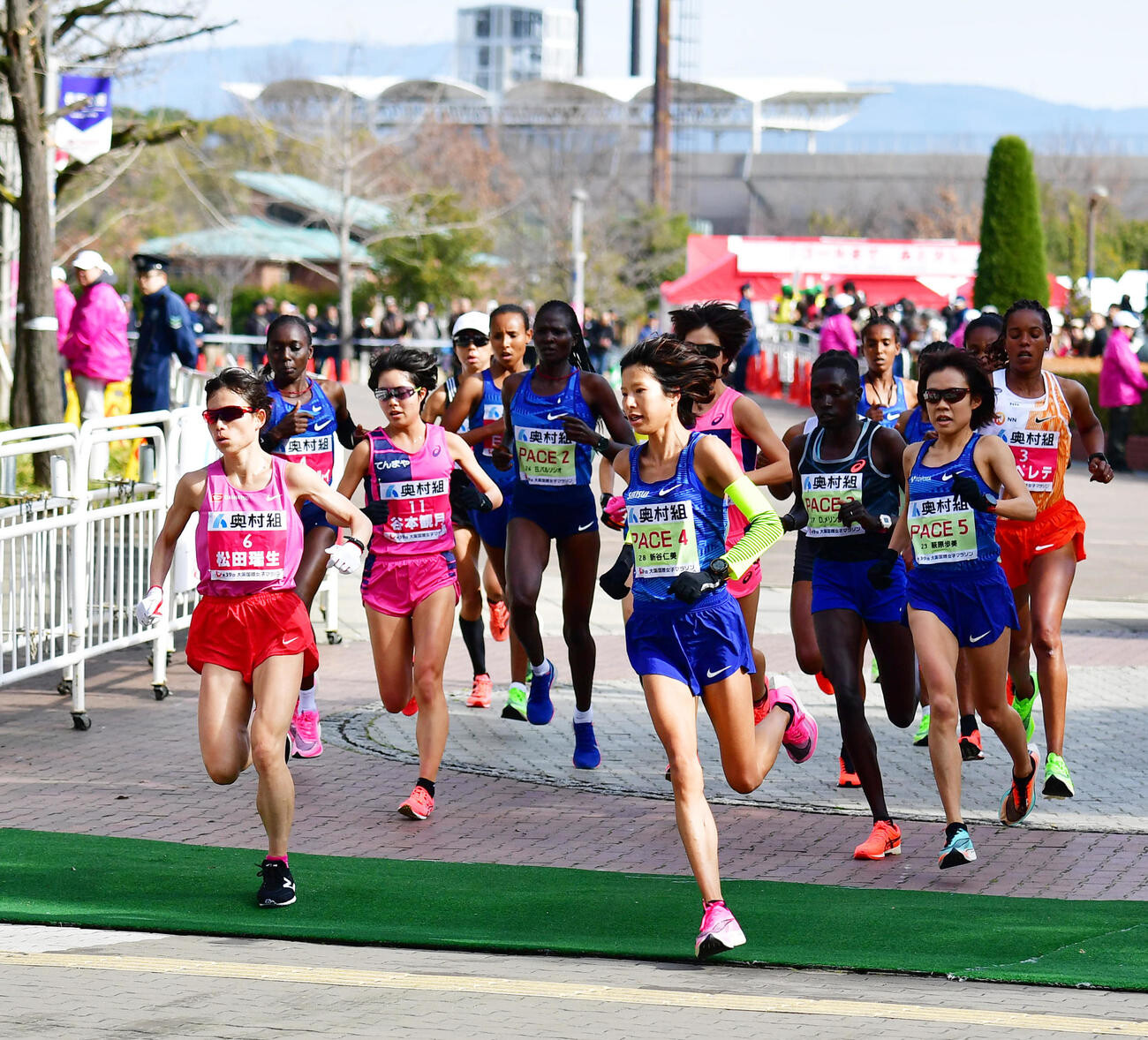
Both women went on to contest two marathons in 2022. Chepkemoi won in Enschede in 2:21:10 and then ran 2:25:12 in Berlin, but finished outside the top 10. Hailu, meanwhile, won in Rotterdam in 2:22:01 but then failed to finish in Chicago.
So this race will be a chance for redemption after both women had somewhat frustrating performances in their big city races at the end of last year. If Chepkemoi wins, she will be the first Kenyan winner of this race since Catherine Ndereba claimed victory back in 2006.
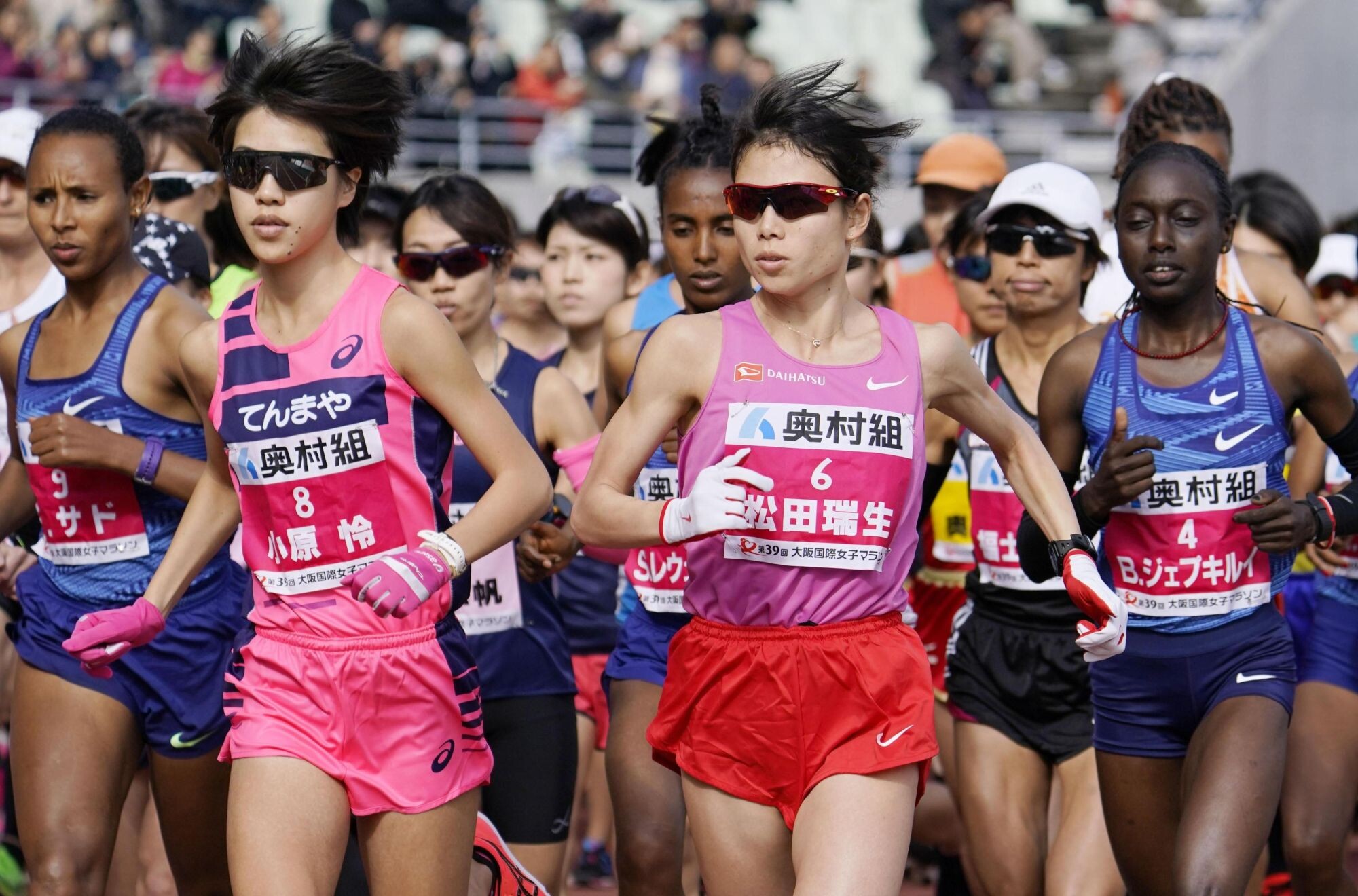
But Gola, Hailu’s fellow Ethiopian, should also be in contention for victory. A consistent performer, she has finished runner-up in four of her past six marathons. She set a PB of 2:20:50 when finishing second in Seville last year, and came close to matching that in Berlin seven months later with a 2:20:58 clocking to place fifth, comfortably ahead of Chepkemoi.
There is, as always, a strong contingent of Japanese runners in the field. For many, the focus will be on qualifying for the Marathon Grand Championship – Japan’s Olympic trial race – in October later this year. To earn a place in that race, the top three Japanese women must finish inside 2:28. Alternatively, if the first six Japanese women finish inside 2:27, they will qualify. Or if anyone places outside the top six Japanese finishers but still runs inside 2:24, they too will qualify.
Yuka Ando is the fastest Japanese woman in the field with her 2:21:36 PB from her marathon debut in 2017. A former third-place finisher in Osaka (2018), Ando achieved podium finishes in Nagoya in 2022 and 2020, finishing inside 2:23 on both occasions.
Sayaka Sato and Mao Uesugi should also be among the leading Japanese contenders. Sato finished sixth in Osaka last year, then went on to achieve a top-10 finish in Berlin, setting a PB of 2:22:13.
Uesugi, meanwhile, will be aiming to continue her progression in Osaka. She just missed the podium in 2021 but set a PB of 2:24:52. She then improved to runner-up last year, setting another lifetime best (2:22:29).
Organisers have made a few changes to the course for this year, which they say is just as fast as the old one, although there appears to be a few more inclines than before. The existing course record is 2:20:52, set last year by Mizuki Matsuda.
Elite field
Maurine Chepkemoi (KEN) 2:20:18
Haven Hailu (ETH) 2:20:19
Meseret Gola (ETH) 2:20:50
Yuka Ando (JPN) 2:21:36
Sayaka Sato (JPN) 2:22:13
Mao Uesugi (JPN) 2:22:29
Reia Iwade (JPN) 2:23:52
Sairi Maeda (JPN) 2:25:25
Haruka Yamaguchi (JPN) 2:26:35
Chiharu Ikeda (JPN) 2:26:50
Risper Gesabwa (MEX) 2:26:55
Munkhzaya Bayartsogt (MGL) 2:28:03
Shiho Kaneshige (JPN) 2:28:51
Alice Wright (GBR) 2:29:08
Sakiho Tsutsui (JPN) debut
Yumi Yoshikawa (JPN) debut.
(01/27/2023) Views: 675 ⚡AMPby World Athletics
Osaka International Womens Marathon
The Osaka International Ladies Marathon is an annual marathon road race for women over the classic distance of 42.195 kilometres which is held on the 4th or 5th Sunday of January in the city of Osaka, Japan, and hosted by Japan Association of Athletics Federations, Kansai Telecasting Corporation, the Sankei Shimbun, Sankei Sports, Radio Osaka and Osaka City. The first...
more...Test your speed during this short interval cutdown workout
The key to improving your speed over middle and long distances is to find a balance between building your anaerobic strength and your endurance. Many athletes will use interval training as a tool to improve their speed over a short period. Intervals are essential in getting your body comfortable with being uncomfortable, which can help you adjust to a quicker pace on race day.
An interval workout can be exhausting, depending on the set pace during the reps and the rest between intervals; the goal of this interval workout is to develop your speed by getting your body to feel relaxed at a faster-than-usual pace.
Workout
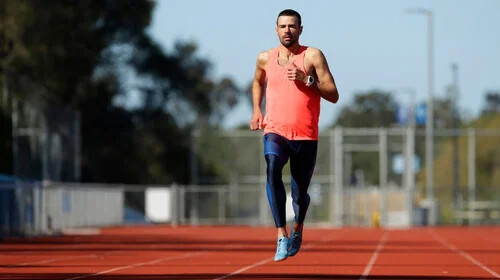
Before the workout, do a light, 10-15 minute warm-up jog to get your blood flowing.
90-90-90-60-60-60-30-30-30 — all with two minutes walk/jog rest between
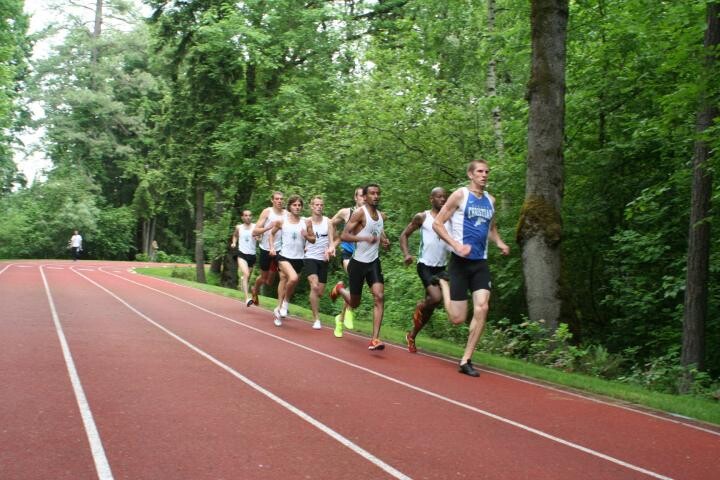
The paces on 90-second reps should be around your 5K goal pace. The 60s should be around 90 per cent of your all-out, or one-mile pace, and the 30-second reps should be done at near all-out, or 800m pace.
This progression interval workout is designed for any middle-distance runner up to 10K. This session can be done on the road, treadmill or track.
Example for a 25-minute 5K runner:
The 90s @ 4:50-5:00/km, 60s @ 4:10-4:15/km, and 30s @ 4:00/km or faster.
The short two minutes of rest off high-intensity interval training improves your lactate threshold and pain tolerance.
Be sure to push yourself, and maintain proper form when running hard. The workout won’t be a breeze, but it will give you an idea of your middle-distance potential from the mile to the 5K.
(01/27/2023) Views: 550 ⚡AMPby Marley Dickinson
Try a smoothie bowl for pre- (or post-) run protein perfection
If you’re training for a spring race, you’re probably starting to increase mileage–and it’s important to be mindful to take in enough energy (calories) to fuel your running adventures. A smoothie bowl is a simple and delicious way to up your protein intake, and once you’ve made one, you’ll see the flavour possibilities are endless.
Get creative and enjoy smoothie bowls as snacks or meals. Bonus–you can make them look beautiful, too. My favourite recipe for smoothie bowls comes from Angela Liddon, author of the Oh She Glows plant-based cookbook series.
Chocolate Dreams Protein Smoothie Bowl

Smoothie bowl ingredients
1/2 cup unsweetened almond milk (more if needed)

1 large banana, chopped (about 1/4 cup)
2 Tbsp avocado
1 scoop protein powder (look for powders with no additives or extra sugar)
2 Tbsp cocoa powder
1–3 chopped dates, or liquid sweetener to taste (a dash of maple syrup works)
1 or 2 ice cubes
Topping suggestions
Chopped strawberries
Shredded or flaked unsweetened coconut
Sliced banana
Hemp hearts
Chia seeds
Directions
Put the almond milk in a high-speed blender, then add the remaining ingredients and blend until smooth. The smoothie should have a thick, soft serve-like texture. You can add a bit more milk if your blender is having a hard time mixing your ingredients.
Spoon the smoothie into a bowl (I like to put a scoop of granola in the bowl first for a bit of crunch) and add your desired toppings. Enjoy immediately.
(01/27/2023) Views: 655 ⚡AMPby Keeley Milne
Avoid the seven most common tapering mistakes the week before a half marathon
The week before a half marathon can make or break one’s performance. Months of training can be wasted by trying to fit in one last workout. On the other hand, resting too much in the week before a half marathon (or even the week before a 5k) can leave one feeling flat and low-energy on race day.
Tapering is a training microcycle that usually takes place the week before a key event, such as a half marathon or a 5k. Longer events like marathons or ultramarathons require longer tapers. Tapering for an event is one of the most complicated and mysterious aspects of athletic performance.
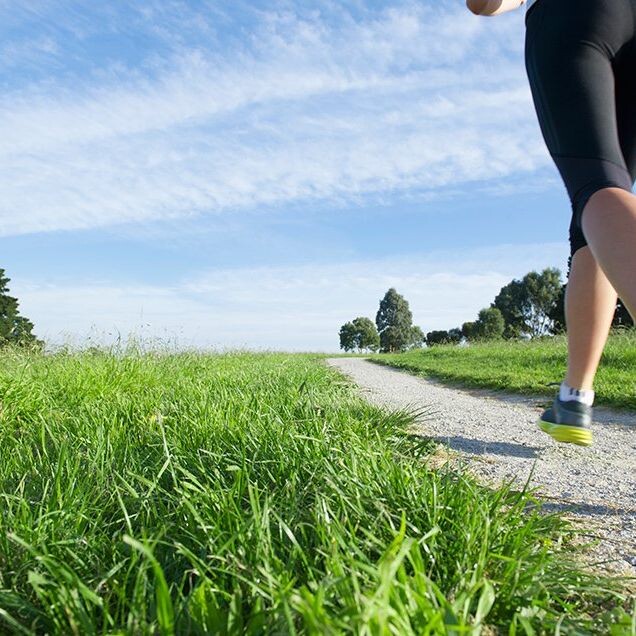
Learn the seven most common tapering mistakes people make the week before a half marathon. Follow the training plan for the week before the race to arrive fresh, fit and fast at the start line!
Tapering for a half marathon the week before is easy to mess up. Don’t make these seven mistakes!

1. TRAINING TOO MUCH BEFORE THE RACE
Many amateur runners think it is good to train hard right up until the race, particularly in the last few weeks. But these efforts turn out to be counterproductive. Standing at the start feeling tired is a recipe for disaster.
Instead, decrease total training volume by 30-50% in the week before a half marathon, but not the number of intensity sessions. For example, if the total distance ran two-weeks before the event was 50 km, the total distance should be no more than 35 – 25 km in the final week before the event.
Intensity should not drastically decrease despite overall distance dropping. For example, if a training plan usually calls for two days of intensity per week, still perform those two days of intense training during the final week before the event.
Reduce the number of intervals in a session by 20% of what they were in the last hard week of training. Even though overall running distance decreases, intensity may actually increase relative to the amount of total distance.
The bottom line: a good taper focuses on quality, not quantity. Do short and fast runs; decrease overall training distance by cutting back on endurance run distance.
2. NOT WORKING OUT AT ALL
Tapering and reducing training volumes does not mean you should just put your feet up and stop working out. The tricky part about tapering is not to lose the fitness and pace endurance you have built up. The best way to avoid this is by reducing your mileage and focusing on short and intense workout sessions.
In the last week, it is important to get one more hard workout in four or five days before the race. This is designed to give your muscles one last training stimulus and to prepare your body for the demands of the upcoming race.
Retaining intensity while decreasing training volume in the week before a half marathon has been shown to be an effective tapering strategy for most athletes.[1]
3. STRENGTH TRAINING AND UNFAMILIAR EXERCISES
In the week before a half marathon avoid strength training and unfamiliar exercises. Fatigued and/or sore muscles can quickly endanger performance. Of course, continue to do stretching and mobilization exercises if they have been a regular part of training.
One exercise that could be beneficial in the week before a half marathon is a meditation exercise. Often, athletes develop performance anxiety due to the upcoming event and the abundance of energy (if they are tapering correctly). Meditation can help the mind prepare for the demands ahead of it.
Try the guided meditation by professional ultramarathoner Timothy Olson, posted in a video:
4. CHANGING EQUIPMENT THE WEEK BEFORE AN EVENT
Never change any equipment the week before a key race! This ranges from running shoes to sports nutrition and diet. New running shoes can cause an injury that robs one of even starting a half marathon. Sports nutrition can lead to cramps or GI issues that ruin a race.
5. POOR DIET AND ALCOHOL CONSUMPTION
Letting diet slip the week before a big event is tempting. The body is busy replenishing glycogen stores, appetite is high, but total calorie expenditure should have decreased. This can lead one to give in to sugar cravings, especially if one is nervous about the upcoming event.
Now is more important than ever to eat like an athlete. Give the body the nutrients it needs to freshen up before putting in an amazing performance. Here are the nine best foods for runners. Don’t skimp on carbs the two days before the event, and use this carb calculator.
Having an extra drink or two might feel good and promote relaxation; however, it can also lead to poor sleep and dehydration. If maximal performance is on the line, skip the nightcap in the week before a half marathon.
6. NOT SLEEPING ENOUGH
Sleep is crucial throughout all training phases, but especially in the week before a half marathon. If one has been training hard, the body needs sleep to rebuild and regenerate.
Race nerves can prevent athletes from getting quality sleep in the lead-up to an important event. Here are some practical tips to get fantastic sleep during this crucial week:
Go to bed an hour earlier than usual
Wake up an hour later than usual
Take a nap during the day
Meditate instead of lying in bed awake if having trouble sleeping
If sleep doesn’t come (especially the night before the event), just keep eyes closed and focus on breathing
Don’t stress about not sleeping enough (this will cause sleep issues itself)
7. CATCHING UP ON LIFE
Training for an event sometimes means putting other life factors aside for a time. Weeding the garden, helping kids with homework, cooking dinner or finishing a big project at work all take energy. It can be tempting to finally tackle those life factors that have been put off during training since tapering means less time spent training.
Don’t think of tapering as less time training, but more time for recovering. Because recovering is training too, all those projects can wait one more week. Don’t feel guilty about putting the feet up on the sofa or sneaking off for a nap. Ask partners for continued understanding for one more week and assure them their understanding will mean a lot.
(01/26/2023) Views: 685 ⚡AMPby Morgan Cole
Best running quotes from Steve “Pre” Prefontaine
Today, one of the most iconic runners in American history would have turned 72.
On this day in 1951, one of the most iconic runners in North American history was born. Steve “Pre” Prefontaine from Coos Bay, Ore., became one of the biggest icons in the sport during his time at the University of Oregon in the 70s, where he held seven American records from the 2,000m to the 10,000m.
Today Prefontaine would have been 72, but his life was cut short on May 30, 1975, when he died in a car accident in Eugene, Ore. He was 24 at his death.
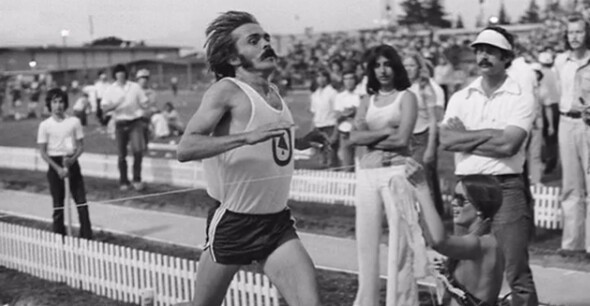
Prefontaine competed in the 1972 Summer Olympics in Munich and was preparing for the 1976 Olympics with the Oregon Track Club at the time of his death.
The American distance runner will be always remembered for his raw talent, racing style, iconic moustache and motivational quotes.
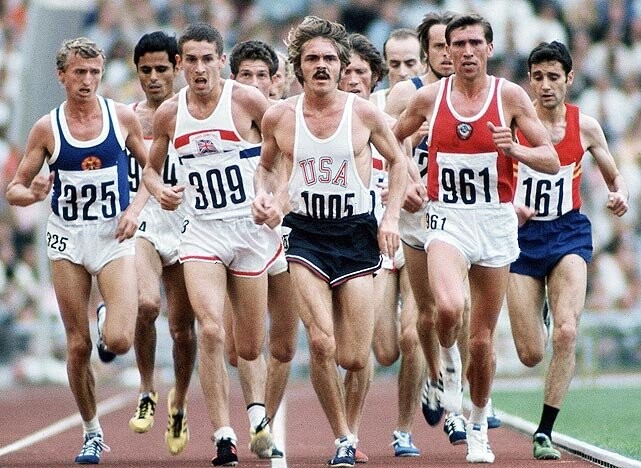
Pre’s race tactics were often bold, running hard from the gun instead of having a sit-and-kick mentality. That sort of race mentality is evident in some of his most memorable quotes, which are as follows:
“To give anything less than your best is to sacrifice the gift.”
“A lot of people run a race to see who is fastest. I run to see who has the most guts, who can punish himself into an exhausting pace, and then at the end, punish himself even more.”
“Some people create with words or with music or with a brush and paints. I like to make something beautiful when I run. I like to make people stop and say, ‘I’ve never seen anyone run like that before.’ It’s more than just a race, it’s a style. It’s doing something better than anyone else. It’s being creative.”
“Somebody may beat me, but they’re going to have to bleed to do it.”
“I don’t just go out there and run. I like to give people watching something exciting.”
After his death, three movies were later released based on his storied career: Without Limits, Prefontaine, and Fire on the Track.
Happy 72nd Birthday Pre!
(01/26/2023) Views: 985 ⚡AMPby Marley Dickinson
Prefontaine Memorial Run
During his brief 24-year lifespan, Steve Prefontaine grew from hometown hero, to record-setting college phenomenon, to internationally acclaimed track star. In a similar span of years since his death in 1975, Pre has become the stuff of enduring legend. His rare combination of talent, discipline, determination, and star-quality with a human touch made Pre the idol of those he called...
more...How to get the most out of your low running mileage
Are you wanting to get faster for an upcoming race, but everything you read is only telling you to run more? Although many of the pros run hundreds of kilometres per week, high mileage for the everyday recreational runner who has work, family and other commitments is unrealistic. Increasing the distance you run is bound to help your body become more familiar with faster paces and distances, but not every runner has time to do that.
If you don’t have time to increase your mileage, here’s how to get the most out of the mileage you’re currently running.
What is low mileage?
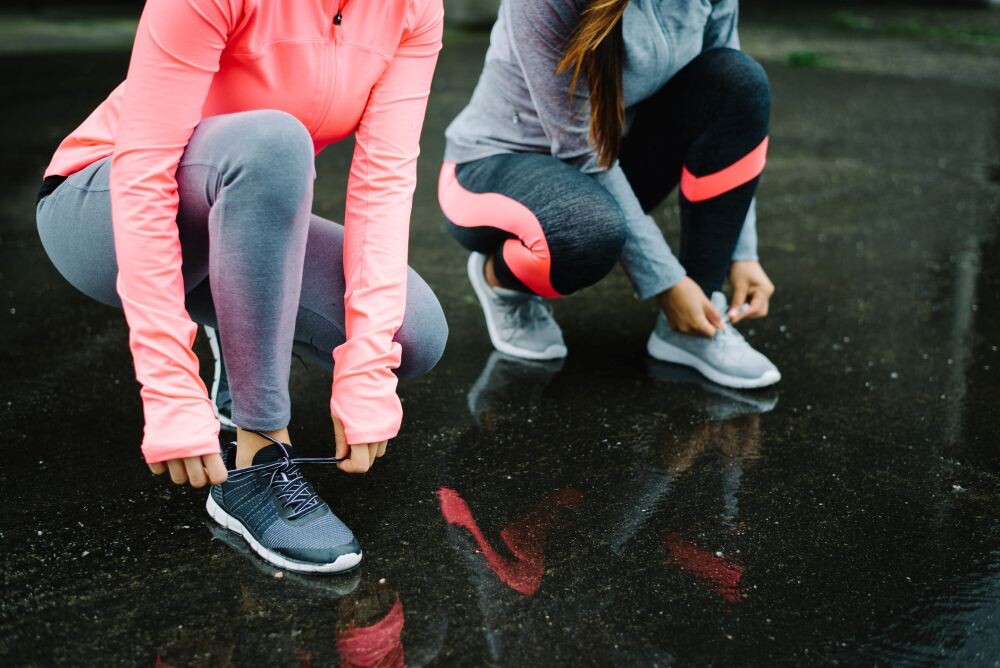
A low-mileage training plan has no set distance, and it can vary depending on the race distance you are training for. If you are training for a marathon, 60 to 80 kilometres per week would be seen as relatively low; a 5K or 10K runner can typically get away with 30 to 50 kilometres a week, with high-quality speed sessions.
Prioritize speed workouts
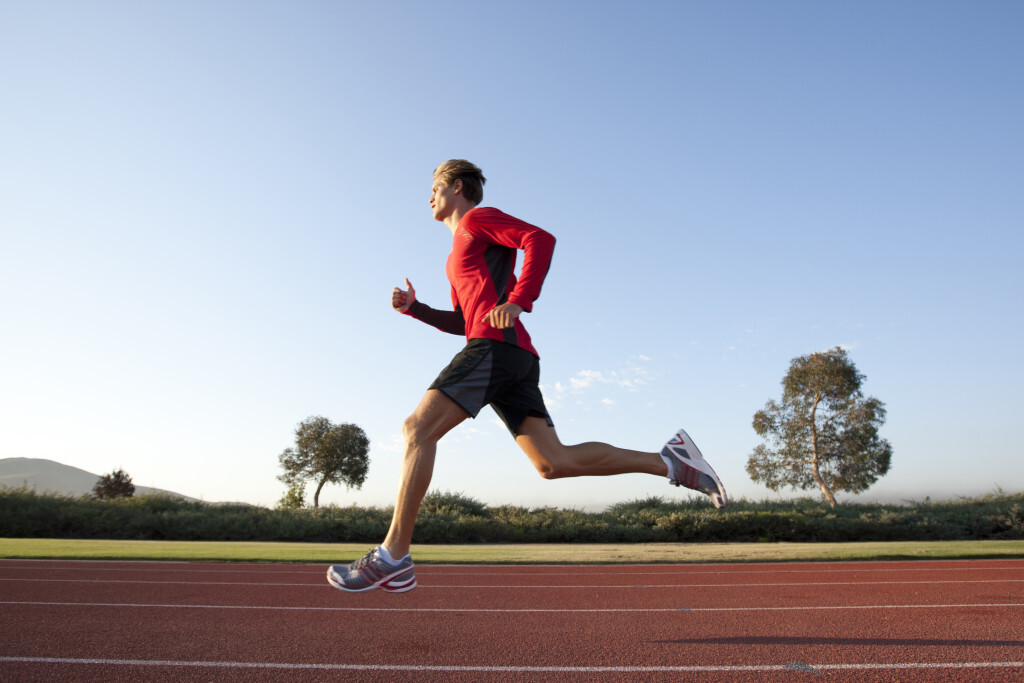
Whatever your training goal may be, your training schedule should be designed around two quality speed workouts each week. These days will be the most important sessions of the week to get the most out of your low mileage.
If your goal is to break 20 minutes in the 5K, the bulk of your speed workouts should equal up to the distance you’re training for and match the paces needed to reach your goal. (Example: For a 20-minute 5K, 12x400m @ one minute and 35 seconds per lap, which is equal to 18-20 minutes of running).
Keep easy runs short
Studies have shown that anything between 10 and 40 minutes of running can be beneficial when recovering from a tough run or workout. Easy runs are done to get your heart pumping and stimulate blood flow to your legs, but at an intensity that won’t fatigue you.
They are also an opportunity to teach your body how to run in a fatigued state, which can be crucial when you’re entering the final few kilometres of your goal race.
Ideally, you should do your easy run within 24 hours of your last hard workout or long run to keep your legs moving, but keep the time and distance between 15 and 45 minutes depending on what you are training for.
Make strength training essential
The lower your mileage, the more important it is to use strength training as a tool to power your aerobic engine. Cross-training exercises like biking, swimming, HIIT or elliptical training can help someone on lower mileage maintain their aerobic fitness, despite cutting out longer runs. Doing a short 20 to 30-minute low-impact strength session on your rest days can only help you become a stronger runner.
Structure your rest days
Runners on a low-mileage plan should generally take two rest days per week. These rest days should be planned around your harder workouts and long run, on opposite ends of the week (see below).
Example: Monday (workout), Tuesday (easy run), Wednesday (rest), Thursday (workout), Friday (easy run), Saturday (long run), Sunday (rest)
Strategically planning your rest days will be key to getting the most out of your low mileage and having your body rested heading into your speed workouts.
(01/26/2023) Views: 822 ⚡AMPby Marley Dickinson
AIU hands Kenyan Betty Wilson Lempus five-year ban
Betty Wilson Lempus was Thursday handed a five-year ban by Athletics Integrity Unit (AIU), for violations of the World Athletics Anti-Doping Rules (ADR).
Her period of ineligibility begins on October 14, 2022, the date on which she was provisionally suspended. Her results on and since September 5, 2021 (the date on which she tested positive) have been disqualified.
In October 2022, the Kenyan was first charged with Tampering or Attempted Tampering with any part of Doping Control (Rule 2.5 ADR), including obstructing or delaying the AIU’s investigation through the provision of false information or documentation.
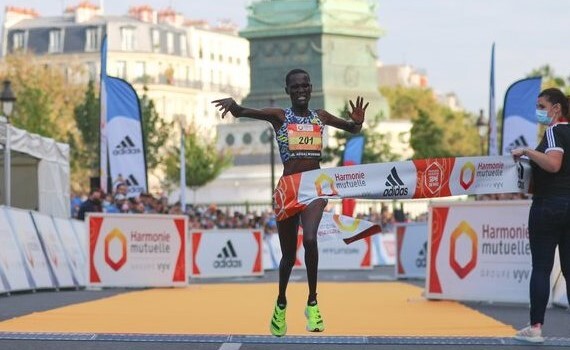
Then, last month, Lempus was further charged with the presence of a Prohibited Substance or its metabolites or markers (Rule 2.1 ADR; Triamcinolone Acetonide).
Lempus, who finished third at 2018 Shanghai International Marathon, tested positive for prohibited substance triamcinolone acetonide following her win at the 2021 Harmonie Mutuelle semi de Paris half marathon having posted a time of 1:05:46.
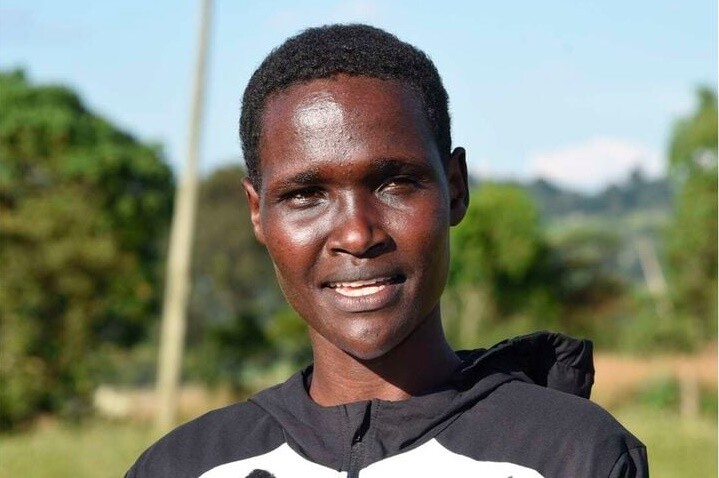
Lempus, 31, alongside the 2021 Boston Marathon champion, Diana Kipyokei had provisionally been suspended for using banned substances last year in October.
Both have also been charged with obstructing the AIU’s investigation by providing false information or documentation.
Lempus finished fifth at the Prague Marathon in 2:24:16 last year, and won the Paris Half Marathon in 1:05:46 the same year.
In 2016, the country was placed in category 'A' of the World Anti-Doping Agency’s (WADA) compliance watch list.
(01/26/2023) Views: 742 ⚡AMPby Agnes Makhandia
Why conversations surrounding eating disorders so often fall short
As an avid trail ultra-runner, I used to believe that working on my self-esteem and self-confidence, fixing my relationship with eating and divesting from diet (a.k.a. “wellness”) culture was enough for me to stay on the path toward healing. For context: I struggled with an eating disorder (undiagnosed bulimia) for about three years, starting my recovery five years ago. Today, I can confidently say, I have finally arrived at a place where I feel at home in my body, but I must stress that the path to getting here was winding and convoluted.
You see, one of the challenges of struggling with an eating disorder in the running community, especially if you’re a Black woman, is that most of the runners talking about their struggle are thin, white, elite women runners. This was true seven years ago, and it is still true today.

Eating disorders are thus seen as a predominantly white affliction, and the ways in which they are talked about have the effect of “centering” whiteness–i.e., it assumes everyone in the conversation is white. As a result, when it comes to questions about the causes of eating disorders, most discussions lack nuance, focusing on body image, why eating enough or eating “healthy” is important for recovery, the “runner’s body” and the ideal of thinness—surface discussions about how striving for a certain body esthetic is problematic, with an emphasis on what is now framed in the running world as the “any body is a runner’s body” narrative.
This discourse offers an incomplete picture. Non-white and Black folks like myself end up feeling disconnected and excluded from the narrative, and other complex layers around development, diagnosis and recovery are ignored. If you’re someone who lives with multiple marginalized identities (I’m an immigrant who identifies as a Black Kenyan-Somali Muslim woman), many of these factors are rooted in systemic issues. Of course, for folks who identify as queer, or trans, it’s even harder to feel seen. The stories we read, by default, have a tendency to distance eating disorders from the larger framework of oppression, thus allowing these systems to go unchecked and further complicating recovery for some (or rather, the majority, since studies have shown that eating disorders are highest in trans communities).
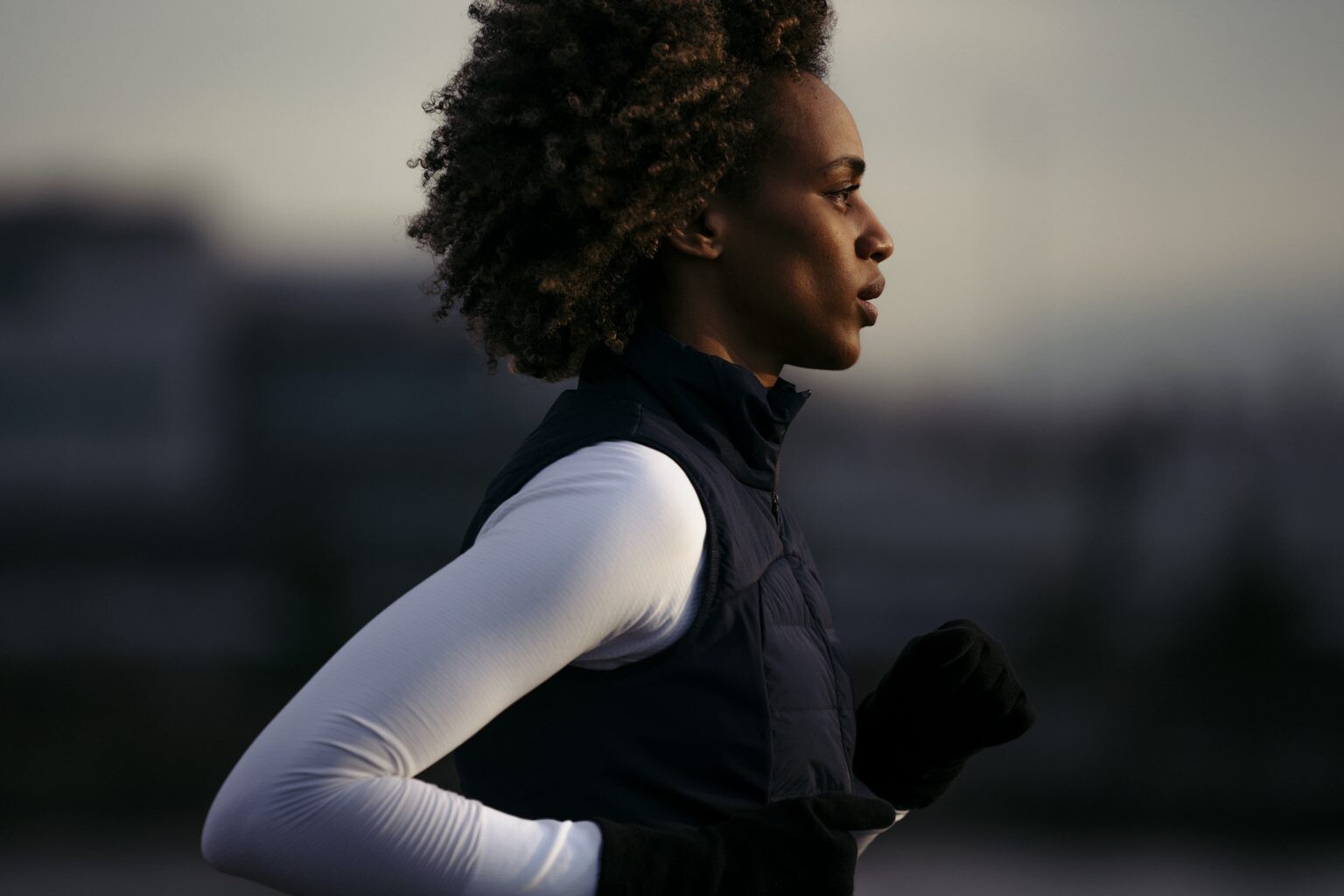
I offer up this piece as part of my attempt to broaden the discussion established by the current wave of writing and thinking on eating disorders in the running world. When we rarely address the politics of what it is like to run and live in a marginalized body struggling with an eating disorder, we cause further harm. Most Black and non-white folks end up struggling alone in silence, like I did. In addition, the running world furthers this harm when they choose to center body image and/or behavioral factors when talking about the causes of eating disorders. Framing eating disorders as a struggle with body image alone turns it into an issue about one’s individual relationship with their body and excuses institutionalized oppression.
As a Black woman who struggled with body dysmorphia and focused on healing my body image for the first few years of my recovery, I can honestly say that that was only one piece of the puzzle. During this time, I also turned to the Body Positive movement, which is heavily adopted in the running world, but I still felt like something was missing.
The way Body Positivity is currently viewed in the running world, there is an emphasis on loving and accepting your body as it is. There is little to no attempt to understand the systemic reasons that it’s more complicated than that in our world. This can partly be explained by the faces behind the Body Positive movement–again, mostly small bodied, white women. For this reason, Body Positivity does little to nothing to fight against anti-fat bias and other systems of oppression, and this is why for me it wasn’t enough.
Learning from fat activists about how the Body Positive movement had its roots in fat activism and fat liberation and then deviated from this politic once it became popularized, helped me reach the place I am today. So did learning about how systems of oppression operate within the running spaces I’m in, and how these continue to complicate not only my relationship with my body, but also my eating.
Although I say I feel at home in my body today, this work is multifaceted and non-linear and forever ongoing, because we live in a toxic world where anti-fat bias has been normalized, and, just like the stories we see about eating disorders in the running world, it is the thin, white experience that gets centered.
We need to do better. We can start by de-centring the experience of white women and featuring more diverse stories of marginalized folks.
We can decouple health and running and stop talking about health alongside weight loss in our running communities. This promotes fatphobic messaging and causes harm.
We can find or create running communities that do not promote diet culture and/or normalize disordered behaviors. For me, this happened organically through the Project Love Run collective/initiative.
(01/25/2023) Views: 702 ⚡AMPby Filsan Abdiaman
Rak Half Marathon
The Ras Al Khaimah Half Marathon is the 'world's fastest half marathon' because if you take the top 10 fastest times recorded in RAK for men (and the same for women) and find the average (for each) and then do the same with the top ten fastest recorded times across all races (you can reference the IAAF for this), the...
more...B.A.A. announces pregnancy deferral accommodations for all B.A.A. events, including Boston Marathon
The Boston Athletic Association (B.A.A.) announced today accommodation enhancements pertaining to runners who are expecting or have recently welcomed a child into their families. Pregnancy and postpartum deferrals of entries will now be available for registered participants at all B.A.A. events, including the Boston Marathon (April), B.A.A. 5K (April), B.A.A. 10K (June), and B.A.A. Half Marathon (November).
“In listening to our participants and stakeholders, the desire from mothers and expecting mothers to participate in our races –particularly the Boston Marathon—while also focusing on building a family was clear,” said Jack Fleming, President and Chief Executive Officer of the B.A.A. “Women who are entered in a B.A.A. race and want to expand their family will be able to do just that without giving up a chance to participate at a future B.A.A. event.”

Any athlete who is a registered entrant in a B.A.A. event and is or becomes pregnant prior to race day and chooses not to participate due to such circumstances will be eligible to receive a deferred entry into one of the next two subsequent future races. The new pregnancy and postpartum deferment policy is effective immediately, and includes athletes who are entered in the Boston Marathon by way of qualifying time or invitational entry.
Athletes seeking a pregnancy or postpartum deferral may submit a request in writing to registration@baa.org any time between receiving confirmation of acceptance into the event and up to 14 days before race day. Upon receipt of a pregnancy or postpartum deferment request, the B.A.A.’s Athlete Services team will be in contact with the athlete and will request confirmation of pregnancy from a physician, registered midwife, or other medical professional.
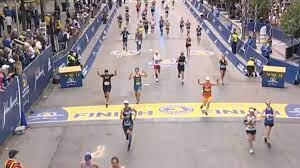
“We at the B.A.A. are always looking for ways to improve the participant experience starting at the point of registration, and have been collaborating to create this policy for many months,” said Susie Cleary, the B.A.A.’s Director of Athlete Services. “This new deferral accommodation has been implemented with the goal of supporting mother runners along their journey at all our events, from the 5K distance through the marathon.”
If an athlete becomes pregnant again during a pregnancy or postpartum deferral period, they may request a second consecutive pregnancy or postpartum deferral. This would permit the athlete to defer their race entry for a subsequent two-year period. The B.A.A. will allow up to two consecutive pregnancy deferral requests per athlete. Policy details will be posted on www.baa.org soon.
The pregnancy deferral opportunity is an accommodation in addition to the registration insurance currently offered to Boston Marathon participants, which covers refunds for a variety of situations, including pregnancy. All other rules and requirements for race entry after a pregnancy or postpartum deferral will apply, including payment for future registration entry fees.
In addition to deferrals, the B.A.A. will be enhancing accommodations for recent mothers on race weekend. For more than a decade, mothers have been provided the opportunity to utilize designated tents at the start and finish of the Boston Marathon for lactation pumping. In response to the overwhelming support of this program and the accompanying medical device transport program (where race officials transport devices such as breast pumps from the start to finish), the B.A.A. plans to share additional accommodations as race day approaches. The B.A.A. is currently consulting a group of mother runners to help facilitate best practices at our events. More information will be shared with participants over the coming months.
ABOUT THE BOSTON ATHLETIC ASSOCIATION (B.A.A.)
Established in 1887, the Boston Athletic Association is a non-profit organization with a mission of promoting a healthy lifestyle through sports, especially running. The B.A.A. manages the Boston Marathon, and supports comprehensive charity, youth, and year-round programming. The Boston Marathon is part of the Abbott World Marathon Majors, along with international marathons in Tokyo, London, Berlin, Chicago, and New York City. Since 1986, the principal sponsor of the Boston Marathon has been John Hancock. The 127th Boston Marathon is scheduled to take place on Monday, April 17, 2023. For more information on the B.A.A., please visit www.baa.org.
(01/25/2023) Views: 630 ⚡AMPby Boston Athletic Association
Boston Marathon
Among the nation’s oldest athletic clubs, the B.A.A. was established in 1887, and, in 1896, more than half of the U.S. Olympic Team at the first modern games was composed of B.A.A. club members. The Olympic Games provided the inspiration for the first Boston Marathon, which culminated the B.A.A. Games on April 19, 1897. John J. McDermott emerged from a...
more...Try a cut-down tempo workout to prime your legs for race day
Tired of running the same intervals or hill repeats on speedwork days? A cut-down tempo run will add some zest to your routine while setting your body up to run hard on race day. In a cut-down run, the longer, mentally tough sections of the workout are done first, with intervals getting shorter and faster as you continue.
This can be a great way to increase intensity in your speed workouts without adding risk of injury–your body is very warmed up and ready to roll by the time you hit the faster sections.
How do I run it?
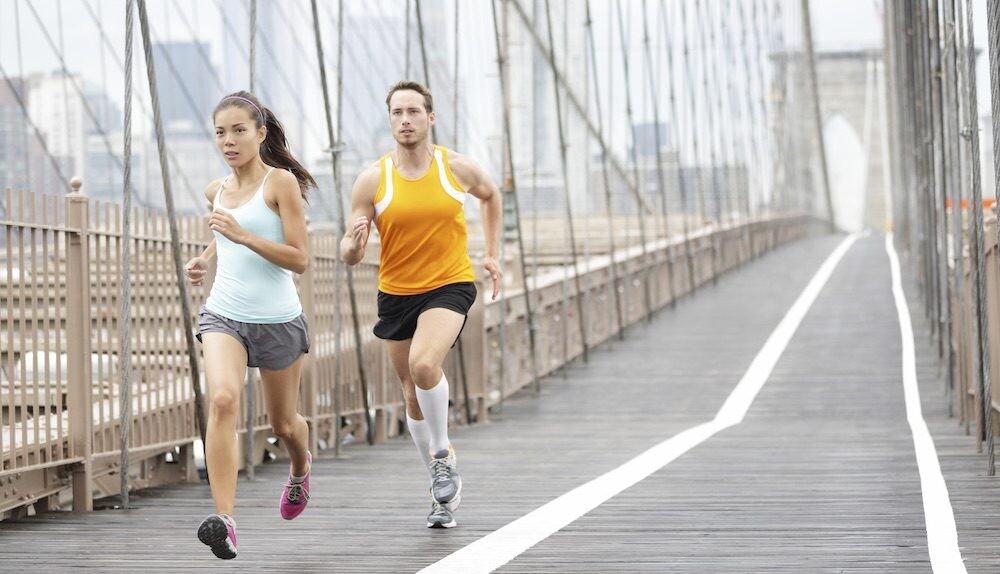
The cut-down tempo run using distance or time, with the goal of increasing your speed as the intervals get shorter. It’s a great way to prime your legs and lungs to work hard when fatigued, helping you master that finishing kick on race day.
Rest is short in a cut-down run, so maintaining a smooth pace in the early intervals is important so that you’ll still be able to increase your speed at the end. In both these workouts, begin at around your half-marathon pace, picking up speed with each interval until you’re running at 5K race pace for the final push.
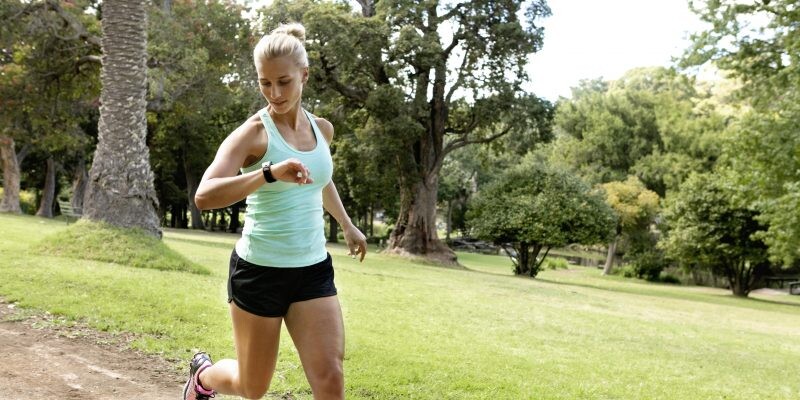
Cut-down workout by distance
Warm up with 2–3 kilometers of easy running
Run 1 km harder followed by 200m easy running for recovery, 800m hard followed by 200m easy, 400m, 200m, 100m (maintaining the 200m light jog in between each interval).
Cool down with 2–3 kilometers of easy running
Cut-down workout by time
Warm up with 10–15 minutes of easy running.
Run 5:00 minutes at goal pace, one minute of easy running for recovery, 4:00 minutes at goal pace (maintaining the minute of recovery in between each interval), 3:00, 2:00, 1:00.
Cool down with 10–15 minutes easy running
Make sure to follow your speedwork sessions with a recovery day or a day of easy running.
(01/25/2023) Views: 662 ⚡AMPby Keeley Milne
Jamaica’s Yohan Blake to retire after Paris Olympics
Former 100m world champion Yohan Blake, who is also the third fastest man in history over 100m, will hang up his spikes after the 2024 Olympics in Paris.
The 33-year-old Jamaican sprinter revealed to insidethegames that the Paris Olympics will be his “last dance.” The four-time Olympic medalist will be 34 at the start of Paris 2024.
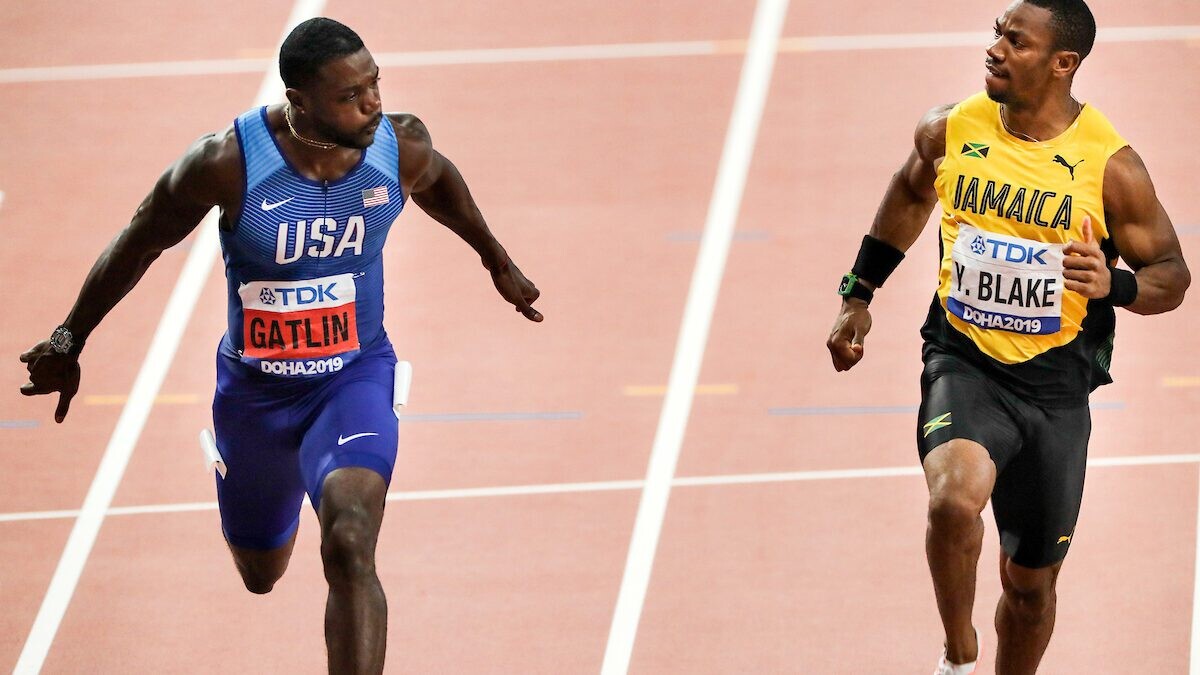
“Doing the 200, 100 and relays simply takes a lot out of you, so these are the events I want to focus on for 2024,” Blake said.
In 2011, at only 21, Blake became the youngest sprinter in history to win the 100m at a World Championships when he claimed gold in Daegu, South Korea.
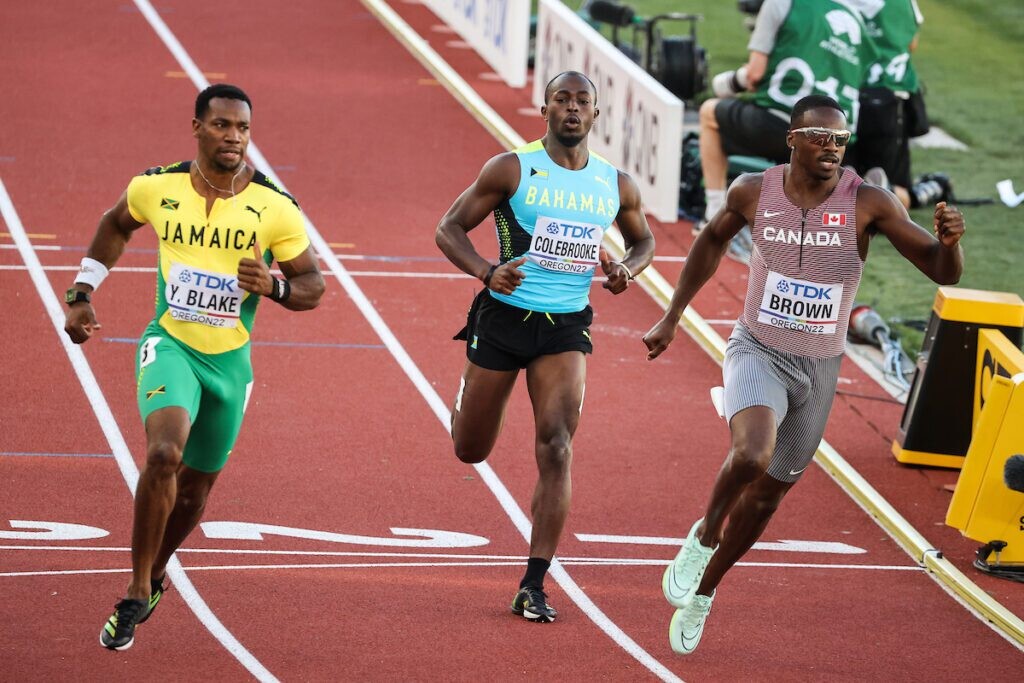
A year later, Blake went on to win two silver medals at the London 2012 Olympics in the 100m and 200m behind his training partner Usain Bolt, who had been disqualified in Daegu for a false start.
His time of 9.69 seconds over 100m is the third fastest in history, behind only Bolt and Tyson Gay of the U.S.A. He also has the fastest 100m and 200m in Olympic history among athletes who did not win an individual gold medal.
Blake still won two Olympic golds as part of Jamaica’s 4x100m relay teams in London and Rio 2016. He will always be known for his nickname, “The Beast,” which represents his eccentric personality, his impressive physique and aggressive sprinting style.
At the 2022 World Championships in Eugene, Ore., Blake bowed out of the semi-finals in the 100m and 200m, and it was the first time since 2000 that Team Jamaica did not reach the podium in the 4x100m relay.
(01/25/2023) Views: 662 ⚡AMPby Marley Dickinson
Paris 2024 Olympic Games
For this historic event, the City of Light is thinking big! Visitors will be able to watch events at top sporting venues in Paris and the Paris region, as well as at emblematic monuments in the capital visited by several millions of tourists each year. The promise of exceptional moments to experience in an exceptional setting! A great way to...
more...Judith Korir and Hellen Obiri among elite runners to compete in RAK Half Marathon
With only a few weeks to go, Ras Al Khaimah Tourism Development Authority (RAKTDA) on Monday revealed an initial line-up of four world-class runners set to take part in the 16th edition of the Ras Al Khaimah Half Marathon on February 18, 2023.
The elite female category in the highly anticipated race will see the Women’s Marathon silver medalist at the World Athletic Championships Oregon 2022, Judith Jeptum Korir of Kenya, return to the nature-based Emirate in a bid to claim the title.
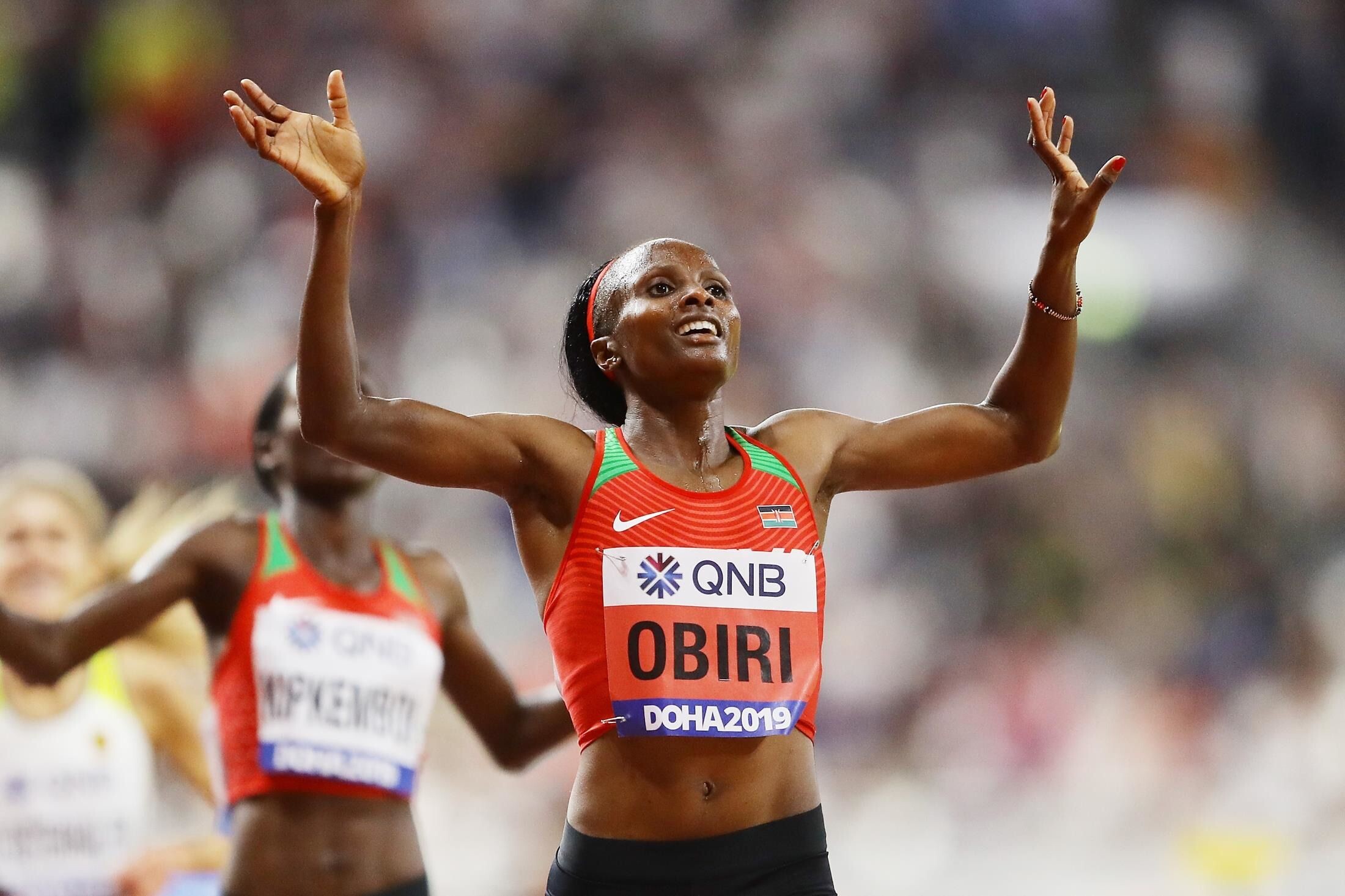
With a fourth-place finish in last year’s Ras Al Khaimah Half Marathon, Korir will be looking to beat her personal best time of 65:28 as she takes to the start line for the 2023 edition.
Korir will face competition from Hellen Obiri of Kenya, a two-time 5,000-metre Olympic silver medalist, who finished runner up in Rio de Janeiro 2016, and Tokyo 2020, and holds a personal best half marathon time of 64:22.
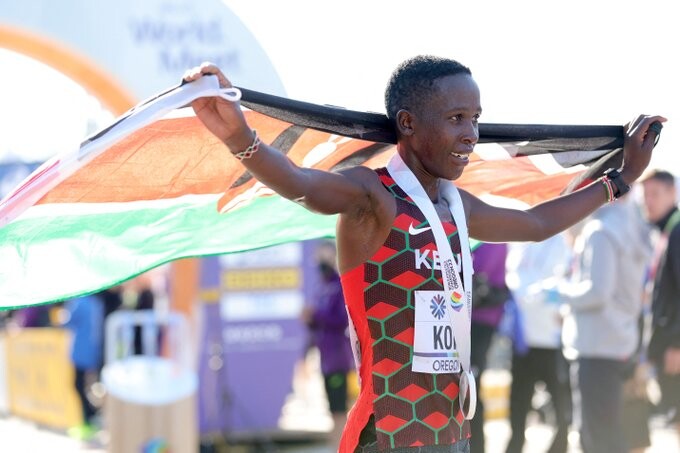
She also entered the Ras Al Khaimah Half Marathon 2022, placing second in a competitive field.
The male elite runners include Ethiopian star Seifu Tura, who recently claimed second place in the Chicago Marathon 2022, and Kenyan Daniel Mateiko, who holds a personal best time of 58:26 and recently finished third in the Valencia Half Marathon 2023.
Additionally, race organizers have unveiled a first look at the medal which will be awarded to all finalists once they cross the finish line at the much-awaited race.
The colors of the medals have been carefully selected to represent Ras Al Khaimah’s three key natural elements and core values: the sea with its perpetual swelling and subsiding waves, the desert with its undulating dunes, and the mountains with their staggering elevations.
A landmark event on the Ras Al Khaimah calendar, the half marathon will return to Marjan Island, the Emirate’s spectacular coral-shaped destination home to majestic white sandy beaches and a plethora of world-class hotels and resorts.
(01/24/2023) Views: 610 ⚡AMPby Gulf Today
Rak Half Marathon
The Ras Al Khaimah Half Marathon is the 'world's fastest half marathon' because if you take the top 10 fastest times recorded in RAK for men (and the same for women) and find the average (for each) and then do the same with the top ten fastest recorded times across all races (you can reference the IAAF for this), the...
more...The oldest marathon in Europe is enjoying great interest in its upcoming 100th year, 6,000 already registered
Europe’s oldest marathon celebrates centenary.

The oldest marathon in Europe is enjoying great interest in its upcoming 100th year.

In the first 50 days from the opening of registration, more than 6,000 runners have already signed up, which is about 50% of the entire planned capacity. There are still more than eight months left before the start, so it will be interesting to see how the numbers continue to develop.
Naturally, domestic runners play first fiddle, while on the other rungs, under the flags of dozens of countries, are mainly runners from Poland, the Czech Republic, France, Hungary, the UK and Germany.
In the meantime, the organisers have confirmed that all the main disciplines of the programme, i.e. the Marathon, Half Marathon and Relay, will take place together on Sunday, 1 October. One day earlier, on Saturday, 30 September, the programme will be dominated by the U.S. Steel Family Run.
(01/24/2023) Views: 565 ⚡AMPby AIMS
kosice Peace Marathon
The Kosice Peace Marathon is the oldest European marathon.This year for the organizers of Kosice Peace Marathon is also about memories and flashbacks. One of the fastest marathon courses has been created in Košice 20 years ago on that occasion it was the 1997 IAAF World Half Marathon Champioships. Tegla Loroupe and Shem Kororia were awarded from the hands of...
more...Why runners should consider consulting with a chiropractor
Running is an excellent form of exercise. You only need a good-quality pair of running shoes, and you’re good to go. But running can also harm your body, especially when you overdo it.
You put a lot of strain on your knees, hips, and ankles when you run. As a result, joint pain and other injuries can develop over time.
If you wish to keep running, you may need to consult a professional chiropractor. Only a few people know, even runners, that there are injury prevention methods with chiropractic work. These apply to injuries common among runners.

But why a chiropractor? These licensed healthcare professionals specialize in treating neuromuscular disorders, primarily by manipulating the spine and performing manual adjustments. Chiropractic treatment aims to heal the body and improve overall health.
With proper chiropractic care, you can avoid potential injuries associated with running, and you can continue living an active and healthy lifestyle.

Not convinced yet? Here’s a list of reasons why you should consider consulting a chiropractor.
It Can Help Prevent Injuries
As the saying goes, ‘prevention is better than cure.’ Not all bodies are the same, and not all body parts are symmetrical. You’d be surprised to know that the length of your legs may not be the same, which can cause injuries in the long run.
It’s essential to know your body well to prevent injuries. And one way to do that is to check your body alignment. When the spine is out of alignment, other body parts are weaker and more prone to injury. Running injuries often result from one part of the body compensating for another that is off.
A chiropractor will examine your posture, movements, hips, knees, and foot arch to determine how you stand and move. The benefits of chiropractic treatment can extend to the rest of the body because it helps align the spine.
Moreover, regular chiropractic care and adjustments will lessen the damaging effects of running’s jarring motion on your body and help you avoid running-related ailments.
It Can Help Manage Injuries
Runners will likely sustain an injury at some point, and you shouldn’t take it lightly. It’s not advisable to keep running with an injury because it could severely harm your joints and nerves.
Chiropractic treatment can help with more than just misalignments and tight tendons; it can also speed up the healing process and restore strength to the affected areas.
Another advantage of visiting a chiropractor is that recovering from injuries will go faster with the proper care. It won’t take months to recover if you put in the necessary effort and work with your chiropractor to treat your injury. You’ll be able to return to your routine most quickly and safely.
It Can Help Increase The Range Of Motion
According to a study published in the Journal of Chiropractic Medicine, chiropractic treatment can increase hip mobility over time.
Visiting a chiropractor regularly can help loosen your joints, improve your flexibility, and allow you to move more comfortably. Flexible and relaxed joints allow for more movement, which is good for a runner’s stride and performance.
Though an increased range of motion does not guarantee you’ll get better and faster at running, it can enhance your overall performance and well-being as a runner.
It Can Help Improve Nervous System Functions
When your joints are out of alignment, they can exert pressure on nearby nerves. There’s often discomfort, tingling, numbness, exhaustion, and slowed reflexes.
The realignment of joints and relief of nerve pressure are among the benefits of chiropractic therapy for improving nerve function. Nerve dysfunction can make your body appear older and worn out than it actually is.
Furthermore, chiropractic care can help address neuro-musculoskeletal system abnormalities and revitalize the whole body.
It Can Help You Feel Relaxed
Getting chiropractic care is not only for when you have an injury. It’s also a perfect way to let loose mentally and physically.
You can relax and unwind as your chiropractor works to loosen up your joints and muscles. After a session, you’ll feel refreshed and revitalized, just like after getting a relaxing full-body massage.
Final Takeaway
Anyone who engages in strenuous physical activity knows how important it is to recover and take care of their body. Running is an activity that requires a lot of physical effort, so finding a chiropractor you can trust is something you should consider. If you enjoy running and wish to continue doing so without issues, you may find many benefits from seeing a chiropractor. They can help you prevent and manage injuries, improve your range of motion and nervous system functions, and help you feel relaxed. And that’s more than any runner could ask for.
(01/24/2023) Views: 601 ⚡AMPby Colorado Runner
Five things to master for your next race, shared by Olympian and coach Joanna Zeiger
Races are always tricky–it can be tempting to run hard, fly past aid stations and ignore the enjoyment of the process entirely in pursuit of a PB.
Mastering these five tenets of racing, shared by Olympian and coach Joanna Zeiger in her book The Champion Mindset: An Athlete’s Guide to Mental Toughness will help you sail smoothly through your next race. “If you learn these, you can eliminate at least some potential problems,” she says.
1.- What feels easy at the start feels hard at the end
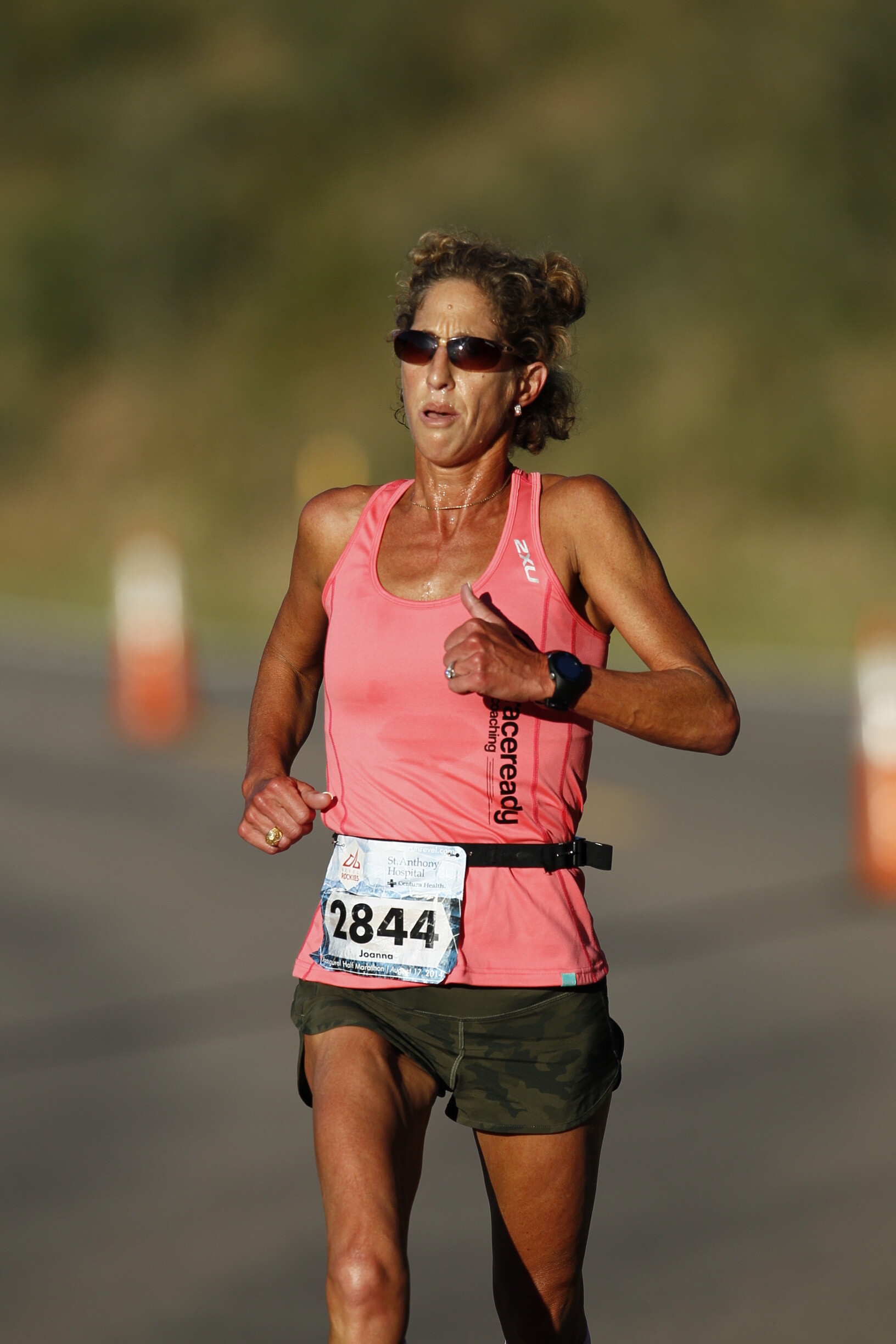
Proper pacing is a skill and a worthy one to work on. No matter how easy and effortless those first few kilometers feel, the last few are going to feel harder. “Do not be deceived by the relative ease at the beginning,” says Zeiger.
What feels like jogging at the start of a longer race may take all your focus and strength to maintain near the end. Remind yourself of this pre-race, and keep it in mind as we move on to rule number two.
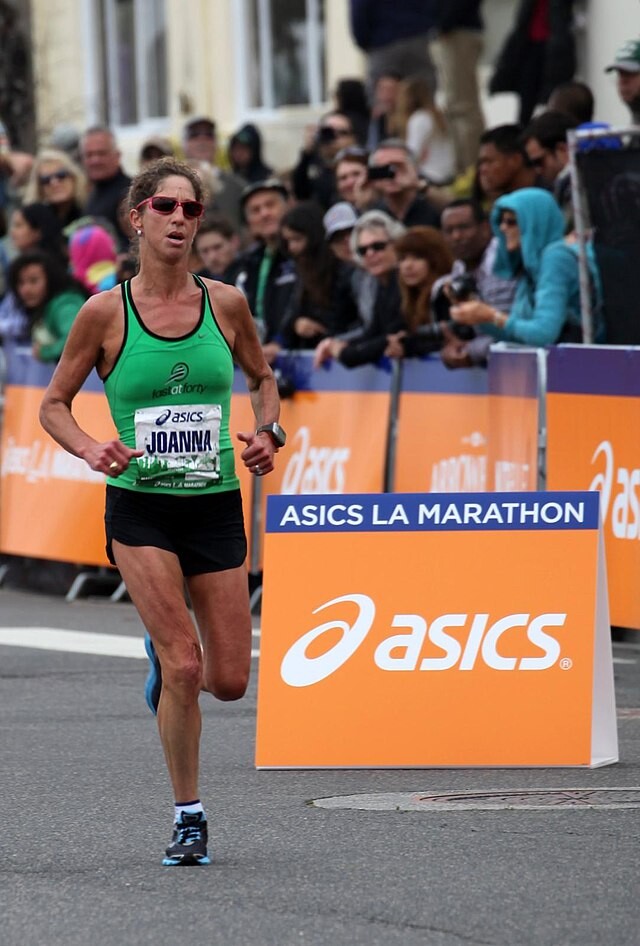
2.- Don’t go out too hard
That same feeling of ease at the beginning of a race “lures people into a false sense of what they can achieve,” Zeiger says. “Going out too hard is not necessarily a subjective measure–you cannot rely on how you feel, because you should feel good.”
Zeiger says she has never heard someone say that they wish they’d gone out harder in the first half. It can be helpful to set a pace or HR guideline for yourself or follow a pace bunny if you’re in a longer race.
3.- It’s hard to imagine things going wrong
Races often have beautiful beginnings. The weather is glorious (or at least decent), you feel fantastic and well-trained, and the enthusiasm of the group lifts your spirits. So many things out of your control can go wrong in the later stages though–unexpected GI distress, cramping, or a wild wind blows in.
Recognizing that this happens and maintaining a sense of humor about it while you troubleshoot, or, worst case scenario, drop out, is essential. Sometimes you are as prepared as you can possibly be and things still go awry.
4.- Nutrition matters
Race day nutrition is important. Even if you’re running a short race and don’t need to consume calories mid-run, your pre-race meal should be something you also eat on training days and are used to digesting.
If you’re in a longer race and do need to stop at aid stations, Zeiger says athletes should know beforehand what they are going to grab–water, a gel, Gatorade? Knowing in advance prevents any indecision and time-wasting when you arrive, and also helps you keep track of what you have consumed.
5.- Have fun
Zeiger says this is by far the most important tenet of racing. “Success in sport is difficult and requires time, patience, perseverance and [occasionally] heartache,” she explains. “Ultimately, there must be an element of enjoyment to make it all worth it.
When things line up right and you find yourself really enjoying a race, notice and be present in the moment. “Racing is a privilege and we are lucky to be able to do something that we enjoy so much.”
(01/24/2023) Views: 651 ⚡AMPby Keeley Milne
Here’s why the rule of 10 will level-out your running consistency
Runners hear it all the time: consistency is key. The rule of 10 (committing to just 10 minutes) can be a perspective shift for those days when putting on your shoes and getting out the door seems like too much, and you’ll still build consistency.
We know that logging the simple workouts and easy runs day after day is what creates strong runners and initiates breakthroughs–but what about when the excuses are coming in fast and furious and you just aren’t feeling it?

10 minutes is an easy commitment (and I have an even smaller one)
Ultrarunner and writer Nicolas Triolo writes about the rule of 10 in trailrunnermag. “10 minutes is the time it takes for me to fold laundry. To take a powernap. To grind, brew, and enjoy a pourover,” he says. “To scroll Instagram and come out the other side wondering if I remembered to breathe. 10 minutes is a blip, a negligible unit, hardly anything at all.”
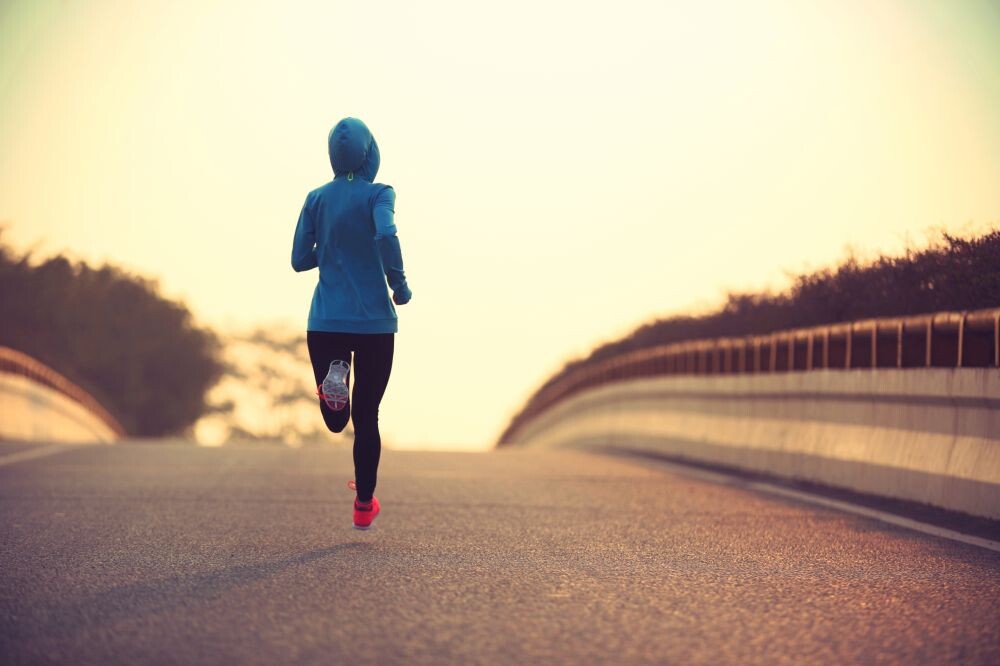
Guaranteed you’ve probably wasted ten minutes sitting on your couch, staring at your shoes and pondering the weather, your slightly tight calf and whether that taco salad you just ate was a good choice pre-run. I certainly have. I have an even smaller commitment I’ll make to myself–get my running clothes on. In the summer, that’s fairly simple, but in the winter it is a bit more effort–determining how many layers to wear, whether I need a headband or gloves, trail shoes or road.
10 minutes is an easy commitment (and I have an even smaller one)
Ultrarunner and writer Nicolas Triolo writes about the rule of 10 in trailrunnermag. “10 minutes is the time it takes for me to fold laundry. To take a powernap. To grind, brew, and enjoy a pourover,” he says. “To scroll Instagram and come out the other side wondering if I remembered to breathe. 10 minutes is a blip, a negligible unit, hardly anything at all.”
Guaranteed you’ve probably wasted ten minutes sitting on your couch, staring at your shoes and pondering the weather, your slightly tight calf and whether that taco salad you just ate was a good choice pre-run. I certainly have. I have an even smaller commitment I’ll make to myself–get my running clothes on. In the summer, that’s fairly simple, but in the winter it is a bit more effort–determining how many layers to wear, whether I need a headband or gloves, trail shoes or road.
If I get my stuff on and I still don’t want to run, fine–that means a rest day is in order. I sincerely cannot think of a time that actually occurred, though. Once the clothes are on, getting out the door seems much easier. If you can’t commit to 10 minutes, just commit to running clothes.
Even if you stop after 10 minutes you’ll reap benefits
Renowned coaches David and Megan Roche have a phrase they share with athletes: “just give us 10 minutes.” If life throws a curveball at an athlete and they can’t manage to fit in their run, 10 minutes of movement still counts. It still builds consistency and creates physiological adaptations that pay off in the long term.
Roche explains that his running career began with 10-minute runs and he owes those short runs everything, as they initiated the adaptations that enabled him to continue to run longer, harder and faster.
The key to getting better is getting out there, 10 minutes at a time
“Consistent reinforcement is key, and even short runs do the trick. Add some intensity like hill strides, and running economy can go through the roof relatively quickly,” Roche says in trailrunnermag.
Not only do runs as short as 10 minutes pay off, but they help you train your brain to continue your running routine. There should be many runs that you’re enthused to head out the door on, but lacking motivation on occasion is normal. The more you get out the door and log a run, even a short one, the easier it is to continue to do it. One foot in front of the other, 10 minutes at. time.
(01/23/2023) Views: 652 ⚡AMPby Running Magazine
Allie Kieffer makes quick work for her 3M Half Marathon win, while Joseph Gray wins a close one
World-class runner Allie Kieffer keeps a low racing profile here in Austin, but when she does race, she wins.
A last-minute entry in this year's 3M Half Marathon, Kieffer took advantage of ideal running conditions Sunday morning — mid-40s and clear — to add another victory to her Austin racing résumé, while Joseph Gray, a World Mountain Running champion, topped the men’s field.
Even though Kieffer has a perfect record in Austin, Sunday's 3M win was somewhat of a redemption for her. Running in the highly competitive Barron Collier Companies Naples Half Marathon last week in Florida, she went off course, losing her lead and placing fourth.
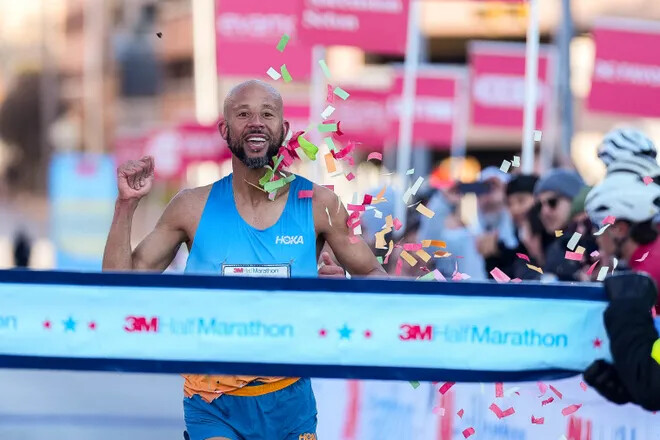
“I took a wrong turn at the Naples Half, so I couldn’t cross the line first,” Kieffer said. “So today I was thinking, ‘I want to win.' I was feeling pretty competitive.
“I wasn’t intending to race today,” she added. “Initially I was just going to pace it with a friend, but I couldn’t find him at the start.”
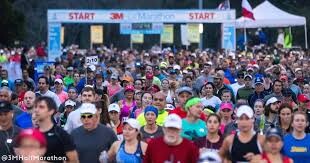
Kieffer took off from the starting line on Stonelake Boulevard in North Austin at a brisk pace of 5 minutes, 52 seconds per mile, with Karen Bertasso-Hughes and Shannon Gaden about 50 yards back. Kieffer hit the 5-kilometer split in 18:14, with Bertasso-Hughes just nine seconds behind.
The 3M race is known for its “downhill to downtown” course, and Kieffer worked every downhill. By the 10K mark (36:31) on Great Northern Boulevard, she had a 23-second lead on Bertasso-Hughes.
“When I took the lead around 3 miles, I just didn’t look back,” Kieffer said.
She stepped on the gas after the 15K mark (9.3 miles) on Shoal Creek Boulevard, dropping the pace to 5:50 a mile, gaining more than a minute ahead of Bertasso-Hughes in the process. Kieffer crossed the finish line on San Jacinto Boulevard in 1:16:24, leaving Bertasso-Hughes and Gaden to battle for second. Gaden prevailed 1:17:00 to 1:17:49. Caroline Brooks came in fourth in 1:17:53, with Elizabeth Laseter rounding out the top five in 1:18:04.
“Allie was so far ahead that we were just racing for second place,” said Gaden, a newcomer to Austin by way of Denver. “I was able to catch her (Bertasso-Hughes) around 10 miles.”
“I’m really happy. … I felt surprisingly good. I needed to win this race,” said Kieffer, who plans to run the Ascension Seton Austin Half Marathon next month and is looking to run an Olympic Marathon Trials qualifying time next fall at the BMW Berlin Marathon.
The men’s race featured a stirring duel between Colorado Springs’ Gray and Austin’s Mitch Ammons, a 2024 Olympic Marathon Trials qualifier.
Gray, Ammons and University of Texas ace Kobe Yepez formed the lead pack in the early miles, passing through the 5K mark together in 15:17. But after that it was a two-man race as Gray and Ammons pulled away. Ammons took the lead at 10K, passing the mark in 30:33, just six seconds ahead of Gray. But by 15K (45:52) they were stride for stride, with 2019 3M champ Michael Morris moving into third place ahead of Yepez.
In a sprint to the finish line, Gray edged Ammons 1:04:23 to 1:04:27. Morris, the track and cross-country head coach at San Marcos High School, took third in 1:06:07, with Al Maeder fourth in 1:06:31 and Yepez fifth in 1:06:51.
“This was my first race of the year. Actually my first race in a while, so I wanted to be smart and run a progressive effort,” said Gray, a dominant figure in Colorado’s mountain running scene. “Mitch is a strong runner and made it an honest effort.”
Approximately 4,500 runners finished the race, the fifth in the Austin Distance Challenge. The sixth and final event is the Austin Marathon on Feb. 19.
“I found out two minutes before the race that there was a champion mountain runner entered, who’d gone 1:03 for the half-marathon," Ammons said. "We were yo-yoing back and forth the whole way. He’d pull ahead on the uphills, and I’d lead on the downhills. It was a lot of fun. My time was a personal best for me by more than a minute, and I wouldn’t have run this fast if it weren’t for Joe. He pushed me a lot. I really, really tried to catch him on the final straight. I gave it everything I had.”
(01/23/2023) Views: 744 ⚡AMPby Brom Hoban
3M Half Marathon
Welcome to the 3M Half Marathon! This year join over 7,000 fellow runners in Austin, Texas to run a personal best at the 3M Half Marathon. 3M Half is a fun and fast stand-alone half marathon boasting one of the fastest half marathon courses in the country. You’ll enjoy a point-to-point course with mostly downhill running that takes you past...
more...Six ips for running your best 5k
5k (or 3.11 miles) races are some of the most popular running events in the country. Every weekend parkruns are available in over 1,600 locations globally, and there are plenty of great 5k events up and down the country, which make an ideal starting point in your running journey. If you’re nervous about training for a 5k or you’re looking to run one in 20 minutes or less, then these tips and best-practices will give you the perfect platform for success.
1. WARM-UP & WARM-DOWN
Whether you’re a running beginner, or you’re pushing for a new PB, 5k runs pose a high injury risk due to people not respecting the distance or by pushing too hard. Before every run, you should do a gentle warm-up jog and then do some dynamic stretches, including lunges, heel-kicks, high knees, jumping jacks, and sideways skips. This will make sure that all the little muscles are ready for the challenge ahead.
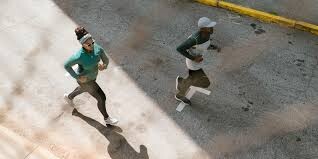
Warming down is just as important, and easy to skip when you’re tired after a run. But stretching out your calves, hamstrings, and glutes properly after a 5k run will make a massive difference in preventing injuries, and will help in recovery so you can head out for another training run sooner. Alternatively, you could try out a quick and easy pre-run yoga or post-run yoga routine.
2. BUILD UP THE DISTANCE

Although you’re not training towards a marathon, it’s not necessary to run the full 5k on your first training run. The reason ‘Couch to 5k’ has been so successful recently is because it doesn’t demand too much too soon. If you are building fitness, a couple of shorter 1-2k runs will get your heart pumping and wake up your leg muscles. You can even alternate between running for 5 minutes and walking for 2 minutes, and then work towards a continuous 5k run. If you need a helping hand here, than you can download our free 6-week 5k training plan here, which will take you through your 5k training, step-by-step. There are a number of options within the plan from how to run 5k in 20 minutes or less to circuit pattern ideas and motivational quotes for race day.
3. TECHNIQUE
5k races tend to be high intensity runs, as opposed to long-distance events which require steady jogging. Rather than just pushing yourself flat out, though, there are some technique tweaks that can be made, which will help keep you springing forwards, improve posture, and prevent against injury:
make sure to engage your core and keep your upper body straight
pump your arms
push your hips forward, and try to land your feet beneath your hips rather than too far ahead
visualize the road coming up to meet and support your feet rather than your feet hitting down into the road
4. INTERVAL TRAINING
Once you’ve built up the distance to the full 5k, and you’re confident with your technique, you can start improving your speed. Interval training is really useful for this, and it can often be a good idea to head to your local running track. Sessions might look like one of the following:
500m warm up; 3x400m sprints with 2 min rest in between; 1x800m push; 500m warm down. Total distance: 3,000m
400m warm up; 5x200m push alternating with 5x200m gentle jog; 400m warm down. Total distance: 2,800m
300m warm up; 1km race pace, 2km gentle pace, 1km race pace; 300m warm down. Total distance: 4,600m
These distances can change as you get fitter, and you might also choose to work according to time instead of distance.
5. SUSTAINABLE PACE
It’s important that you know what your standard pace is. Settle into a good rhythm, where your heart-rate and breath are sustainable. It is unlikely that you’ll be able to push for the entire 5k, so you’ll need to pace your race. Don’t come speeding out of the blocks and waste all of your energy early on. Use your training to discover what a manageable pace is, and stay there for the first 3km or so of the race, and then push for the final 2km. Like all professional runners, you should aim to be running negative splits i.e. your final kilometers should be faster than your first couple.
6. NUTRITION
An energy bar or banana 40 minutes or so before a race will give you time to digest and for the energy still to be there. You want to avoid anything too high in fibre close to the race, because this might give you stomach cramps. Work out what works for you well ahead of race day. It’s also important to stay hydrated with water or energy drinks before, during and after a race. You also want to focus on recovery: have something high in protein within 20 minutes of exercise to repair your muscles, and replenish your blood sugar with a treat. You’ve earned it.
(01/23/2023) Views: 664 ⚡AMPby Aidan Thomson
Two treadmill hill workouts to boost power, strength and confidence
Sure, runners love to hate the treadmill. It can be an invaluable tool, though, especially when icy conditions prevent you from fitting in a hard workout.
Even if your goal race is on the road or relatively flat, hill workouts build power, running efficiency, and will have you running faster on flat ground–being able to run smoothly up a hill that used to leave you gasping for air can be a pretty big confidence booster, too.
Bonus–you can fit either of these workouts in your lunch hour, with both coming in under 45 minutes including warmup and cooldown. Tweak either workout if you need to according to your experience level by adjusting the pace and incline settings on the treadmill to make the sessions challenging for you.
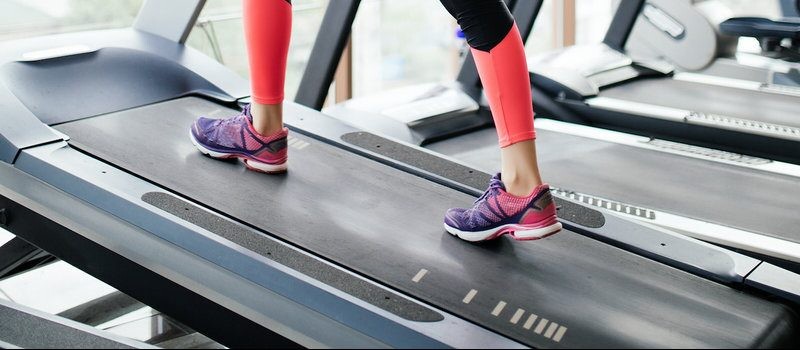
Hilly tempo (effort-based) workout
This workout, a combo between a tempo session and a hilly run, helps you learn how to run hills by feel, something many runners, both beginners and seasoned athletes, struggle to do. Don’t worry about your pace–focus entirely on the effort of each interval.

The workout
Warm up with 10 minutes of very easy running.
Run 5 minutes at a 1 percent incline and at a pace that elevates your effort level to what feels like a medium-hard effort (you have to stay focused and can only speed in short sentences); recover with 2 minutes easy running.
Run 5 minutes at a 2 per cent incline and at a pace that brings your effort level back to where it was on the previous rep; recover with 2 minutes easy running.
Run 5 minutes at a 3 per cent incline and at a pace that elevates your effort level to where it was on the previous rep; recover with 2 minutes easy running.
Run 5 minutes at a 4 per cent incline and at a pace that brings your effort level back to where it was on the previous rep; recover with 2 minutes easy running.
Cool down with 5 minutes easy running.
Powerful hill workout
This workout doubles as a high-intensity interval session and builds power, strengthening different muscles than you would while running hard on flat ground. The end result of workouts like this one–you’ll be faster on the flats, and you’ll ramp up injury resistance.
The workout
Warm up with 5 minutes of easy running.
Repeat 8x: run for 90 seconds at a 4 to 5 per cent incline at a pace that you can only maintain for a short time (hard effort, breathing vigorously, can’t talk); recover between each hard interval with 3 minutes of very easy running.
Cool down with 5 minutes easy running.
Make sure to take the day following a speed, hill or long session as a recovery or easy running day.
(01/23/2023) Views: 604 ⚡AMPby Keeley Milne
Emily Sisson After Her American Record: “I’d like to medal and I’d like to try to win a Major”
Last Sunday, Emily Sisson ran 66:52 to become the first American woman to go sub 67 minutes on a record-eligible course.
"The two really big goals I still have left are I'd like to medal and I'd like to try to win a Major"
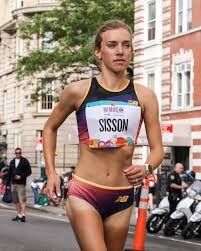
"The two really big goals I still have left are I'd like to medal and I'd like to try to win a Major"
LetsRun.com: Our guest is an NCAA and US champion on the track, a US Olympian and the American record holder in the half marathon and marathon. She already held the American record in the half marathon before last weekend, but on Sunday in Houston, she ran 66:52 to take 19 seconds off her American record and become the first American woman under 67 minutes on a record-eligible course.
We're very pleased to be joined by Emily Sisson. Welcome to the Letsrun.com Track Talk podcast Emily.

Emily Sisson: Hi, thank you for having me.
LetsRun.com: We're joining you on Tuesday, two days out from the record. Are the quad's feeling good? Are you fully recovered from the effort yet?
Sisson: Yea, actually I do feel fully recovered and, I do think the shoes helped with that. Lately, the last few races, I feel like I've bounced back from them pretty fast. And I felt that way after Chicago too, which I was just shocked by. That was just so different from my last two marathon experiences. So, yeah I feel good and feel excited to get training for my next marathon now.
LetsRun.com: I feel like you're clockwork at this point. You got an American record, you just bounce back and then you hit another American record, bounce back, hit another American record, and now you've got a spring marathon coming up later this spring, which you can't announce yet.
I'm sure in due time we'll learn about that. Let's start with the race in Houston on Sunday, did everything go pretty typically before the race in terms of your pre-race routine? Did anything out of the ordinary stand out to you?
Sisson: No. Nothing too exciting. It was pretty standard. Nothing pre-race anyway.
Starting off Running Under 5 Minutes a Mile
LetsRun.com: So the race begins and Hiwot Gebremaryam who ended up winning the race, she takes it out very hard. I think it was about 15:14 through 5k and you and just Jessica Warner-Judd who you're running with get gapped. Did you expect to be running with her or were you surprised how quickly she took out?
Sisson: Yeah, I wasn't surprised. I had a feeling her and maybe Dibaba, we didn't know how fit she would be, that they could take off and start running really fast. And I talked to [coach] Ray [Treacy] before the race and he told me, just run about like 5:06s. But that if there wasn't a group to run with, that it'd be better me running, like 5:03, 5:04 minute miles and having a group [to run with] and doing that versus 5:06s solo. And we were definitely going faster [laughs] than that. But I remember we started off and the first mile was under five minutes and Ray told me that would probably happen, so not a big deal. But then we didn't really slow down that much. And I kept looking behind me and there wasn't really anyone there. So I kind of was just like, "I either have to commit to this pace and hope I don't die too much, or slow down too much. Eventually, I'll have to correct."
But either do that, or run a half marathon solo and I really didn't want to do 13 miles solo. So I was like, "You know what, I'll try this. This feels okay. I'll slow down eventually at some point, and get into a rhythm, but for right now I want to run with a group of men." And Jess Judd was right there, and she was there for a while. She had a great, great race. I think she can run a lot faster if she gets into a more evenly-paced half marathon. So I think she'll see a lot of success on the roads too.
But yeah, I definitely started off faster than we were hoping, but I don't regret going with them.
LetsRun.com: In Chicago you famously weren't aware of your pace during a lot of the race. Were you aware how quick you were going in Houston?
Sisson: Yeah, I was aware how quick I was going and I was looking at my watch every mile to see what I was hitting. I didn't look at my watch in Chicago, but, sometimes I do this thing where I say something, and in my head it makes perfect sense and then afterwards I get a lot of follow-up questions. In Chicago I did have two pacers so I didn't really have to worry so much, I'm like, "Well, that's their job." And they did a great job with that Brian [Harvey] and Jonny [Mellor]. And my job was just to see if that pace felt right. If I needed to go a little faster, slower, adjust from there and then I intentionally didn't want to look at my watch the first half in Chicago, but then I unintentionally shut it off, [laughs] like halfway through the race. So didn't really have a choice. It worked out fine. I saw the halfway split in Chicago and it really helped me kind of dial in and focus on how I was feeling in that race. But this one's different when you don't have pacers. You kind of do have to pay attention to that.
LetsRun.com: Our guest is an NCAA and US champion on the track, a US Olympian and the American record holder in the half marathon and marathon. She already held the American record in the half marathon before last weekend, but on Sunday in Houston, she ran 66:52 to take 19 seconds off her American record and become the first American woman under 67 minutes on a record-eligible course.
We're very pleased to be joined by Emily Sisson. Welcome to the Letsrun.com Track Talk podcast Emily.
Emily Sisson: Hi, thank you for having me.
LetsRun.com: We're joining you on Tuesday, two days out from the record. Are the quad's feeling good? Are you fully recovered from the effort yet?
Sisson: Yea, actually I do feel fully recovered and, I do think the shoes helped with that. Lately, the last few races, I feel like I've bounced back from them pretty fast. And I felt that way after Chicago too, which I was just shocked by. That was just so different from my last two marathon experiences. So, yeah I feel good and feel excited to get training for my next marathon now.
LetsRun.com: I feel like you're clockwork at this point. You got an American record, you just bounce back and then you hit another American record, bounce back, hit another American record, and now you've got a spring marathon coming up later this spring, which you can't announce yet.
I'm sure in due time we'll learn about that. Let's start with the race in Houston on Sunday, did everything go pretty typically before the race in terms of your pre-race routine? Did anything out of the ordinary stand out to you?
The 66:52 was her third American record in less than a year. Last May, she ran 67:11 for her first AR in the half marathon, then in October ran a 2:18:29 marathon AR in Chicago.
(01/22/2023) Views: 670 ⚡AMPby Let’s Run
Strava Lays Off Employees
Last year, the social networking app for endurance athletes and fitness enthusiasts hit a milestone 100 million users.
Strava, the most popular social networking app for endurance athletes and fitness enthusiasts, laid off 38 employees in December 2022. Multiple former Strava employees confirmed the news on LinkedIn. According to a post from an unaffected Strava employee, the layoff equated to 14 percent of the company’s workforce.

The layoffs predated the reported uptick in price for premium features. The previous $7.99 monthly rate will increase to $11.99 on February 6—a significant 50 percent increase.
Runner’s World reached out to Strava for a comment, but the company has not responded.
Strava was founded in 2009 by Mark Gainey and Michael Horvath. According to Crunchbase, Strava has raised a total of $151.9 million from seven rounds of funding. The company raised $110 million during its most recent round, which took place in November 2020. The app has 95 million users according to Business of Apps.
(01/22/2023) Views: 704 ⚡AMP
by Runner’s World
Yoga for cold days: the best moves to warm up and reduce tension
With many weeks of cold, wintry weather ahead, it’s time to turn to yoga to generate some internal fire and warm up stiff joints and tense muscles.
here comes a time in winter, after weeks of sub-zero temperatures or at the very least a constant chill, when I feel like my actual core is frozen and my shoulders have taken up permanent residence around my ears. I know I’m not the only one.

But before you crank up the thermostat another degree or two (ooh, look at you with money to burn!) there is a much better (and cheaper) way to generate some warmth. Time to roll out the yoga mat and get acquainted with tapas (no… not those tapas).
“The practice of building heat in yoga is called ‘tapas’,” explains Laura Pearce, senior yoga and breathwork teacher and the founder of Yoga Collective London. “In yogic philosophy, tapas not only denotes physical heat, but also the burning off of negative energies, helping us persist when things get tough – this is useful during the winter months when everything seems a bit tougher and the body is sluggish and tired.”
This heat physically warms our bodies but it also helps motivate and energise us. To harness it, Pearce recommends a dynamic yoga practice to get the blood pumping and help mobilise stiff ‘hunched’ shoulders.
SUN SALUTATIONS HELP GENERATE HEAT
“The ultimate heat building-sequence in yoga is the classic sun salutation. The name ‘sun salutation’ comes from the idea that these movements heat up and awaken our internal ‘sun’, warming and preparing the body for other poses. It’s a particularly dynamic part of most western yoga practices and the simple repetitive nature makes it an easy sequence to learn,” she says.
Pearce recommends adapting your sequence by holding a strong downward dog a little longer to wake up the shoulders, adding more asanas on each round, or accompanying it with ujjayi pranayama (also known as victorious or ocean breath) to really heat things up.
How to do sun salutation A (surya namaskara A)
You can modify sun salutations any way you wish but this classic sequence, recommended by Jaime Hepburn, is a must-try on a frosty morning.
Inhale or exhale with each move, starting with an inhale as you raise your arms up.
Start by standing tall in tadasana (mountain pose)
Raise your arms up and gaze up
Fold forward
Lift halfway, hands to shins, look forward
Plant the hands and step back through chatarunga (low plank – or modify through knees-chest-chin)
Upward-facing dog (modify through low cobra)
Downward-facing dog – take three to five full breaths here
Look forward to prepare for the next steps
Step to the top of the mat
Lift halfway, hands to shins, look forward
Forward fold again
Lift the arms as you rise up, gaze up
Finish in tadasana (mountain pose)
Repeat five times.
BACKBENDS CAN PROVIDE AN ENERGY BOOST
Another warming move that also opens the shoulders is a backbend. “Any backbend will do – back extensions nearly always cause the heart rate to soar as they put a little tension on the diaphragm, heart and aorta,” says Pearce.
“Try locust (salabhasana) or bow pose (dhanurasana), holding for five breaths then repeating. More advanced yogis can go for a full-wheel pose (urdhva dhanurasana). Stop to notice that high energy rush after a big backbend. I think of them as natural coffee shots and a great way to wake us, energise us and warm us in the winter.”
Jaime Hepburn, founder of The Yoga Library, is also a fan of incorporating ujjayi pranayama (ocean breath) into her practice during colder weather.
“The winter months tend to bring a bit of tightness to our bodies. A dynamic practice that utilises ujjayi pranayama is incredibly efficient at warming the body to help reduce any stiffness or tension in the muscles and joints. Simply breathing this way when performing any asana will help stoke our internal fire,” she explains.
How to do victorious or ocean breath (ujjayi pranayama)
“This breath involves a slight constriction of the throat as you breathe in and out of the nose,” says Hepburn. “Don’t be deterred if you find this quite challenging. It certainly takes a bit of practice to get it.”
Try it first with your mouth open. Take a regular inhale.
Exhale and imagine you’re trying to fog up glass. A soft sound should accompany the breath.
Now try the same thing breathing inward, remembering to constrict the throat slightly to direct the breath inwards at a steady pace. The same sound should be heard.
Repeat the exhale but with your mouth closed. Again, there is a soft hissing sound, a bit like the ocean.
Inhale again, with that slight constriction, but with your mouth closed.
PRACTISE LION’S BREATH (SIMHASANA)
Another breathwork exercise to get things warmed up is lion’s breath. Mara Cimatoribus, yoga instructor on the fitness app WeGLOW, likes to start with some neck massages while in a kneeling position before moving on to lion’s breath.
“With your right hand, massage the left side of your neck – from your back to your chest. Repeat this a few times before moving to the other side. Start with connecting with your natural breathing first, then do a round of 10 lion breaths,” says Cimatoribus.
“Inhale through the nose and exhale forcefully through the mouth, sticking the tongue out. You should feel the abdomen contracting. Come back to natural breathing, soaking in the heating effects of this breathing technique.”
Cimatoribus is also a big fan of a sun salutations to generate heat, and she recommends making time for a short cat/cow beforehand to help warm up the spine.
BE DYNAMIC AND STRONG WITH A WARRIOR SEQUENCE
Yogi Eloise Skinner believes a sequence involving any warrior variation (virabhadrasana) – warrior I, II, III, plus reverse and humble warrior – is a wonderful way to counteract the effects of cold weather.
"Warrior sequences engage the biggest muscle groups of the body – glutes, quads and back muscles – and help to reduce shoulder and neck tension. Flowing between warrior poses, or even holding poses for a few breaths before transitioning, can be a simple way to sequence a home practice in the colder months,” she advises.
(01/22/2023) Views: 467 ⚡AMPTunnel Ultra: The mind-bending 200-mile ultra-marathon in the dark
How do you like to spend your weekend off?
Do you put your feet up in front of the TV? Maybe shopping is your way to unwind? Perhaps you're a bit more adventurous and enjoy a stroll in the countryside?
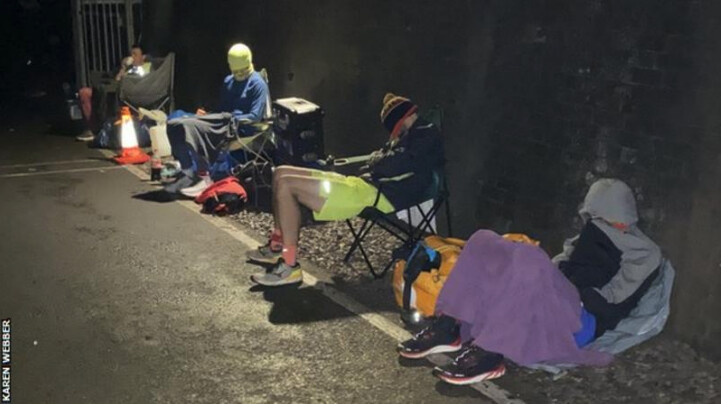
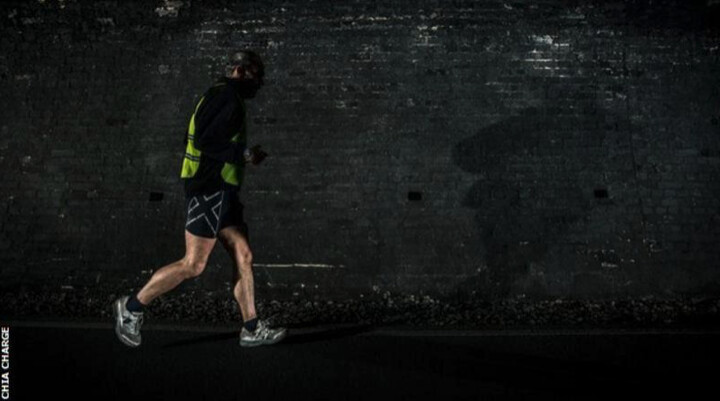
That doesn't quite cut it for some people, who choose to run a 200-mile ultra-marathon in a disused railway tunnel instead.
The Tunnel Ultra is a race like no other. It's easy to find longer events. Some even involve repeating the same loop for days on end. But nowhere else can you take part in a race so twisted that you spend more than two days in darkness doing a one-mile shuttle run 200 times, or so punishing that one runner went temporarily blind - then thanked the race organiser for the privilege.
No outside support is permitted, headphones are banned and runners are not allowed to run side by side. Oh, and there is a strict time limit of 55 hours.
The Tunnel website describes it as "a mind-bending test of extreme endurance and sensory deprivation". It is more health warning than marketing slogan.
"I could be sat on the sofa watching Strictly with the wife and kids. Or do I want to be in a dripping tunnel, tired and miserable, knowing I've got work on Monday?" Guy Bettinson, a 45-year-old programme manager from Cumbria who won the Tunnel in 2020, wonders out loud. "I'd rather waste my weekend putting myself through misery."
"It's so pointless. You're not getting from A to B, which makes it such a massive mental challenge," says Andy Persson, another finisher that year. "If you can push your mind further than you think is possible, it's quite empowering."
Christian Mauduit, a French software engineer who won the 2021 edition, says: "I'm chasing that internal adventure - that meeting with myself. It's like a little kid - they want to see how close they can come to the fire. I'm still that little kid."
Bettinson describes every ultra-marathon start line as a "mid-life crisis anonymous meeting". "We've all got issues," he says. "It's clearly some kind of therapy."
The race takes place in Combe Down Tunnel, a mile south of Bath city centre, and starts at 4pm on a Friday in March. No more than 40 runners make it that far, partly because of a strict - and deliberately opaque - qualification process and largely because the tunnel is not big enough to accommodate many more. "Even the start line is weird," says Mauduit. "You have to stand one behind another in a queue."
Combe Down was restored as a cycle path in 2013 after 47 years under weeds. It is the UK's longest foot tunnel - and the obvious setting for an ultra-marathon if your name is Mark Cockbain.
"I like things that have got an X-factor," says Cockbain, a prolific former ultra-runner who set up the Tunnel in 2019 to add to his brilliant yet brutal portfolio of events as a race organiser. "As soon as I got permission to use the tunnel, it was a no-brainer."
The race is low key in the extreme. A fold-up table outside one end of the tunnel serves as race HQ. There is no shelter or rest area to speak of unless runners have the foresight to bring a camping chair. They must all share a portable toilet which, by the end of the weekend, would not look out of place at a music festival. Refreshments are limited to water and tea, while the most luxurious snacks are Pot Noodles. If you're lucky, they might not be out of date.
"I cut back on delicacies," says Cockbain in the matter-of-fact style for which he has become famous in the ultra-running community. "You can get through any of these races with a bit of water and food. I wanted to make it all about the running."
For Mike Raffan, a 43-year-old IT manager from Aberdeen who finished second in 2021, that's part of the appeal. "It's nice that there isn't any nonsense," he says. "The Tunnel is pure, unadulterated running. You run from one end to the other in a straight line, turn around a traffic cone, come back again, and just keep going. That's it." Persson agrees. "There's no fanfare. If you're looking to be pampered, you've come to the wrong place."
All of which adds up to a notoriously low finish rate. Of the 31 runners who started the inaugural Tunnel, only two completed it, and 13 in total in the three years it has been in existence.
"I don't want there to be no finishers," says Cockbain. "But I do want them to go through hell to get there."
So how exactly do you survive a race that is deliberately designed to break you physically, mentally and emotionally?
In one sense, it is simple. "The only things you have to think about are moving, eating, drinking, sleeping and going to the toilet. That's the limit of your universe," says Max Newton, a fundraising manager from Sheffield who was among the seven finishers in 2020. "All that jazz in real life is nonsense."
"One tactic for me is 100% commitment," says Raffan. Those words carry added weight from someone who ran 182 miles in 42 hours around his back garden three months after open-heart surgery in 2020. During another Cockbain race he continued running in conditions so bleak that his eyeball froze. "I never thought about not finishing the Tunnel. Before the race I told them, 'Do not let me stop unless there's a medical reason for it'."
Mauduit's approach is similar. "I'm asking myself all the complex questions - 'Why am I doing this? Should I go there?' - before the race, in training. During the race I just finish the lap - there's no question."
"You have to be all in. If doubt creeps in, you're gone," says Cockbain. A 50-year-old electronics engineer by trade, he completed 199 marathons and 106 ultras - including some of the toughest in the world, notably five Spartathlons, three Badwaters, a double Badwater and a 300-mile race in the Arctic - before knee problems forced him to stop running in 2011. "I could sit in a corner and hit my head with a spoon for three days if that's what I decided to do."
Bettinson admits the "possibility of failure was a big thing" when he stood on the start line, yet he went on to finish in a scarcely believable 43 hours nine minutes. It remains a Tunnel record by more than six hours and is "up there with some of the all-time greatest ultra achievements", according to Cockbain, not a man given to hyperbole.
Repeatedly running along the same stretch of tarmac throws up a mental challenge rarely found in races of any distance, let alone 200 miles (the total distance is actually 208 because the tunnel is slightly longer than a mile).
"The difficult thing with doing 100 laps is there are 100 chances to stop," says 49-year-old Newton, who also ran a 300-mile lapped ultra last summer. Even if runners quit mid-lap, they must make their way back to the start line. Mauduit agrees that the turnaround point at race HQ is often the most difficult. "Once you're on the course it's easy - everyone can do two miles," he says.
"When you reach the start line again you're facing two choices. One is calling it a day. You will still suffer, your legs will hurt, the pain will follow you for hours, and you have to deal with the fact you gave up. Or you can beat your own personal record in the tunnel and write history. You only have to be motivated for five seconds - just enough time to pick your butt up and get into the tunnel. During the Tunnel I don't do 200 miles; I do two miles 100 times."
A positive mindset is universal - some would argue essential - among those who have completed the race.
"When it's really hurting and I'd rather be in bed, I say to myself, 'I love this tunnel and I can't believe I've got this opportunity'," says Persson, a 57-year-old counsellor from Bristol who once ran 900 miles from Land's End to John O'Groats in 17 days.
"You've got to embrace it - there's no point fighting it or being grumpy. You have to find the bits that make it good," says Newton. Alan Cormack, who finished second in the inaugural Tunnel, adds: "You don't have to worry about weather, mud, navigation. And you don't have to carry a pack."
With no scenery, music or conversation, surely it must be boring? "On these runs you're often very busy," says Mandy Foyster, who staggered over the finish line five minutes inside the time limit in 2021 to become the only female runner to have completed the race. "You don't have time to get bored - you're doing maths in your head and you're so focused on keeping going."
Persson says "my personality likes routine", while Mauduit positively loves it. He once ran 238 miles in 48 hours on a treadmill, but says his favourite events are six-day races. His record is 541 miles.
For Raffan, ultras are his meditation. "People ask what I think about when I'm running. Absolutely nothing. At the best points your mind is empty. When you're in that proper trance state you're not thinking about anything."
Running 200 lengths of the tunnel means running 200 times past a speaker built into the wall at the midway point that resembles a giant eyeball and pumps out classical music on loop all day and night. "There are these little submarine-style windows which glow different colours," says Newton. "It's like super stereo."
Cormack describes it as a screeching violin, which Bettinson claims "adds to the weirdness and psychological torture". Mauduit is more direct: "It drives you nuts."
More psychological torture comes in the form of darkness. There is only dim lighting in the tunnel - which is shared with cyclists and walkers during the day - and even these are switched off between 11pm and 5am.
"Not only are you in the darkness, but you are alone and you have no headphones. It's like a giant meeting with you and your feet," says 47-year-old Mauduit. "All human bodies are conditioned by daylight. In a standard race, when the sun rises you feel great. In the tunnel you have no reference - it's always night."
"It became a very big battle to stay awake," says Foyster, a seasoned ultra-distance athlete whose idea of celebrating her 50th birthday was to cycle between Ben Nevis, Scafell Pike and Snowdon and sleep on the summits of each. "When I got to the end of the tunnel I'd step out in the daylight and just stand there for 10-15 seconds."
Foyster put more thought than most into keeping the so-called sleep monsters at bay - "I had perfume to spray and a Vicks to stick up my nose - anything to stimulate your senses" - but her most valuable tool was a small spray bottle. "When I felt myself falling asleep I sprayed myself in the face with water. That was absolutely fantastic."
Some runners might grab a power nap outside the tunnel - and pray it doesn't rain. Others treat sleep as an inconvenience in a race with an already demanding time limit. A rare few don't even afford themselves the luxury of sitting down.
"If you stop you've got to start again. If you don't stop you don't have to start again. I just kept going," says Bettinson, whose 17 years in the Army have proven an excellent grounding for ultra-running. "I did end up lying down a couple of times, but you're in so much pain by the second night that you can't sleep anyway. And you're just wasting time by not moving."
Raffan pulled out of the 2019 Tunnel after 100 miles to join his wife and daughter at the zoo. It remains his only DNF from more than 50 ultras. When he returned in 2021 he deliberately did not bring a chair. "I ended up sitting on somebody else's, but that was good because whenever they needed it, it forced me to get out."
"I don't trust myself to set an alarm and wake up, so I didn't take the risk," says Mauduit. "The only time I stopped was at the refreshment table or to go to the bathroom."
If sleeping is optional in the Tunnel, hallucinations are all but guaranteed.
"I saw a family of abominable snowmen, a massive slug and I thought I was on the edge of a cliff," says Karl Baxter, who failed to finish the race in 2020 but conquered it with less than an hour to spare the following year.
"Orange blobby monsters kept floating at me out of the darkness," says Foyster, who blames her good friend Baxter for convincing her to sign up for the race. "I wasn't in a tunnel a lot of the time - I was running through Egyptian tombs or over a suspension bridge with deep ravines."
Mauduit recalls: "On the last day it got insanely bad. I was seeing stairs; I was walking on a glass floor. I couldn't escape from it. The hallucinations were an order of magnitude stronger than anything I've ever had before. It was mind-blowing."
Cockbain has seen it countless times. "It's just total carnage," he says. "People are losing their marbles. If they stop for a rest, they can't remember which way they're going."
The effects lasted beyond the race for Persson. "I saw ticker tape, carvings in the wall, and I was convinced there was a glass conservatory with flowers. My wife and daughter picked me up and I was still hallucinating by the time I got home. I've never had that level of it before - it was so extreme."
Training for the race varies wildly between competitors. Bettinson's longest run in the build-up to his victory was a mere 12 miles; Foyster "did a lot of fast walking"; Cormack, who was scared of the dark as a child, favoured night-time runs; and Baxter attempted to simulate the boredom with lengthy treadmill sessions or by running up and down a one-mile stretch of road. He managed 48 of them one day.
Eating and drinking strategies are equally individual, but, given that runners burn about 20,000 calories during the course of the race, hunger triumphs over health. Dentists and doctors, look away now.
Pizzas, chocolate, cake and flat cola fuelled Foyster for nigh on 55 hours. Baxter polished off tube after tube of salt and vinegar crisps, all eaten on the move to save time. Jam sandwiches, flapjacks and Pot Noodles - "they really hit the spot" - kept Newton going. Raffan tucked into supermarket meal deals and butteries - a "really dense, stodgy" Scottish pastry - but describes cold custard as his "secret weapon". Persson's menu of quiche, sausage rolls and overnight oats seems positively gourmet by comparison.
Bettinson is powered by a concoction of Lucozade, pineapple juice and beetroot juice. He also liquifies food and puts it in baby pouches "so it's easy to get down". Because it is impossible to replace the energy you are burning, his plan is "fuel early and then cling on".
As the saying goes, what goes in must come out, although most runners visibly wince when they remember a toilet situation that Newton laughingly describes as "a disgrace".
Bettinson says: "The first time I did the Tunnel it was a little chemical kiddy loo that you'd take camping. It was in a half-collapsed tent with a broken zip. Mark deliberately put it in a puddle, so you had to get your feet wet just to get inside it, and after the first 50 miles it was like a festival loo - you had to hover over the top."
Even if runners can cope with the boredom, darkness and sleep deprivation, pounding tarmac for longer than some weekend breaks last takes an immense physical toll.
"Of course your legs will hurt - you're running 200 miles. What did you think was going to happen?" says Mauduit, a man whose CV also features winning a Deca Ironman - a triathlon consisting of a 23-mile swim, 1,118-mile bike ride and a 262-mile run.
"Everything after 20 miles involves pain," says Bettinson, who admits that theory was tested when his hips were in "absolute agony" 100 miles in. "Anyone can get round it - you just have to want to."
Newton's approach veers towards the spiritual. "In a weird way, if you run through excruciating pain it doesn't hurt any more," he says, with the caveat that this approach doesn't always translate to his partner Anna. "She's worried I'm going to die. She has seen me in a bad state - sometimes it has been a bit messy."
Cockbain has this advice: "The feeling of wanting to give up doesn't last - if you put something in its place."
Runners know better than to expect sympathy from Cockbain, whose stable of events also includes an unsupported 300-mile run from Hull to the south coast as well as a race where pairs of runners in boiler suits are chained together and have 24 hours to cover as much ground as possible. You can sense the disappointment in his voice when he recalls how The Hill, which involved climbing up and down a hill in the Peak District 55 times - equating to 160 miles - in 48 hours had to be scrapped after the pub which doubled as the checkpoint closed down.
Perhaps Bettinson sums up Cockbain best: "Mark has a motivational speech at the start of his races: 'If you're going too slow, speed up.'"
Baxter, a 51-year-old from Norfolk who spent 12 years in the Army and now drives lorries for a living, turned an ankle during his second attempt at the Tunnel. "It came up like an egg. I sat down for 20 minutes and I was going to quit. Mark said, 'A twisted ankle never killed anyone' and told me to carry on. It taught me a lot. Once I got to 150 miles I knew I was going to finish."
Individual motivation comes in different forms, but a common thread among finishers is the time, energy and money they have invested in a race that often few people outside their close circle of family and friends know about. Nobody gets into ultra-running for the glory, least of all those taking part in Cockbain's events.
"My wife is handling all the family by herself, working and having no fun," says Mauduit, who rode his motorbike from Paris to take part in the Tunnel. "I'm having this five-day vacation so I should do something good with that."
Bettinson flips the question on its head. "My why for being there is I chose to be there. I've paid the money, I've done the training, I've turned up. Why on earth wouldn't I finish?"
Foyster, meanwhile, does it for the sheep. Having grown particularly fond of the animals during endurance adventures such as running the width of the UK or cycling the length of it, she now uses ultra-marathons to help raise funds for a sheep sanctuary in Lincolnshire.
"When I was struggling in the Tunnel, my friend sent me videos of the sheep. I'm thinking of them at the tough times," she says. "Some people ask me if I have a coach. I say my coach is a sheep called Bella."
Foyster, who works at an animal sanctuary near Norwich, has run the London Marathon dressed as a sheep and even had a fancy dress costume lined up for the Tunnel, but never got chance to wear it because she was in such bad shape later in the race. What was the outfit? "A sheep dressed up as Darth Vader."
The gruelling nature of Cockbain's races and the derisory finish rate creates a special sort of camaraderie among runners, evident from the dark humour on the start line to the support they offer each other as they push beyond their limits.
"Everyone feels like they're in it together. It doesn't feel competitive," says Newton. Cormack, who runs a cleaning company in Aberdeen, adds: "Nobody cares if you're first or you're 20th." Bettinson says: "Mark's events feel less like a race and more about the entrants against the event as a collective. You're only ever racing against yourself."
Foyster, 56, says she goes into any event with a "1,000% determination to finish it", but her unwavering drive in the Tunnel took her to a place she had never been before.
"After 100 miles my body started to break down," she recalls. "By 150 miles I had adopted my walk-shuffle approach, and in the last 10 miles I completely lost my mind. I kind of went over to the other side.
"At mile 192 I became completely disorientated and started going the wrong way. I thought I was wandering along a quiet country lane. I didn't know who I was or what I was or what I was doing."
In a rare moment of weakness/graciousness (delete depending on the coldness of your heart), Cockbain allowed Foyster's friend to accompany her as she staggered to beat the time limit. He even turned cheerleader on Foyster's final lap.
"At mile 198 my vision went," says Foyster. "I couldn't see anything. I crashed into the wall a few times. I had a broken tooth. I felt like I just needed to collapse on the floor. It was the first time that I'd felt worried about myself physically.
"Mark appeared behind us on a bicycle shouting 'you've got to go faster'. I was running blind - I was running into a white mist. I felt like I was sprinting flat out. I kept running until Karen the timing lady caught me in her arms." Foyster had finished in 54:55, not even time for another lap.
Because she was "in a complete and utter state", Foyster says she did not get to savour the finish line moment. "That's the only bit I regret."
She didn't miss much. "There are only a handful of people there. You get a bit of a clap, Mark shakes your hand and gives you your medal," says Persson. "It's not like you've got people patting you on the head," says 55-year-old Cormack, who then slept on the back seat of his car because he was too tired to put his tent up.
"Mark said a few words - I was so knackered I can't remember what - and I just picked my box up and went to the train station," says Bettinson. "It was a busy weekend and there were a lot of people ready for a day out. There was me, absolutely stinking, wheeling this box and eating bits of scabby old sandwich."
Foyster was so spent that she had to be carried to her hotel room. Baxter, who did some of the carrying, says: "That was just as hard as the last few miles."
"If you finish one of Mark's races you get respect from him. That means a lot," says Newton. Bettinson agrees. "Most of my medals I chuck in the bin. If it's one I'm bothered about I keep it in a drawer. I've kept the Tunnel one."
Cockbain's goal is simple: "All I want is that someone walks away remembering it for the rest of their life. Ultimately we're going to live and die. How are you going to fill up the middle of that? Achievements last forever."
"Races aren't pretty - that is real life," says Foyster. "The Tunnel is the hardest I've pushed myself. I've never needed help like that, so my overwhelming feeling was I was so grateful."
Mauduit, who describes the Tunnel as an "awesome race", adds: "I thank Mark for putting it together. I discovered something new. It was a blast. It all makes sense because it doesn't make sense. It's worth every penny."
Baxter remembers clearly his feelings in the week after the Tunnel. "I was buzzing. I felt on top of the world. I felt invincible." Newton recalls: "When I was telling people about the Tunnel I was talking with a smile on my face."
But what on earth is next for those who have completed one of the most challenging ultra-marathons invented?
Baxter tells a story typical of a certain breed of ultra-runners. "My girlfriend said, 'Is that it?' I said, 'No way. I want to go further.' Plus, no-one has done it twice." He may have company. "I'll be back one day," says Mauduit. "I'm thinking about it."
Cockbain recognises the signs from his own running days. "It's a drug. It's an addiction. It's a never-ending 'what's next?' You never get satisfied."
Even Bettinson, the record holder, says: "My holy grail is I want to finish an event where I know I've given absolutely everything - even if I don't finish. It could be one mile or it could be a thousand miles.
"I'm still chasing that unicorn."
(01/22/2023) Views: 1,103 ⚡AMPby BBC
2023 Doha Marathon by Ooredoo a huge success with record-breaking numbers
DOHA: Ooredoo – a longstanding supporter of major sports events in Qatar – has announced that the 13th edition of its annual marathon, this year renamed the Doha Marathon by Ooredoo, was a roaring success.
The event was a complete sell-out, with 8,000 runners taking their places at the start line on the morning of Friday, January 20, 2023. Runners took part in a variety of distance categories, from the 1km kids’ run to the full marathon.
Sheikh Ali Bin Jabor Al Thani, recently appointed CEO at Ooredoo Qatar, said:
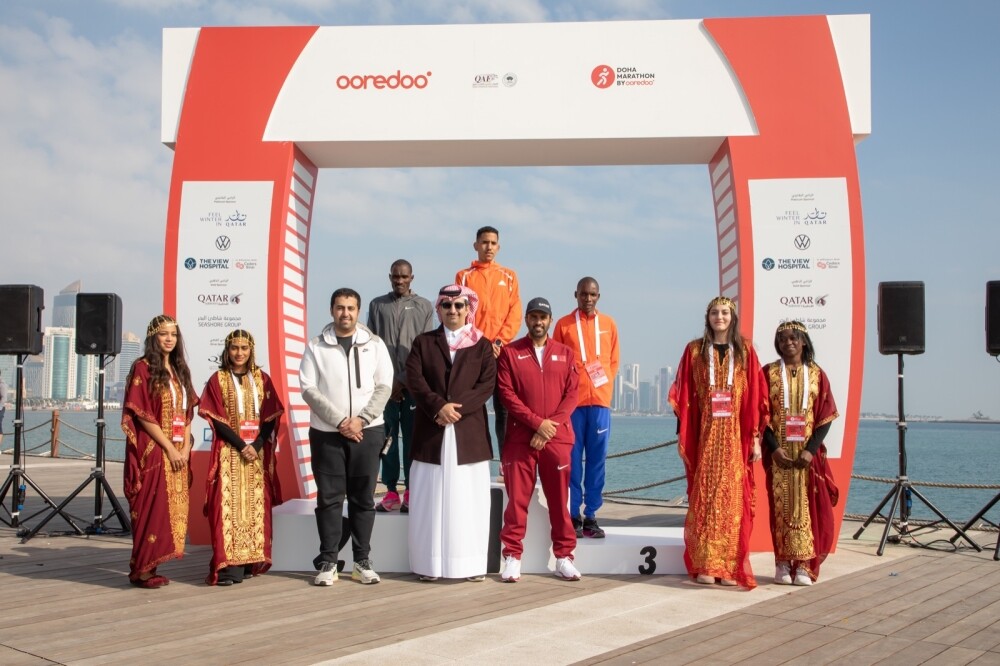
“Once again, we are delighted and proud to announce our annual marathon was a phenomenal success. As always, the event attracted some of the world’s top runners and was a complete sell-out, giving the opportunity for our local running enthusiasts to run alongside such sporting superstars. Thanks to the support of our partners and sponsors, we were able to ensure an incredible and upgraded experience for both runners and spectators alike, in line with Ooredoo’s commitment to promoting the importance of a healthy, active lifestyle as part of our corporate social responsibility strategy.”
A host of top international athletes took part, returning some incredible run times, with some athletes breaking their own personal records.
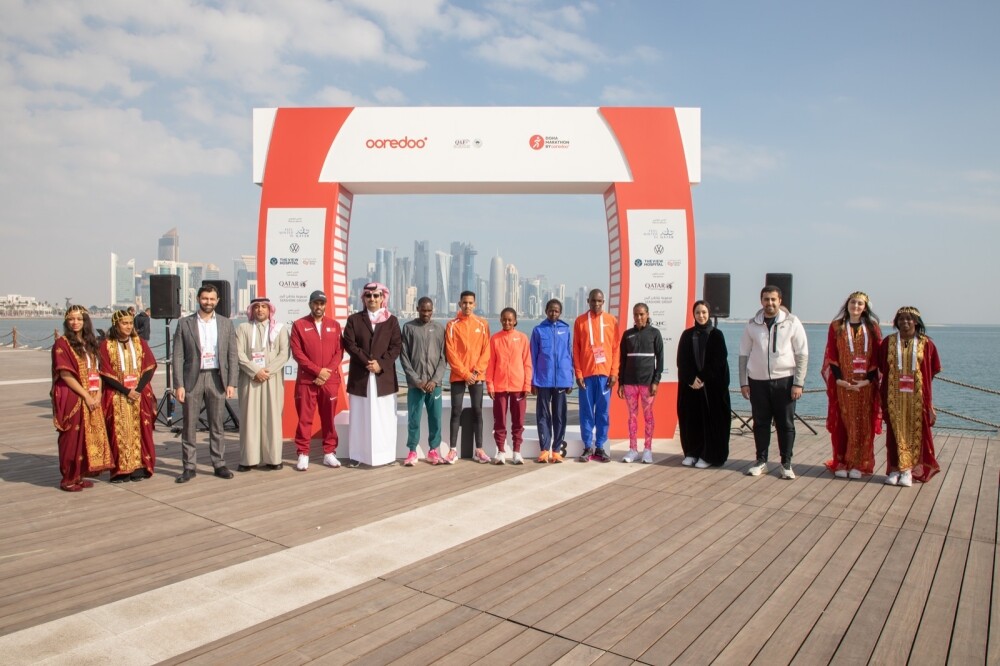
Morocco’s Mohcin Outalha crossed the finish line first in the men’s marathon in a time of 2:06:49, with Kenyan Gevin Kerich taking second place with 2:06:52 on the clock.
Kenyan Victor Kipchirchir and Ethiopian Adane Kebede finished in joint third place, registering a time of 2:06:54.
Ethiopian Meseret Belete took the top spot in the women’s marathon, clocking 2:20:45, with Desi Jisa Mokonin from Brunei finishing in second place with a time of 2:20:47. Kenyan Beatrice Cheptoo placed third with a time of 2:22:28.
In the open marathon category, the men’s race was won by Briton Michael Kallenberger with a time of 2:23:02, while the USA’s Abigail Cember took the top spot in the women’s race, clocking at 3:04:00.
Qatari runners were once again able to enter the AlAdaam category this year. Abdulla Fahad Al Zarra won the men’s marathon with a time of 2:48:21, while Rabaah Al Musleh finished first in the women’s marathon with a time of 3:50:55.
The men’s half marathon was won by Morocco’s Anouar El Ghouz in a time of 1:03:23, with Ukrainian Tetiana Pydoyna winning the women’s half marathon in 1:08:53.
Mohammed Issa Al Fadalah, President of the Qatar Athletics Federation, said:
“We extend our thanks to Ooredoo for once again hosting a phenomenal marathon that is consistently a highlight of Doha’s sporting calendar. Events such as these demonstrate Qatar’s suitability as the ideal venue for major sporting events, and this is only reinforced by the number of top international athletes who travel here to take part. We were delighted to see such an incredible turnout, and congratulate all runners on their sterling performances.”
A total prize fund of QR1 million was on offer across all categories, with event sponsor Q-Auto also offering a Volkswagen T-Roc as a raffle prize to one lucky winner drawn from all those who finished their race in the 5km category and above.
Sheikh Ali Bin Jabor Al Thani fired the starting gun for the Elite category and honored winners with their medals. Sabah Rabiah Al-Kuwari, Director PR at Ooredoo, joined QAF President Mohammed Issa Al Fadalah to present medals to winners in the other categories.
Spectators were able to enjoy the electric atmosphere from the many vantage points along the runner-friendly route, with the race village offering several food and beverage options and plenty of fun to be had by all.
Platinum sponsors for the Doha Marathon by Ooredoo 2023 were confirmed as Qatar Tourism, Q-Auto and Holding Group, with Qatar Airways and Seashore as Gold sponsors. Silver Sponsors are Al Rayyan Water, Aspetar, QIC, and Qommunication.
In line with Ooredoo’s commitment to supporting the community, all funds generated from registration fees for the 2023 Doha Marathon by Ooredoo will be donated to charitable organizations.
(01/21/2023) Views: 959 ⚡AMPOoredoo Doha Marathon
We started the Ooredoo Doha Marathon as a way to bring people together, encourage them to live healthier lifestyles and give back to the community. Funds raised by entry fees to the Ooredoo Doha Marathon will be donated to a range of worthy charities in Qatar. The marathon features four courses for all abilities of runners including a full marathon,...
more...Transgender athletes to be allowed to compete against women in new World Athletics rules
World Athletics is set to leave the door open for transgender athletes to compete against women at the highest level.
Sports chiefs have found themselves with a tough decision to make whether to allow male-born trans women to compete in female categories. Last year the Olympic Committee published statement which stated that 'fairness and scientific evidence' should be taken into account by international federations when devising eligibility criteria for trans athletes.

Triathlon became the first British sport to ban trans women from competing in female events instead changing the name of their men's category to 'open'. English Volleyball followed them while British Cycling banned a trans athlete competing at last year's National Omnium Championships and are completing a review of their policy.
World Athletics are yet to decide their stance in the trans athlete debate but Telegraph Sport reports that the governing body has begun a consultation with its member federations over a proposed rule change.
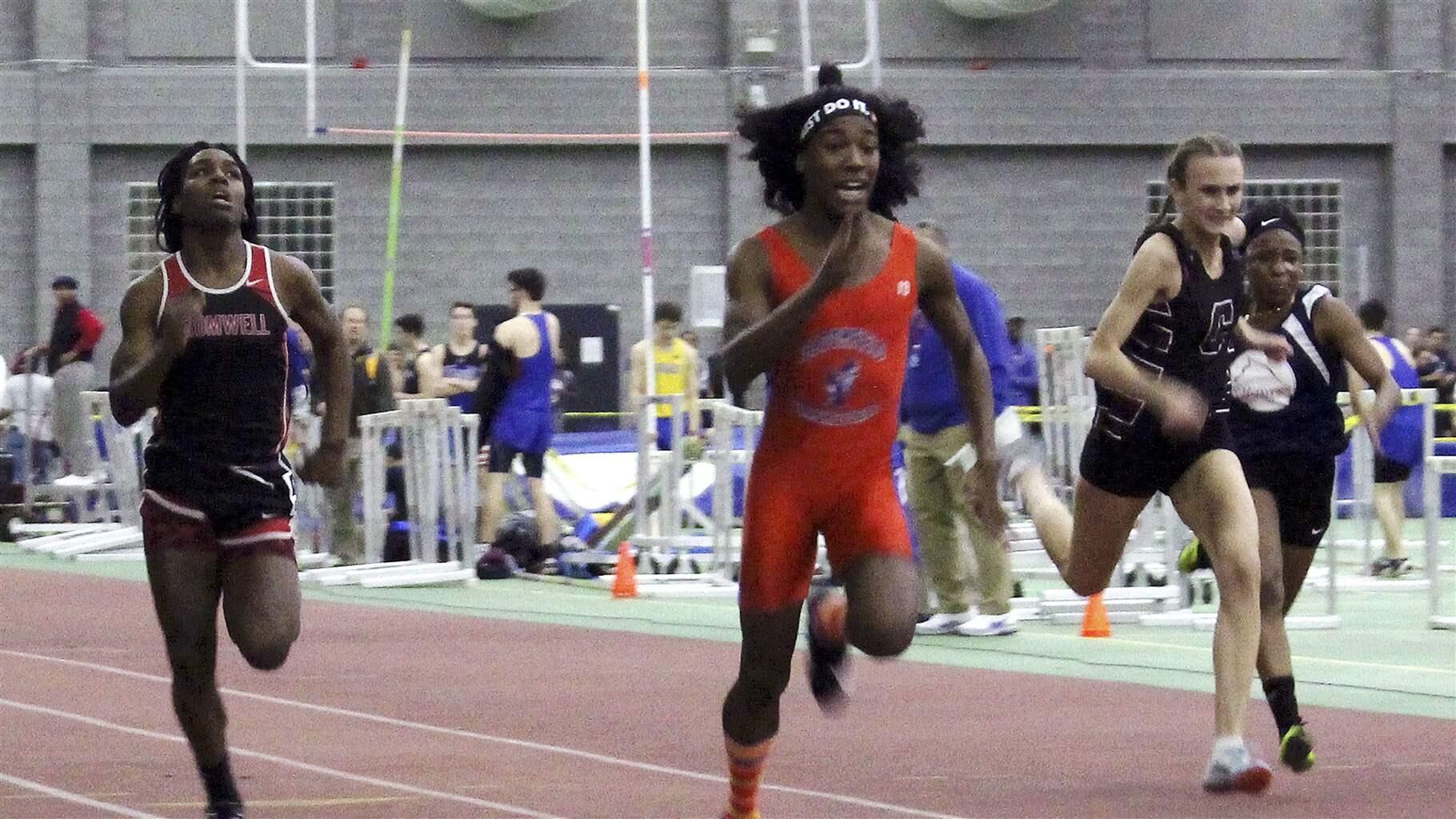
The change would see a tightening of regulations but fall short of banning trans women from competing in female events at the highest level.
The consultation sent to member federations says: “This preferred option would allow significant (although not full) reduction of anaerobic, aerobic performances and body composition changes, while still providing a path for eligibility of trans women and 46 XY DSD individuals to compete in the female category.”
The Telegraph states that the preferred option also includes a 'full harmonisation of its trans regulations' and those governing athletes with differences of sexual development (DSD), including Caster Semenya.
The “preferred option” would see a halving of the maximum permitted plasma testosterone for trans women from five nanomoles per litre to 2.5 nmol/L. There would also be a doubling of the period athletes must remain below that threshold before being allowed to compete from one to two years.
Athletes currently must remain below a 5nmol/L level for just six months to compete in track events from 400 metres to a mile.
It has been reported that the confidential consultation was sent to member federations amid 'strict secrecy' and presented to the governing body’s council at the end of November. A final decision will be made by the council in March.
(01/21/2023) Views: 707 ⚡AMPby Benjamin Goddard
6 Reasons to add yoga into your training routine
In the world of physical activity, it seems as though there are two kinds of people: those who do cardio, and those who do yoga. The two activities couldn’t be more different, one can involve moderate to big intensity and involve lots of endurance, while the other is slower and gentler (although still a good workout.) Both forms of exercise offer plenty of benefits, and the opposite nature of the two is why endurance athletes can get a lot of value from doing a little downward dog once in a while. If you’re not convinced, check out these reasons why you should add a yoga practice into your training schedule.
1. Yoga is a great form of active recovery
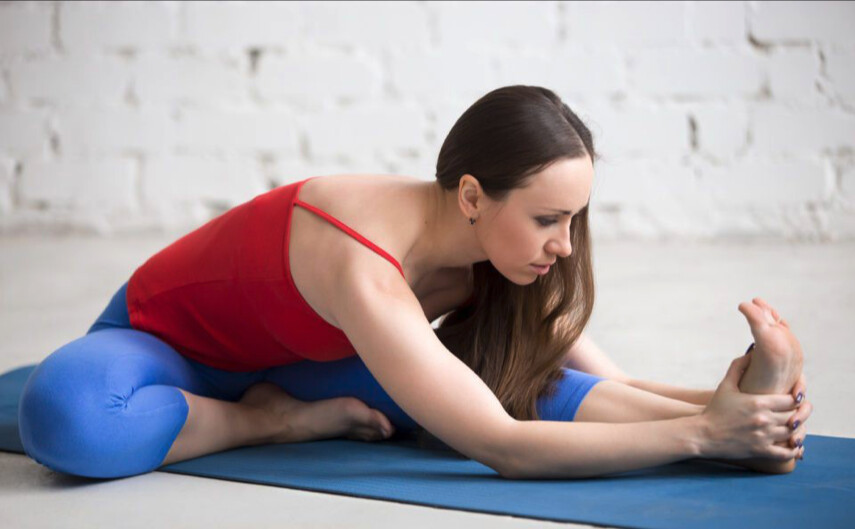
If you’re feeling beat up from training, it’s a good idea to take a day off to allow your body to recover. Instead of doing nothing that day–which is still fine–yoga is a great way to add gentle movement into your day to help you release some tension in your body, stretch out some tight muscles and bring your body into a more relaxed state. This may actually help you recover better than you would have by doing zilch, and you’ll return to training refreshed and ready to go.
2. It helps you get in tune with your body
Most yoga practices emphasize paying attention to and listening to your body. Practising regularly will teach you to be more in tune with your body, not only when you’re doing yoga, but also when you’re out doing a workout. This may allow you to catch signs of injury, over-training and burnout sooner than you would otherwise, because you’re better able to pick up on your body’s subtle cues that something is off.
3. You’ll improve your mental game
Yoga is great for your mind, and can teach you how to focus, tune out unwanted thoughts and remain calm under stress. Anyone who’s ever dealt with race-day jitters will appreciate how valuable these skills are for triathletes, and the ability to control your mind before and during a race can help you perform well, even when the pressure is on.
4. It reduces stress
Long workouts can be be very hard on your body. According to Harvard Health, incorporating a few minutes of yoga into your weekly routine can help slow your body down and reduce that stress. This will help you in a number of ways, including improving your mood, boosting your immune system and helping you sleep.
5. It improves flexibility
While a certain amount of tightness in your muscles is a good thing for triathletes, too much tightness puts you at risk for tears, strains and other injuries. Regular yoga can help to stretch some of those tight muscles back out, and loosen up areas of the body that are holding onto tension. For those of you who are worried about too much stretching, if the amount of swimming, biking and running you’re doing in a week is exceeding the amount of yoga, you’re unlikely to become too flexible.
6. Yoga teaches you how to breathe
Learning to control your breath while you’re training will help you stay relaxed in the middle of a hard workout or race. Since yoga focuses so heavily on matching your breath with your movements, it’s a great way to teach breath control, a lesson you can take with you on the bike.
(01/21/2023) Views: 416 ⚡AMPby Triathlon Magazine
Think you might be injured or sick? Try three days off
Unsure if that extra-tight hamstring is actually a muscle strain? Feeling a little extra-tired and pondering whether you should run anyway? Three days off may be the answer.
David and Megan Roche, coaches and coauthors of The Happy Runner, have a three-days-off rule where they encourage the athletes they coach to freely take three-day rest blocks at any time. Here’s how (and why) you should try it yourself.


Runners want to push through everything
There’s good reason runners joke about this Monty Python skit when discussing injuries–we almost always want to find a way to muscle our way through. Sometimes (often) less is more. “…in an athletic life, holding on too tightly can have negative physical and mental health ramifications,” says Roche.
Recognizing what mental, emotional, and work and family stress you are adding to your training load is valuable. So is knowing that even if you scale back training time, your body is always striving to make adaptations to become better at handling stress, both physical and mental.
Our bodies know stress, not miles. Read that one again. You may have heard it before, but dig in there.
Instead of obsessing about lost mileage, listen to Roche’s wisdom: “Our Strava training logs quantify miles and intensity as stress proxies. Meanwhile, our brains and bodies are constantly integrating and quantifying stress directly through the nervous system. That stress load interpreted by the nervous system is what determines adaptation, not the proxy stress load on training plan bar charts.”
Short-term cycles of inflammation (potentially good) can cause long-term negative feedback cycles (bad)
Roche explains in trailrunnermag that running, or any intense workout, will cause acute inflammation. “Acute inflammation may lead to growth, depending on the context,” he says. “Chronic inflammation may lead to almost every negative health outcome imaginable, from overtraining to life-threatening illnesses.”
While some inflammation may be a result of training, others may be caused by immune responses, nutrition, elevated cortisol responses “and basically everything else you can think of,” says Roche. “Preventing acute inflammation from becoming chronic inflammation sometimes requires stopping the cycle fully with time off.”
72 hours allows your body to perform repairs that will strengthen you
When you combine periods of dedicated training with healthy time off, your body is able to make the adaptations necessary to rebuild and recover.
“The biggest breakthroughs can happen a week or two after these quick breaks, and that’s not just due to recovery, says Roche. “That’s all about rest-induced growth.”
Time off lets you reassess and determine next steps
Roche suggests a branched tree of options after three days off (for any reason). If a runner is itching to go, easing back into running or cross-training can start, paying attention to issues if they crop up.
Alternatively, three days might be the perfect length of time for you to realize that you might need more time off and that it’s time to see a physical or mental health professional. Whatever choice you make, Roche reassures you that knowing when to take time off is an emotional strength that may well make you physically stronger, too.
(01/21/2023) Views: 701 ⚡AMPby Running Magazine
Want to Live Longer? One Study Says to Eat Like This.
It's no surprise that what people eat has an impact on their health, but trying to pinpoint exactly what diet out of the hundreds out there is most optimal for a long, healthy life can be overwhelming. A new study reports that there is no one optimal diet for longevity, but several general eating patterns that can shift life expectancy.
Published in the journal JAMA Internal Medicine, the study found that one can reduce their risk of an early death by nearly 20 percent by eating foods from one of four healthy eating patterns: A Mediterranean diet, a plant-based diet, the Alternative Healthy Eating Index and the Dietary Guidelines for Americans (more on those below). All four eating patterns emphasize whole grains, fruits, vegetables and legumes.
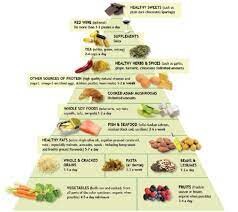
Professor and chair of Harvard's Department of Nutrition, Dr. Frank Hu, said in a statement, "It is critical to examine the associations between DGAs- recommended dietary patterns and long-term health outcomes, especially mortality."
Hu says there is a lot of flexibility when it comes to eating healthy and dietary choices can be tailored to individual preferences as long as they adhere to the basics of any of the four healthy eating styles. This means that even if you get tired of eating one way, you can switch over to another dietary plan. The study followed the eating habits of 75,000 women and 44,000 men over 36 years. Every four years, the participants would fill out questionnaires about what food they ate, and each person was scored based on how much they adhered to one or more of the eating patterns.
Participants who remained consistent with their healthy eating patterns could reduce their risk of dying from respiratory disease by 35 to 46 percent, cardiovascular disease by 6 to 13 percent and dying from cancer by 7 to 18 percent.
Most people are familiar with the Mediterranean diet and a plant-based diet, but what about the other half of the recommended four healthy eating patterns?
Alternative Healthy Eating Index
Developed by Harvard researchers, the Alternative Healthy Eating Index (AHEI) assigns ratings to foods for how well they prevent chronic diseases and illnesses including cancer, diabetes, heart attacks and strokes.
Some AHEI food choices include a variety of vegetables with a focus on leafy greens, four servings of fruit a day, whole grains, nuts, legumes and vegetable proteins like tofu, fish and healthy fats like olive oil. In following this eating pattern, it's suggested one avoids potatoes, refined grains, fruit juices and saturated fats.
Participants of the study who followed the AHEI eating pattern reduced risk of death by 20 percent.
The Dietary Guidelines for Americans (DGA) is a metric designed to measure diet quality by how closely one follows its recommendations: Focus on variety, nutrient density and portions, limit added sugars, saturated fats and sodium and avoid sugary beverages. The guidelines are less specific on what foods to eat, rather an outline on how to customize nutrient-dense meals, meeting dietary needs and staying within calorie limits.
Within this study, participants who followed this eating pattern had a 19 percent lower risk of dying.
(01/21/2023) Views: 704 ⚡AMP
by Trail Runner Magazine
Plant-based runners: speedy grab-and-go meal ideas
Interested in eating plant-based but struggling to find simple, quick meals that are full of nutrition while still easy on the budget? The authors of Plant-Based Sports Nutrition have some tips and tricks for you.
Both registered dietitians, authors Dr. Enette Larson-Meyer and Matt Ruscigno suggest planning in advance as key to maintaining high-performance plant-based nutrition. Reading labels is important–with the many new plant-based alternatives to meat and cheese, it can be tempting to purchase whatever looks appealing. Check iron, protein, fat and calcium content, and look for options that have the equivalent nutritional composition of the products they’re replacing.

Larson-Meyer and Ruscigno also suggest adding a salad to any meal, with fresh and dried fruit tossed in to add both a diverse array of nutrients (calcium, vitamin C, vitamin E, iron, zinc, etc.) as well as carbohydrates. Adding nuts, beans or cheese (provided you’re not strictly vegan) can boost healthy fat and protein, as well.
It can be challenging enough to squeeze in a run alongside all the other things you may do in a day. Eliminate some of the stress by trying some of these quick make-and-take breakfast and lunch options.

Grab-and-go breakfasts
Have some fresh or dried fruit in reusable containers on hand, and grab one of the following to make your morning ridiculously simple.
Homemade muffins made with grapeseed or canola oil and whole grains (try Shalane Flanagan’s recipe here)
Whole-grain toasted English muffin with low-trans-fat margarine or nut butter and jam
Dairy or soy yogurt, fruit and granola parfait (made the night before in a to-go container)
Breakfast cookies (make your favourite oatmeal cookies with half the sugar, orange juice as the liquid, and add dried fruit, nuts and ground flaxseed)
Quick portable lunches
Pack fresh fruit or veggies and/or whole-grain crackers or whole-wheat pretzels along with one of these easy-to-throw-together lunches and some healthy cookies.
Tomato, avocado, and sprouts on a whole-grain bagel
Black beans, lettuce, avocado and salsa in a spinach or whole-wheat roll-up
Black-eyed-peas spread (1 can beans, 1/2 cup parsley, 2 Tbsp olive oil, 2 Tbsp lemon juice, 1/2 tsp tarragon, garlic and pepper to taste) on flatbread or in a whole-wheat wrap
Dark leafy greens in a pita with chickpeas, kidney beans or white beans, and dressing of choice
Peanut butter, sliced banana, raisins and walnuts on whole-wheat bread
Red-pepper bean spread (1 cup white beans, 2 tsp finely chopped roasted sweet peppers, 1 tsp finely chopped scallions) on foccacia or flatbread
If you decide to maintain a plant-based diet for the long haul, keep your menu exciting by trying new foods and learning about nutrition. Once you nail the basics, planning nutritionally-balanced meals will become as much a part of your routine as training, and can be an enjoyable, easy part of your day.
(01/20/2023) Views: 680 ⚡AMPby Keeley Milne
Australian 800m Commonwealth medalist tests positive for EPO
On Friday morning, Athletics Australia announced the provisional suspension of middle-distance runner Peter Bol, who won the silver medal in the men’s 800m at the 2022 Commonwealth Games in Birmingham, U.K.
Bol, who was fourth at the Tokyo Olympics in the men’s 800m, failed an out-of-competition urine test on Oct. 11. The 28-year-old tested positive for the banned drug erythropoietin, known as EPO.
In accordance with Athletics Australia’s anti-doping policy, Bol has been provisionally suspended, effective from Jan. 10.
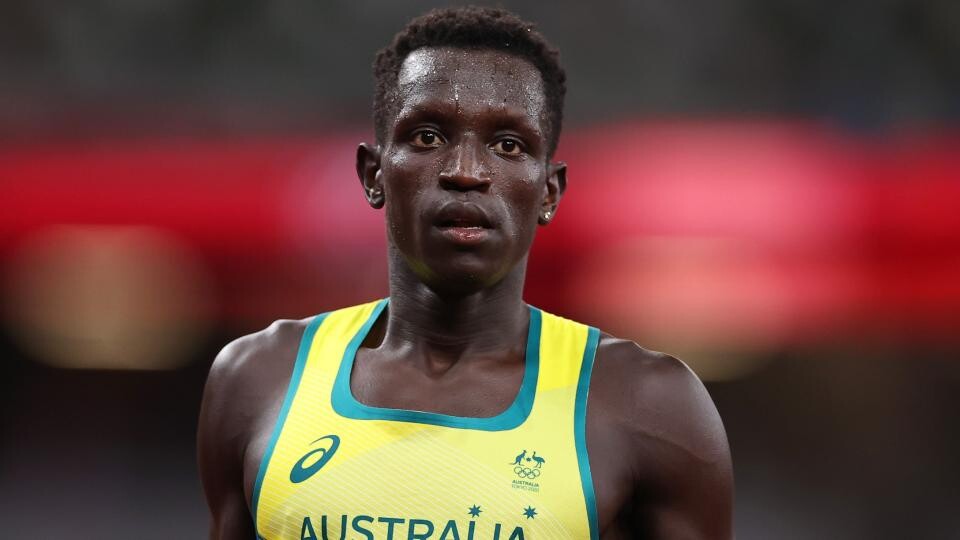
Bol went on Twitter to plead his innocence, denying that he’s ever purchased or used synthetic EPO, and has requested Sport Integrity Australia and Athletics Australia to take a look at the B sample from the October test.
Under the Australian National Anti-Doping Policy, the suspended athlete is entitled to have their B Sample analyzed. The results from the B sample will be known in February.
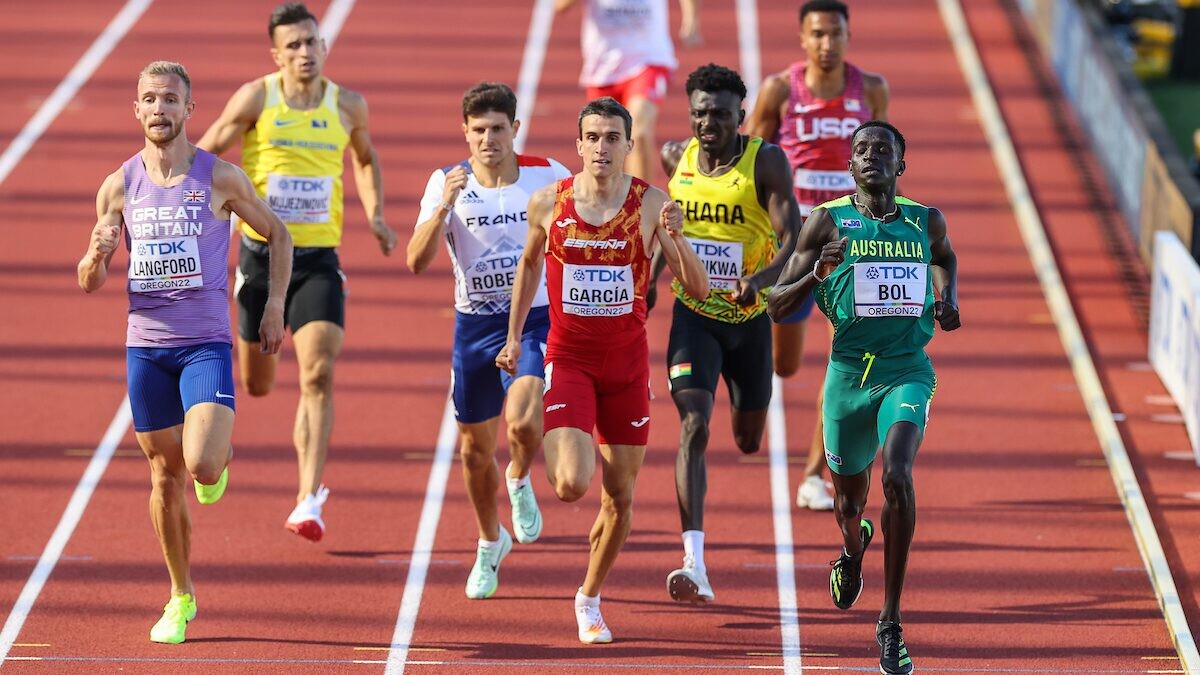
“I am innocent and have not taken this substance as I am accused,” Bol said on Twitter.
If his B sample is positive, Bol could face a four-year ban from athletics.
EPO has been on the World Anti-Doping Prohibited List since the 1990s; it is used to improve endurance performance or to speed up recovery.
Bol emigrated to Australia from Sudan with his family when he was eight. He is currently the Oceanic record holder and the fastest Australian ever over 800m, with a personal best of 1:44:00.
He currently trains in Melbourne with “Fast 8 Track Club” under middle-distance coach Justin Rinaldi.
(01/20/2023) Views: 633 ⚡AMPby Running Magazine
Athing Mu stars in Millrose Games 600m
Athing Mu is already the second-fastest women’s indoor 600m runner of all time and the US middle distance star could make another statement when she returns to the Millrose Games, a World Athletics Indoor Tour Gold meeting, in New York on February 11.
It was in 2019, at the age of just 16, that Mu clocked 1:23.57 at the US Indoor Championships to miss the world 600m best by just 0.13.
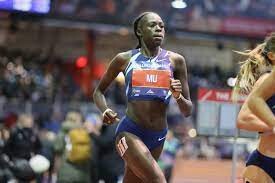
Since then, she has become an Olympic and world champion in the 800m and has taken her PB in that discipline to 1:55.04, the US record.
The 800m final at the World Athletics Championships Oregon22 on 24 July last year, which Mu won in 1:56.30, was her most recent race and she will now be looking for another strong indoor season in a year that offers her the chance to defend that world title in Budapest.
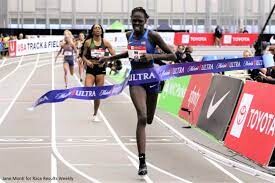
“The women’s 600m will be one of the highlights of this year’s Millrose Games, and we are delighted to welcome Athing back to the track she grew up on,” said Millrose Games director Ray Flynn.
However, Mu will have to contend with athletes including her US compatriot Shamier Little and Jamaica’s Natoya Goule if she is to secure more success.
Hurdles specialist Little, the 2015 world 400m hurdles silver medallist, will look to continue testing herself in the flat event over a slightly longer distance, after opening her season with a world-leading 600m time of 1:24.65 last weekend.
While Goule, who has an indoor 600m best of 1:25.35, was the fourth-place finisher in the 800m at the World Athletics Indoor Championships Belgrade 22 and also finished fifth at the World Athletics Championships in Oregon last year.
They will be joined by Olivia Baker and Sophia Gorriaran in the 600m field.
Also in action in New York will be Chase Ealey, as she returns to compete in front of a home crowd as the world shot put champion.
Recently announced for the opening meeting in the 2023 World Indoor Tour Gold series in Karlsruhe on 27 January, Ealey has now also been confirmed for the Millrose Games, where the world champion and world indoor silver medallist will take on her US compatriots Maggie Ewen and Jessica Woodard, plus Canada’s Commonwealth and NACAC champion Sarah Mitton.
It means fans will be treated to two thrilling shot put showdowns in New York, with Ryan Crouser and Joe Kovacs already announced for the men’s contest.
“I am really excited to have the Millrose Games as my first competition in the US as the world champion,” said Ealey. “I hope that with the success of the male and female competition, people will love our event indoors!”
(01/20/2023) Views: 562 ⚡AMPby World Athletics
NYRR Millrose Games
The NYRR Millrose Games,which began in 1908 as a small event sponsored by a local track club, has grown to become the most prestigious indoor track and field event in the United States. The NYRR Millrose Games meet is held in Manhattan’s Washington Heights at the New Balance Track & Field Center at the Armony, which boasts a state-of-the-art six-lane,...
more...Chinese TikToker earns millions running in high heels
A 41-year-old TikToker and salesman from Sichuan, China, Wu Nan, has found a niche way to sell women’s high heels. The man’s marketing strategy involves sprinting in stilettos–and he has reportedly generated a staggering six million yuan (CAD $1,100,000) in monthly sales.
After years of struggling to sell cakes, and then curtains, Nan found running in heels a great technique to boost his online sales.

In Nan’s videos, he can be seen sprinting aggressively on the treadmill, track or outdoors while wearing big black boots or dazzling stilettos, showcasing how sturdy the heels are. Apparently many women face this trouble with heels and need a durable pair to get around in.
Nan is also very descriptive with his marketing. In one clip, he refers to the softness of the sheepskin and the shoe’s “special feeling” when sprinting in it.

According to the South China Post, Wu began selling women’s shoes in 2008 when he opened his first shop. He began posting videos online in March 2020 and has gained over 1.2 million subscribers on TikTok.
Wu told Chinese news that his expectations were low at first. He thought he’d only sell around 500 pairs a year. After he made his first video, he sold over 100 pairs, raking in $10,000; now he makes more than a million dollars per month.
The prices of his shoes ranges from $40 to $200 CAD (US$150).
His videos have gone viral in China, as locals express their admiration for grown men who can run in high heels.
(01/20/2023) Views: 696 ⚡AMPAllyson Felix receives ultimate honor from her alma mater, USC
Seven-time Olympic champion and the most decorated female track athlete in U.S. history, Allyson Felix, received a special honor on Jan. 18, when the University of Southern California (USC), her alma mater, recognized her achievements by changing the name of the school’s track to Allyson Felix Field.
“For me to be born and raised in Los Angeles and have such a history at USC, I am just completely humbled,” Felix said in a statement released by the university. “It’s such a huge honor to be a part of history on campus, and it’s such a special place for me.”
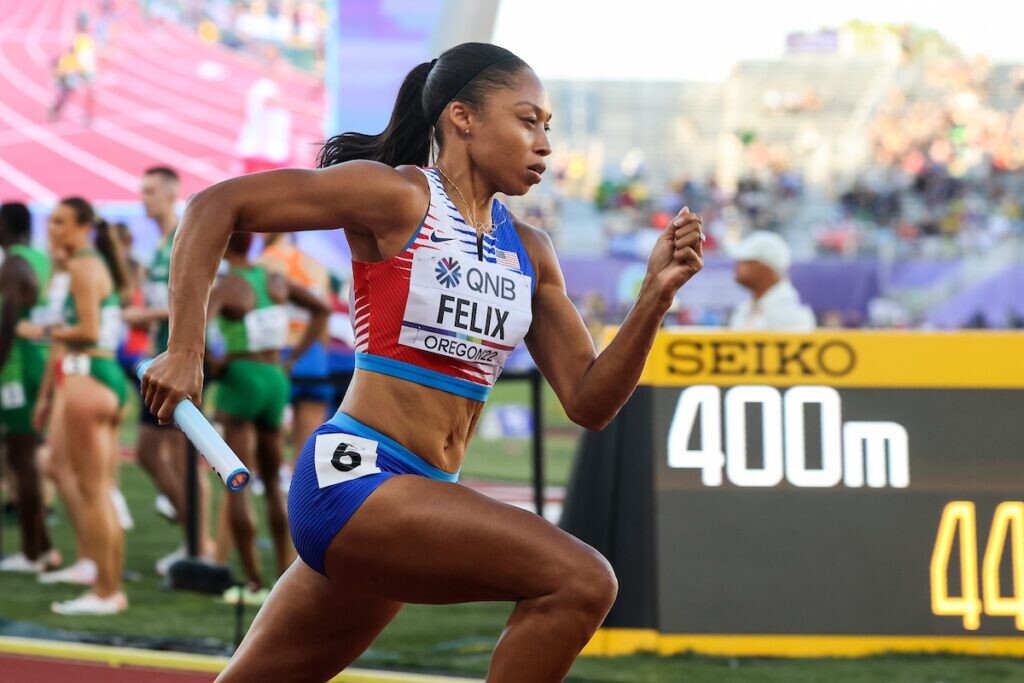
Felix retired at the end of the 2022 season, competing in five Olympic Games between 2004 and 2020, and winning 11 Olympic medals: seven gold, three silvers and one bronze.
She is also the most decorated athlete in world championship history, with 20 medals between 2005 and 2022, including 14 golds, three silvers and three bronzes (seven from individual events and 13 from team relays).
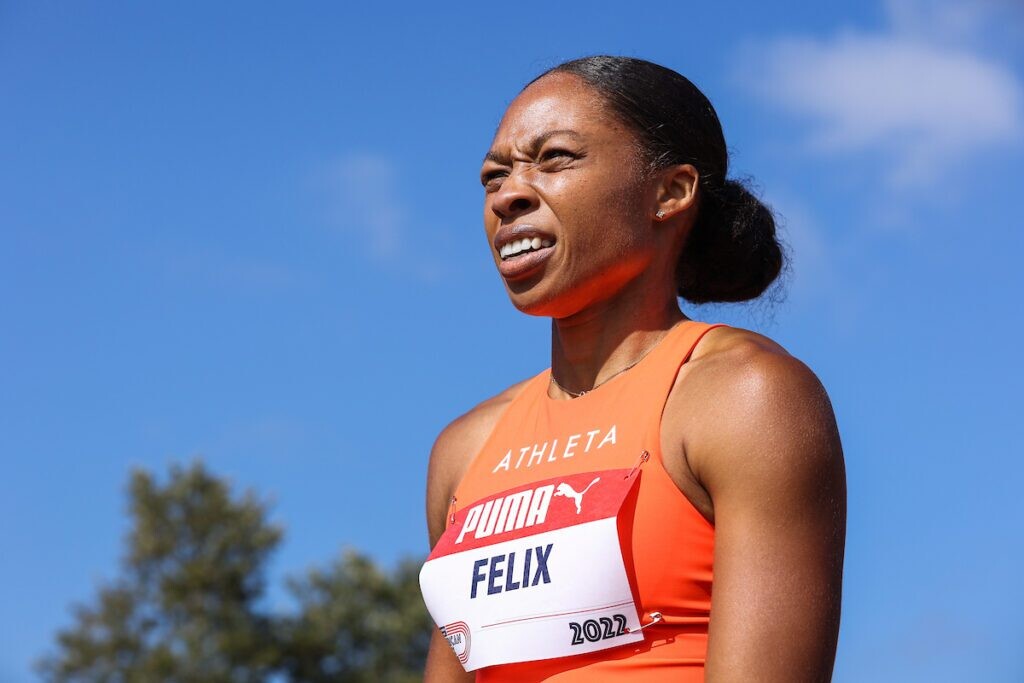
During her career, she has been a prominent advocate for women and women of color in the sport of track and field. In 2018, she broke her contract with Nike after saying publicly that the company declined to provide adequate maternity benefits and salary guarantees as Felix looked to start her family.
The stadium was previously named after American philanthropist Katherine B. Loker. The track will be formally changed to Allyson Felix Field this spring.
“The Allyson Felix Field will recognize her immense achievements as a sports legend and Trojan—while also showing our admiration for her role as an entrepreneur, advocate and champion for women,” said USC President Carol Folt.
(01/20/2023) Views: 636 ⚡AMPby Marley Dickinson
Belarusian coach charged after 2020 Olympics defection scandal
Belarusian coach Yury Maisevich was charged by the AIU for the defection of Belarus sprinter Krystsina Tsimanouskaya during the Tokyo Olympics.
On Thursday morning, the Athletics Integrity Unit (AIU) laid charges against Belarusian coach Yury Maisevich for his treatment of sprinter Krystsina Tsimanouskaya, who defected to Poland during the Tokyo 2020 Olympics.

One day before Tsimanouskaya was due to compete in the women’s 200m at the Tokyo Olympics, she accused officials from the Belarus Olympic Committee of forcing her to compete in the 4x400m relay without her consent. She complained about the situation in a video on social media, which led to criticism by the Belarus media, which claimed she lacked team spirit.
She was forced to miss her 200m race because of the incident. The next day she was taken to Tokyo’s Haneda Airport and sent home, but she refused to board the flight back to Belarus.

The national team coach, Maisevich, and Belarusian Olympic official Artur Shumak both had their accreditation revoked by the International Olympic Committee (IOC) after Tsimanouskaya claimed she was taken to the airport against her will. She sought help from the police in Japan; two weeks later, Tsimanouskaya, 26, received a humanitarian visa to Poland and safe passage to the country, which borders Belarus. She later became a Polish citizen, and is currently studying at the Józef Piłsudski University of Physical Education in Warsaw.
In Sept. 2021, IOC and World Athletics referred the matter to the AIU, charging Maisevich with breaching standards outlined in the Integrity Code of Conduct.
The AIU is an independent body created by World Athletics to manage all integrity issues (both doping-related and non-doping-related) for the sport of athletics.
The head of the AIU, Brett Clothier, explained in a press release: “An important role of the AIU is to safeguard athletes and protect them from harassment.”
The AIU alleges that, with respect to the circumstances of Tsimanouskaya’s removal from the Olympics, “Maisevich did not act with integrity and acted in bad faith; failed to safeguard the athlete’s dignity and his actions constituted verbal and mental harassment; and that he brought athletics generally into disrepute.”
The AIU has not revealed the specifics of the charge and the implications for Maisevich’s future in the sport are not clear.
(01/19/2023) Views: 670 ⚡AMPby Marley Dickinson
Eliud Kipchoge hopes to make history as the only athlete to win all the marathon majors
Speaking over the weekend during the unveiling of his murals in Eldoret, the world record holder said his next stop will be Boston in April before closing the season with the New York Marathon later in the year.
Kipchoge has so far won Tokyo, London, Berlin and Chicago, which are part of the World Marathon Majors.
He said winning Boston and eventually New York City Marathon will be great.
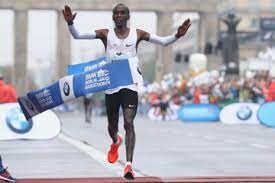
“2022 was a great and very successful year for me. Right now my focus is on the Boston Marathon as I seek to win my fifth World Marathon Majors race,” said the four-time Berlin Marathon champion.
Kipchoge said he wants to consolidate the six-star marathon medals as well as engage in other community-based projects under his Eliud Kipchoge Foundation.
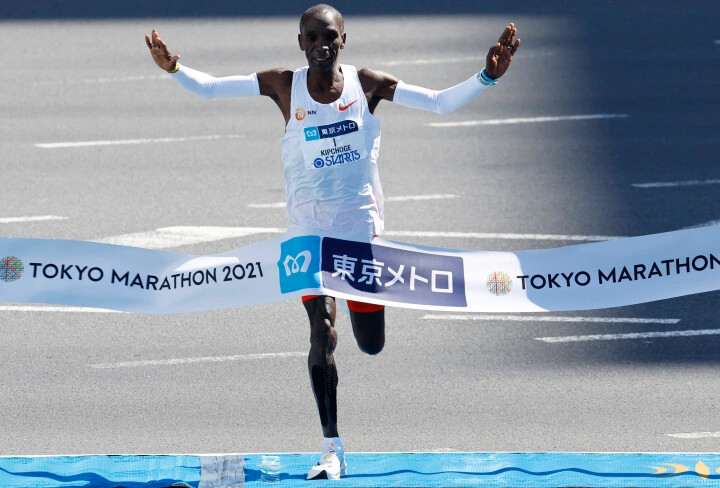
He said he is currently looking at projects anchored around education and tree planting.
The four-time London marathon champion said his target in the education sector is to build at least a library in each of the 47 counties.
“I do not only want to construct a library in each county, but also adopt a forest in each county. This is a big dream but I know there is a need to plant more trees so that humanity can have clean air to breathe as well as conserve the environment,” he said.
Safaricom CEO Peter Ndegwa said the murals are artistic impressions in honour and celebration of Kipchoge’s achievement as one of the greatest marathoners.
The murals were inscribed: ‘No human is Limited' and ‘Wenye nidhamu tu maishani ndio wako huru' meaning 'only the disciplined are free'.
Ndegwa also announced a Sh1m donation towards Eliud Kipchoge Foundation. In addition, the telco will also support Eliud with 5,000 tree seedlings as part of his tree-growing initiative at Kaptagat Forest.
In Boston, Kipchoge will be up against former New York Marathon champion Albert Korir, former Commonwealth 5,000m gold medallist Augustine Choge, Shura Kitata and Ghirmay Ghebreslassie.
Also expected to challenge the streets of Boston are champion Evans Chebet, 2021 winner Benson Kipruto, two-time winner Lelisa Desisa and Tanzanian record-holder Gabriel Geay.
(01/19/2023) Views: 653 ⚡AMPby Emmanuel Sabuni
Boston Marathon
Among the nation’s oldest athletic clubs, the B.A.A. was established in 1887, and, in 1896, more than half of the U.S. Olympic Team at the first modern games was composed of B.A.A. club members. The Olympic Games provided the inspiration for the first Boston Marathon, which culminated the B.A.A. Games on April 19, 1897. John J. McDermott emerged from a...
more...Quickly improve your speed with this 30/30 fartlek workout
Now that the holidays are over and your training for spring races has resumed, jumping back into workouts can be overwhelming. If you are looking to ease back into things and still want a quality speed workout, this session is for you.
The workout is called the 30/30 fartlek, and it can be done as a workout on its own, or thrown into the end of a long run to challenge your fatigued muscles. A fartlek is a unique speed workout (it’s Swedish for “speed play”) designed to get you comfortable with different paces.
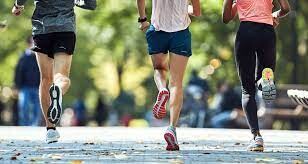
The concept behind the 30/30 fartlek workout is not to destroy you, but to give you a quality session. Most runners will use fartlek training for continuous running to keep their heart rate (HR) at a certain level to improve their aerobic endurance in the quickest way possible. Fartlek running is also one of the best ways to incorporate speedwork into your mileage.
Workout:
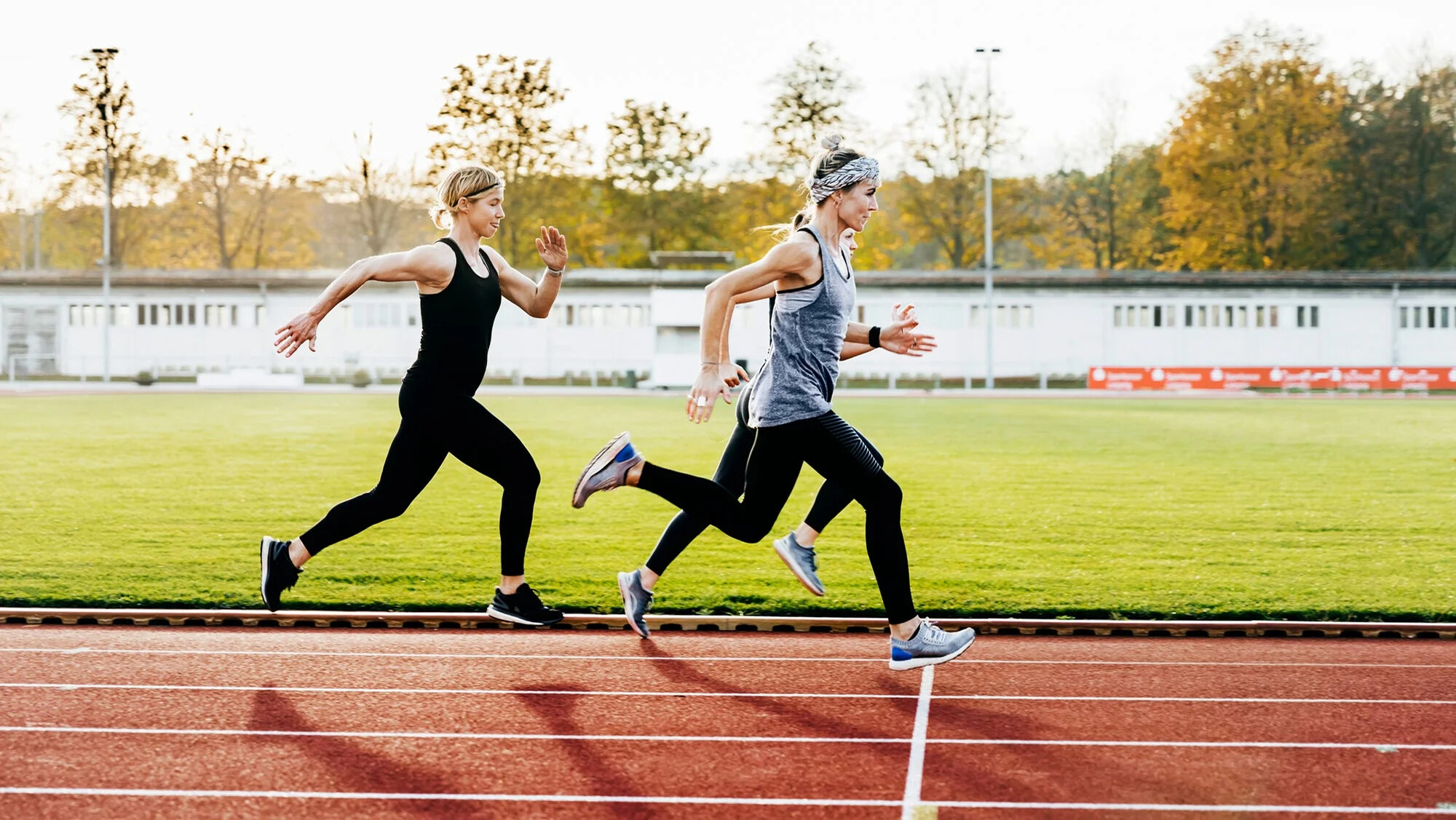
10 to 15 reps of 30 seconds fast and 30 seconds slow jog (continuous)
Each 30-second rep should be done at a comfortably fast pace (generally 5K-10K pace or faster), and the 30-second slow jog should be done at a pace slower than your easy runs.
If you need to walk between reps, you might be pushing too hard; try slowing down the pace of your fast 30s a bit.
Although the workout may seem like a lot of reps, it is only five to eight minutes in total. Doing this session once a week will quickly improve your speed and endurance, helping prepare your mind and body for faster efforts to come.
(01/19/2023) Views: 636 ⚡AMPby Marley Dickinson
Should you run early or late? A new study has surprising findings
It’s a common debate among runners–is it better to run in the morning or in the evening? A new study concluded that exercising between noon and midnight could significantly lower insulin resistance compared to activity earlier in the day.
While more research needs to be done, the study raised some interesting points for those looking to manage blood sugar and prevent Type 2 diabetes.
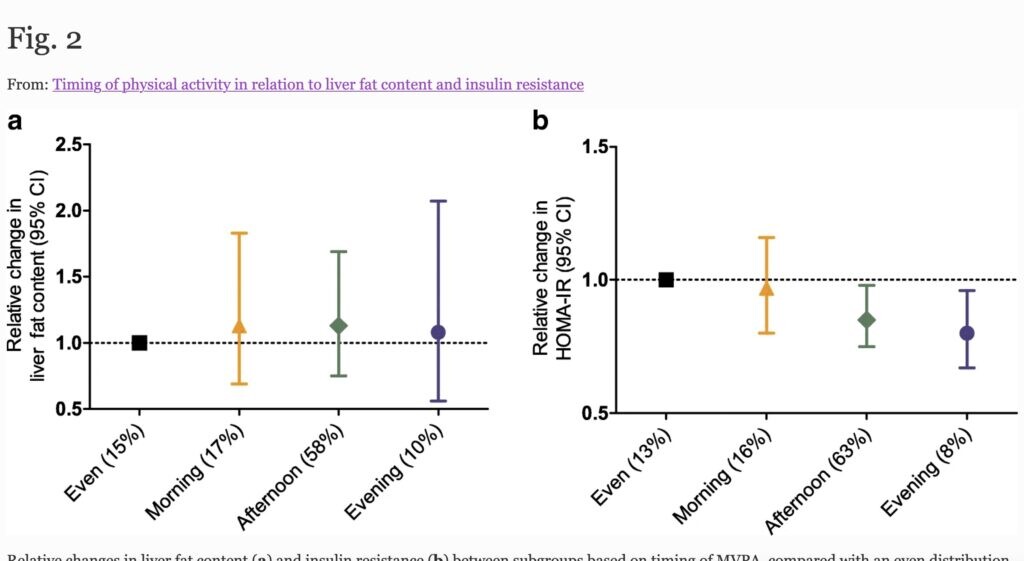
“Our aim was to investigate associations of the timing of physical activity and breaks in sedentary time with liver fat content and insulin resistance in a middle-aged population,” lead study author Jeroen van der Velde of Leiden University Medical Center told Healthline.
What is insulin resistance and why is blood sugar important?

Key to be aware of when it comes to prediabetes and type 2 diabetes, insulin resistance occurs when cells stop responding to insulin.
Food is broken down into blood sugar which then enters the bloodstream, signaling the pancreas to release insulin. Insulin helps blood sugar enter the body’s cells so it can be used for energy, and it signals the liver to store blood sugar for later use.
If a lot of blood sugar floods the bloodstream, the pancreas pumps out more insulin to get blood sugar into cells. Over time, cells stop responding to all that insulin—they’ve become insulin resistant.
The pancreas keeps making more insulin to try to make cells respond, but can’t keep up and blood sugar keeps rising. Prediabetes and type 2 diabetes are often the result of this perfect biological storm, according to the CDC.
High blood sugar is damaging to the body, and can also be a contributor to heart disease, vision loss, and kidney disease.
The study
Researchers analyzed data from a Netherlands Epidemiology of Obesity (NEO) study, which included men and women (between 45–65) who had a body mass index (BMI) of 27 or greater, meaning they were in the category of overweight or obese.
The more than 6,700 participants in the control group underwent a physical exam where blood samples were taken to measure blood glucose and insulin levels when they were fasting and after eating and were questioned about their lifestyles.
A random sample of 955 participants was given an accelerometer/heart rate monitor to use for four days and nights to monitor their movements. The day was divided into three blocks; 6 am to 12 pm, 12 pm to 6 pm, and 6 pm to midnight.
The proportion of total daily moderate-to-vigorous-physical activity (MVPA) that was recorded within each segment revealed the most active period.
The takeaway
The researchers discovered that for the participants in the study, exercising in the afternoon was linked to an 18 per cent reduction in insulin resistance compared to spreading activity throughout the day and exercise in the evening with a 25 per cent reduction.
Researchers also discovered that time spent doing moderate to vigorous physical activity reduced both liver fat content and insulin resistance.
van der Velde acknowledged that more scientific research needs to be done, and emphasized that for this study, he looked at differences in insulin resistance on a group level, among adults all within a certain cohort. Exercise at any time of the day is recommended and can be preventative for a wide variety of health problems.
(01/19/2023) Views: 679 ⚡AMPby Keeley Milne
Quick And Easy Snacks For Runners
Whether planning your snacks for a marathon or trying to upgrade your workout routine, finding the right snacks as a runner is vital to your energy levels. Your body cannot work out efficiently or heal properly if you aren’t providing the right macros.
Snacks are a quick, efficient way to fuel your body for every run, but not all snacks will be the right choice for your body. Take a look at the top quick and easy snacks for runners below.

Why Snacks Matter
The more you exercise, the more calories and nutrients your body needs to thrive. If you don’t have enough energy, you won’t be able to make it through a serious workout, or your body will start to break down muscle as it seeks additional energy sources.

Having easy snacks is essential if you’re building your workout routine, including running. You must provide calories, carbs, and other nutrients to ensure your body is supplied with energy throughout the day. Before running, after running, and even on recovery days: your body needs fuel.
Snacks also ensure you’re giving your body what it needs to grow stronger during runs.
Snacks eaten one to three times a day, depending on your training level, should include carbohydrates, fiber, proteins, and fat.
Carbohydrates give you energy and restore glycogen in the muscles. Fiber keeps you feeling full while boosting digestive processes. Proteins keep your muscles in good condition. Fat ensures your body can absorb vitamins.
#1: Veggies, Pretzels, and Hummus
An easy snack that can be customized to fit your training and diet is a plate of veggies, pretzels, and hummus. Each of these components can be included in specific proportions to add extra protein, carbs, or fiber, depending on your current needs.
Pretzels are a great source of carbohydrates that digest quickly. They also have some salt, which is good for your body’s overall hydration balance. Hummus is a good source of iron, fat, and proteins.
Carrots aren’t high in calories, but they keep you feeling full. Carrots aren’t high in calories, but they keep you feeling full. Eating carrots to prevent overeating is a common tactic.
Many veggies like carrots and celery also have high water content. Water is, of course, another essential part of your nutrition as a runner. Not all fluid intake needs to come directly from water; eating water-rich foods hydrates your body.
#2: Yogurt with Granola or Fruit
Yogurt is a fantastic food for runners. It is low in fat, high in carbs, and contains many valuable nutrients and vitamins. Additionally, many runners benefit from the probiotic effects that yogurt can have.
To make a balanced snack, try supplementing yogurt with blueberry cinnamon granola like this one or fruit. Slightly-sweet granola adds texture to the food while also upping the energy you’ll get out of your snack.
Ideally, using a flavored granola or low-sugar fruit is better than choosing a flavored yogurt. Flavored yogurts contain a lot of added sugars, which isn’t always a good choice.
#3: A Topped Toast
Eating a slice of toast with a protein-rich topping is an excellent snack for pre-running or recovery. Runners tend to use peanut butter as it is very high in healthy fat and protein-rich. Whole-wheat bread is the preferred choice for long-lasting energy, but you can also skip the bread altogether and eat these toppings with a banana or apple. It’s essential to be mindful when choosing your peanut butter. All-natural peanut butters contain less added sugar and limit hydrogenated oils, which can be hard on your body. Opt for the more natural peanut butter and nut butter options when possible.
#4: Energy Bars
Finally, let’s discuss the easiest and quickest choice: energy bars.
Selecting a premade bar instead of making your snack can feel like a cop-out. Still, it’s important to remember that energy bars are often specifically formulated to provide the right blend of nutrients, energy, and enjoyment for runners like you.
Energy bars come in many flavors and varieties. You’re good to go if you select bars that are not overloaded with added sugars. You can find high-carb, low-carb, protein-rich, and other types of bars on the market today. Don’t flounder trying to find the perfect snack if you don’t have time to meal prep. It’s okay; energy bars are a fantastic and easy option for runners.
(01/18/2023) Views: 612 ⚡AMPby Colorado Runner


